1. Namibia: Orange River, Ai Ais. Fish River Canyon National Park and Gondwana Canon Park – 2015
From the border crossing the journey continued westward on the Namibian bank of the Orange River… see the blog page about Namibia for pictures of the Orange River.
Orange river
The Orange River (Afrikaans/Dutch: Oranjerivier), Gariep River, Groote River or Senqu River is the longest river in South Africa. It rises in the Drakensberg mountains in Lesotho, flowing westwards through South Africa to the Atlantic Ocean. The river forms part of the international borders between South Africa and Namibia and between South Africa and Lesotho, as well as several provincial borders within South Africa. Except for Upington, it does not pass through any major cities. The Orange River plays an important role in the South African economy by providing water for irrigation, as well as hydroelectric power. The river was named by Robert Jacob Gordon after the Dutch Royal House.
History
Name of the river
The earliest pre-colonial inhabitants called the river Gariep’. An early Dutch name for the river was Groote Rivier meaning “Great River.” The river was named the Orange River by Colonel Robert Gordon, commander of the Dutch East India Company garrison at Cape Town, on a trip to the interior in 1779. Gordon named the river in honor of William V of Orange. A popular but incorrect belief is that the river was named after the supposedly orange color of its water, as opposed to the color its tributary, the Vaal River ( ‘vaal’ being Afrikaans for pale or grey). Since the end of apartheid, the name “Gariep” has had greater favour in official correspondence in South Africa, although the name “Orange” has greater international recognition. In Lesotho, where the river rises, it is known as the Senqu River.
After traveling a few kilometers with the river bank left and on the other side table wine grapes- and citrus plantations, irrigated with river water, the river valley was abandoned and travel proceeded north. The journey then continued through a dry landscape with large table mountains as backdrop. Never knew that besides the Table Mountain in Cape Town, there were so many other table mountains. They seem to be the oldest mountains in the world.
The Wandelgek now reached the point where the paved road ended and the gravel and dirt roads of Namibia started, on which he drove for over a thousand kilometers.
Besides the nice warm temperature, well above 20 degrees Celsius, there is another important difference with South Africa which became immediately apparent. In South Africa, De Wandelgek already saw some wildlife, but it was always within a National Park. That’s because these parks are fenced and there is no wildlife allowed outside the parks.
In Namibia are some big national parks too, but those are not always fenced or fully fenced, allowing wildlife to be spotted from the roads through all of Namibia. How cool is that! 🙂
The Wandelgek continued to go north towards the Fish River Canyon National Park. The truck drove to the small town of Ai Ais, at the bottom of the canyon, which was a hot spring that produced nearly boiling water and which was used to heat an outdoor pool. There were also groups of baboons around. The Wandelgek was spending the night at this place.
There were rooms on the first floor of a large hall with a thermal bath.
After a bit of swimming in that warm water of the outdoor pool, surrounded by the walls of the canyon and by palm trees, there was a very spectacular something planned for the evening. A journey to a spectacular view point over the Fish River Canyon.
Before we left, our truck named Karen, was expertly disected by our travel guide in all it’s detail and hidden advantages, mainly consisting of a surplus of cargo space, proper chairs and … a very good suspension, ideal for racing very comfortable over the rough gravel and dirt roads of Namibia.
On the road to the Fish River canyon, The Wandelgek saw different strange plants in the landscape. One was the Kokerboom (this tree has a long bare tube-like stem which splits in to branches towards its crown. These branches wear thick leaves but only at there utmost ending. The trunk is thick and therefore protects the tree against the hot, dry climate. The Kokerboom is actually akin to the Aloë Vera, only is it much bigger. It is a kind of succulent and you can see this when noticing its thick petals …
Quiver Tree or Kokerboom
Aloe dichotoma (the quiver tree or kokerboom) is a tall, branching species of aloe, indigenous to Southern Africa, specifically in the Northern Cape region of South Africa, and parts of Southern Namibia.
Naming
Known as Choje to the indigenous San people, the quiver tree gets its English common name from their practice of hollowing out the tubular branches of Aloe dichotoma to form quivers for their arrows. The species name “dichotoma” refers to how the stems repeatedly branch into two (“dichotomous” branching) as the plant grows.
Distribution and conservation
One of the few examples of spontaneous forests of A. dichotoma is the Quiver Tree Forest, about 14 km north of Keetmanshoop, in Namibia. Another is located in the Northern Cape of South Africa at Gannabos.
Throughout much of its range this species is in decline. Modeling of Aloe dichotoma in South Africa and Namibia has contributed to understanding the needs of protected areas in response to climate change. Modelled range declines in this species due to climate change have recently been confirmed by field surveys.
Cultivation
Aloe dichotoma is cultivated in arid areas around the world, for use in landscaping. The slow growth rate and relative rarity of the plant make it a particularly expensive specimen.
In cultivation it requires extremely well-drained coarse mineral soil, full sun, good aeration and extremely little water – primarily in the winter (as it mainly occurs in winter rainfall desert).
It can be propagated from seed and (with more difficulty) from cuttings or truncheons. Cuttings need to be thoroughly dried for several weeks in a shaded area, before being planted.
Karas Euphorbia Euphorbia gregaria (Karasmelkbos)
There were shrub bushes too. These bushes were heavy and were full of poisonous white karas milk. There was a group of travelers journeying through Namibia and in the evening they made a fire against the cold, but there was little or no combustible material, except these bushes, which they threw on the fire. As they sat around the fire they inhaled the poisiness smoke and in the morning, pretty much everyone had deceased from poisoning.
The Wandelgek kept a safe distance from the weird shrub bushes and then drove on to the Fish River Canyon…
Arriving at the canyon, De Wandelgek took ample time to let sink in this amazing landmark of Namibia. The views over the canyon are truly spectacular and so impressive that it silences you. In the rainy season the Fish River carves itself through the canyon, but now it had almost dried up so there was a broken ribbon of water pools left, that meanders between the high cliffs where you see all the layers out of which the African continent is composed. After having taken some time to make beautiful pictures, it was time for a beautiful walk along the canyon rim to another viewpoint from where the sunset could be seen. Along the way there were the most beautiful panoramas of the canyon and The Wandelgek saw another lonely Quiver Tree. The moon was already visible in the sky. At the viewpoint we all took our bottles of Cape red or white wine, purchased in Springbok and on a long table we had some crackers and cheese. While enjoying a snack and a nice glass of red wine, The Wandelgek watched the sunset over the canyon. The distant mountains colored deeper red and the moon became better visible in the rapidly darkening night sky, and it quickly became much colder. We finally ended up in the desert and that was hot during the day and cold at night.
Fish River Canyon
The Fish River Canyon (Afrikaans: Visrivier Canyon or Visrivier Afgronde, German: Fischfluss Canyon), is located in the south of Namibia. It is the largest canyon in Africa, as well as the second most visited tourist attraction in Namibia. It features a gigantic ravine, in total about 100 miles (160 km) long, up to 27 km wide and in places almost 550 meters deep.
The Fish River is the longest interior river in Namibia. It cuts deep into the plateau which is today dry, stony and sparsely covered with hardy drought-resistant plants. The river flows intermittently, usually flooding in late summer; the rest of the year it becomes a chain of long narrow pools. At the lower end of the Fish River Canyon, the hot springs resort of Ai-Ais is situated.
Public view points are near Hobas, a camp site 70 km north of Ai-Ais. This part of the canyon is part of the Ai-Ais/Richtersveld Transfrontier Park. The other 90 km of this canyon are privately owned.
The canyon is located on the lower reaches of the Fish River. This river carries no year-round water and is not navigable. The water is orange colored. The canyon begins near the village Seeheim and ends at Ai-Ais. The river then flows into the Orange River along the border with South Africa.
The 90-kilometer trail through the gorge is one of the most popular hiking trails in Southern Africa. However, it’s a tough walk, often in very high temperatures. It is also done to trail running in the Fish River Canyon. The South African runner Ryan Sandes finished the walk in 2012 in less than seven hours.
After drinking the wine, The Wandelgek drove back to Ai Ais for a good sleep, dreaming of the stunning landscapes of southern Namibia.

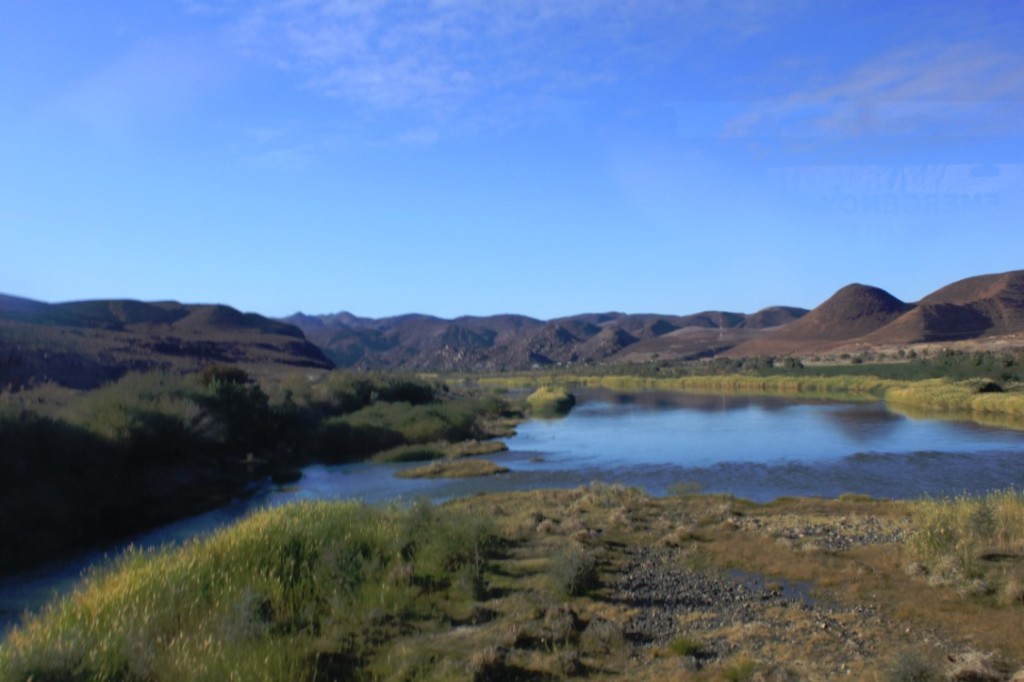
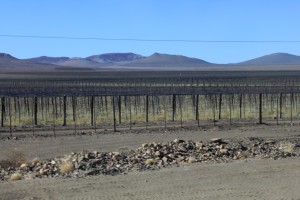
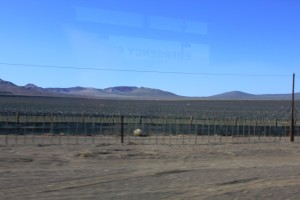
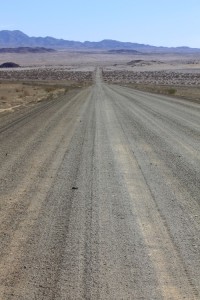
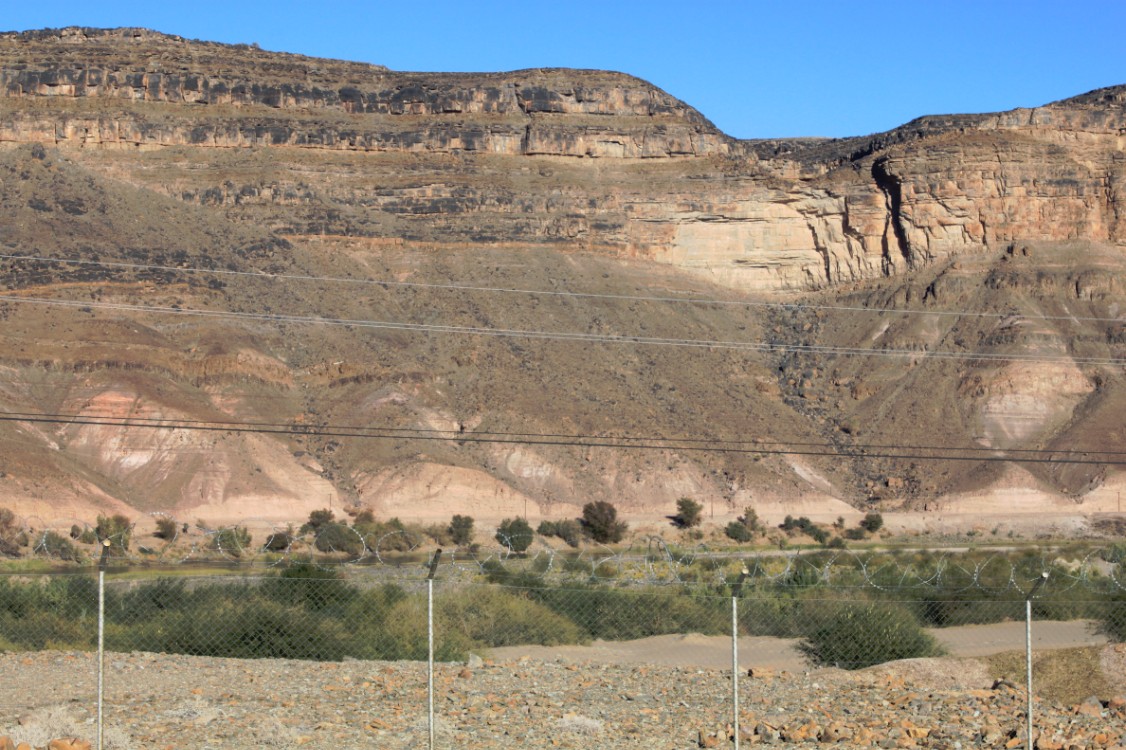
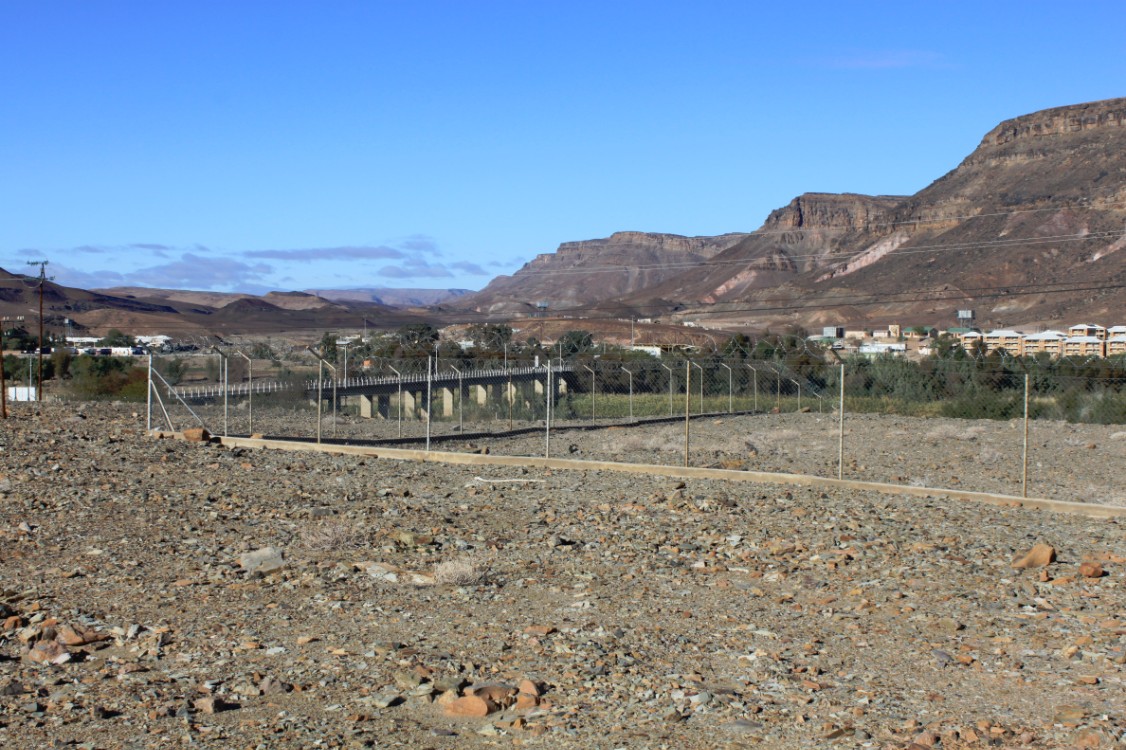
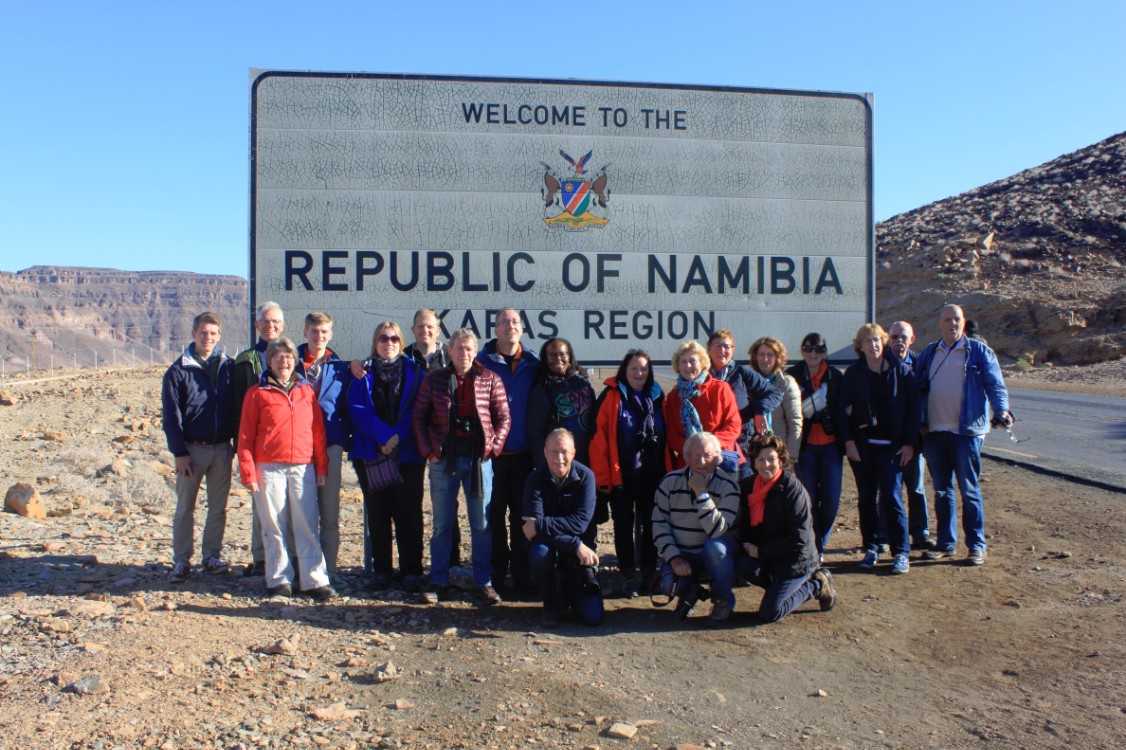
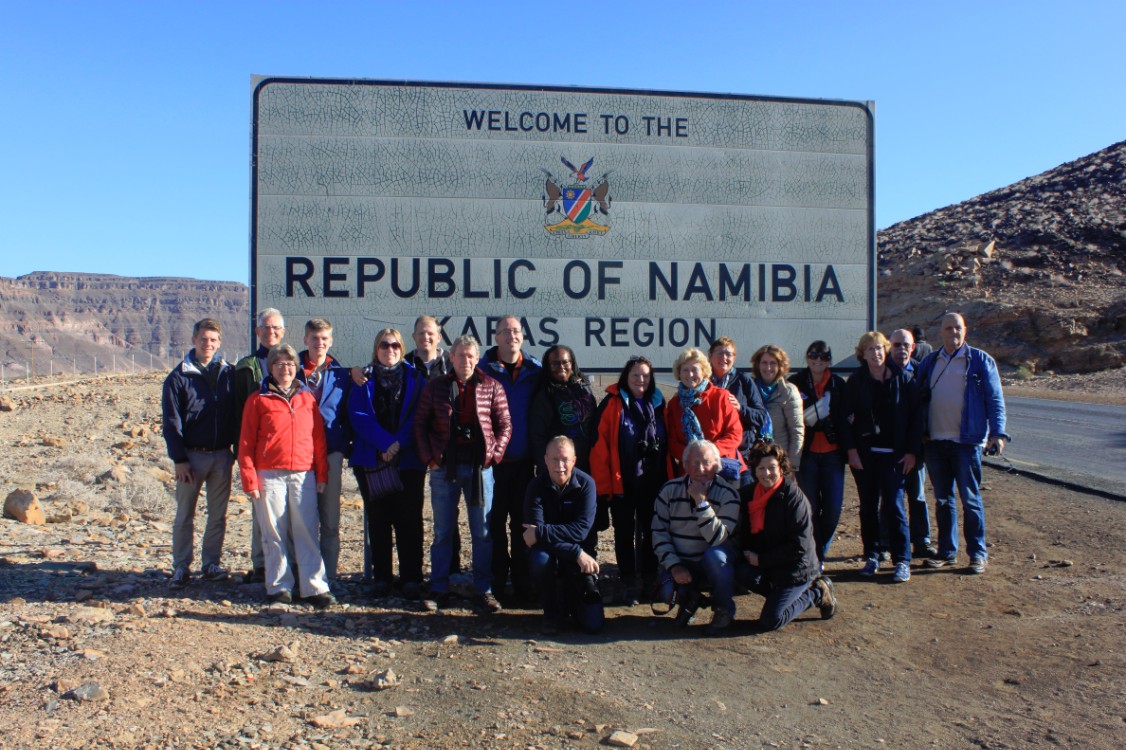
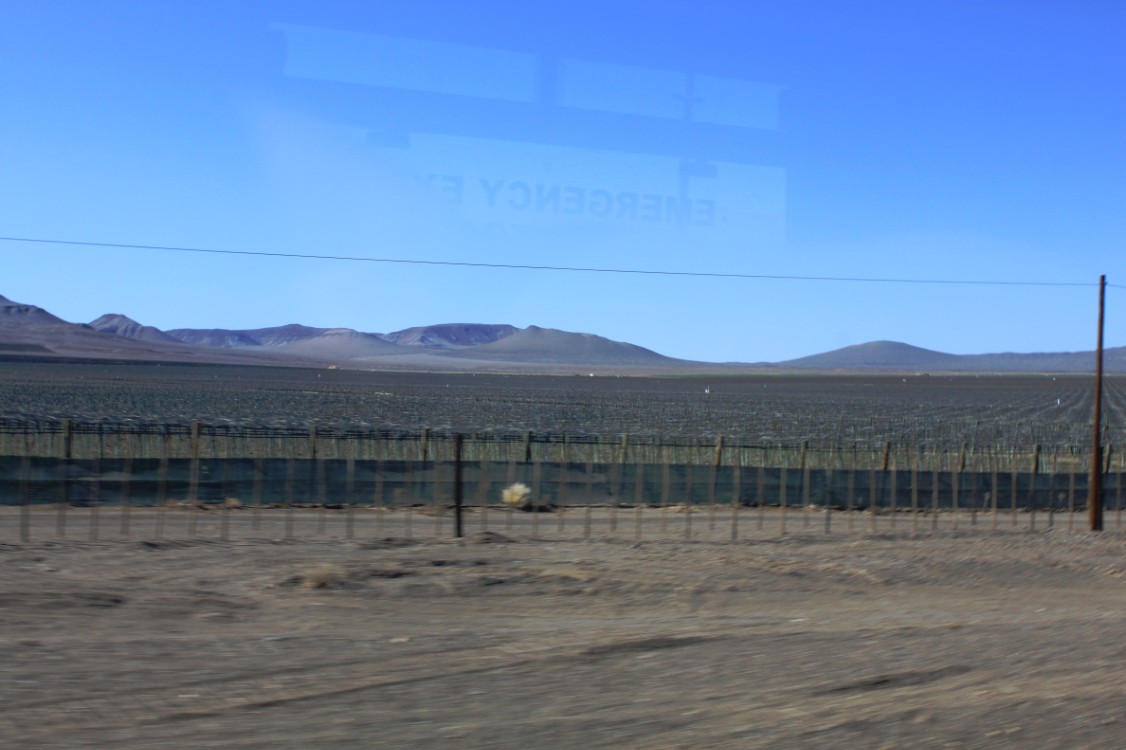
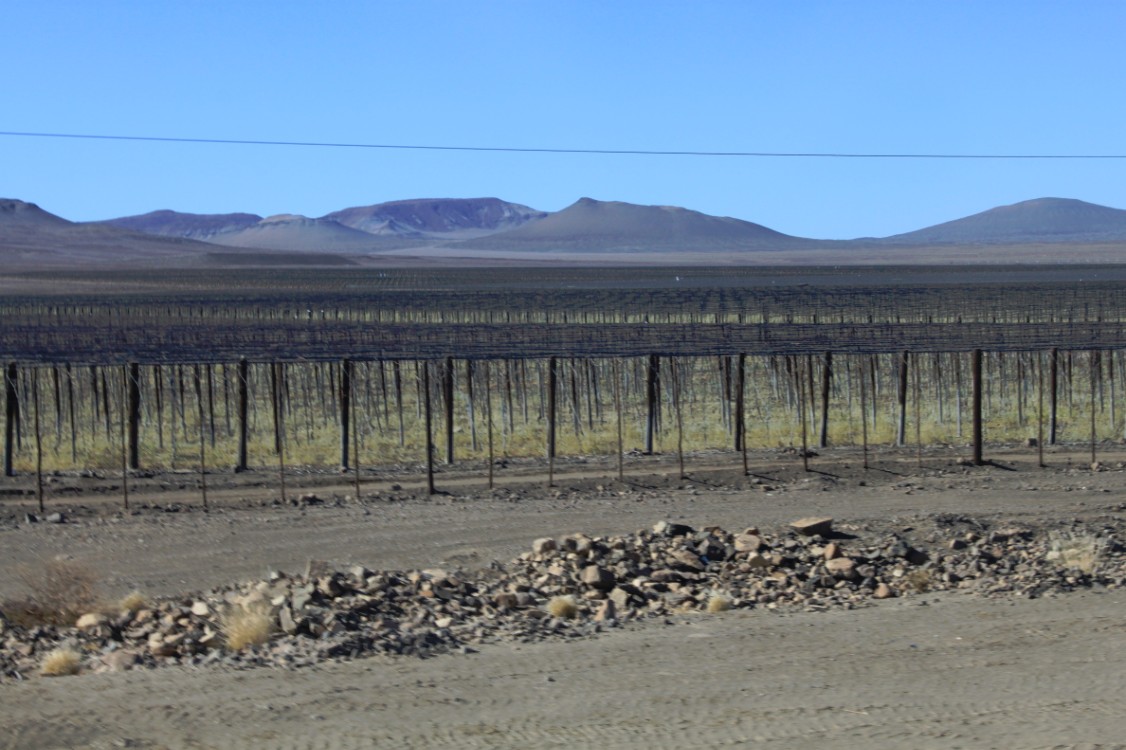
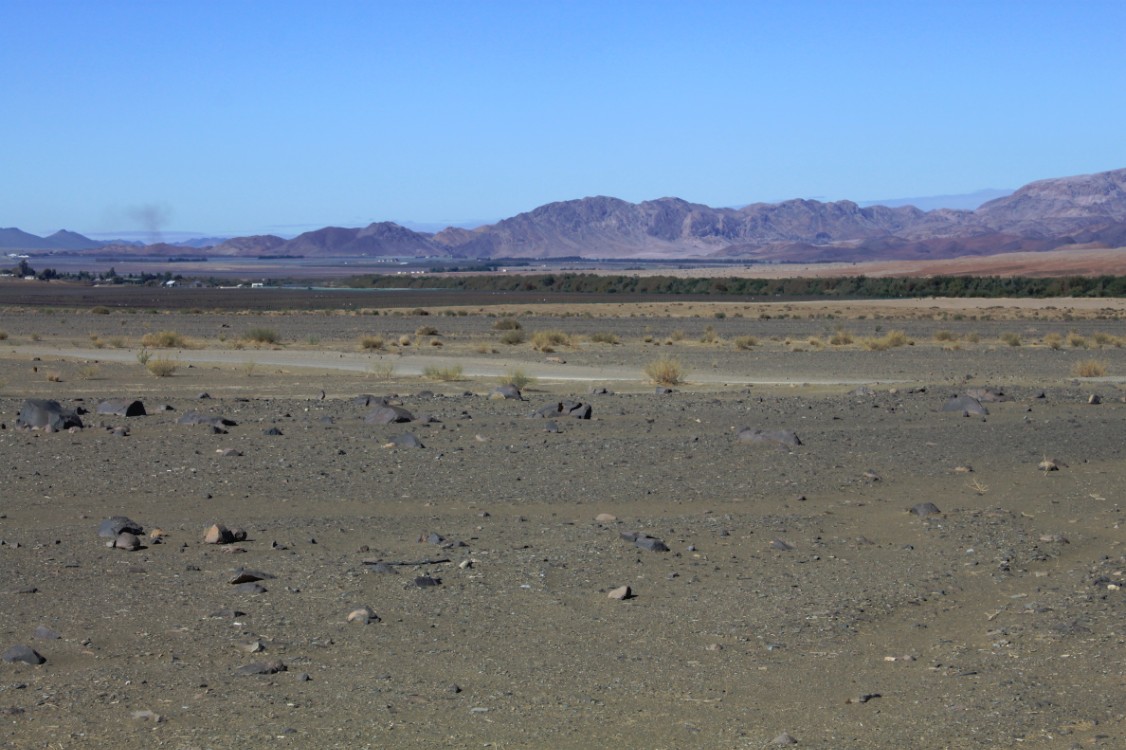
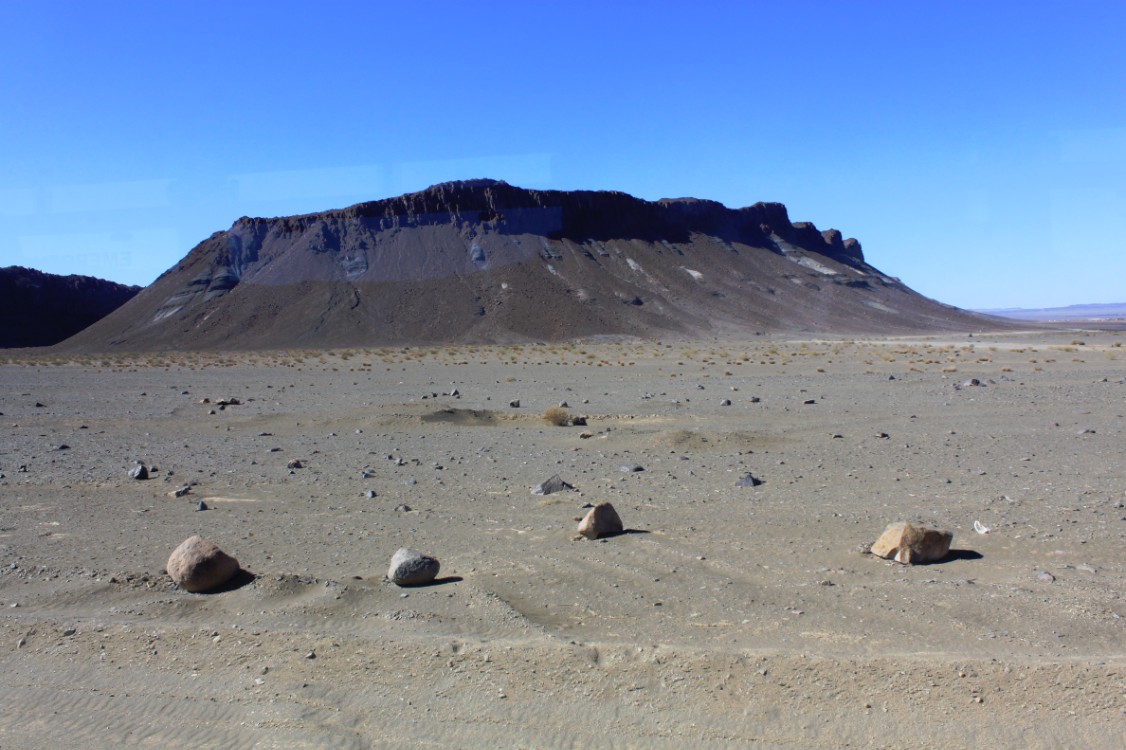
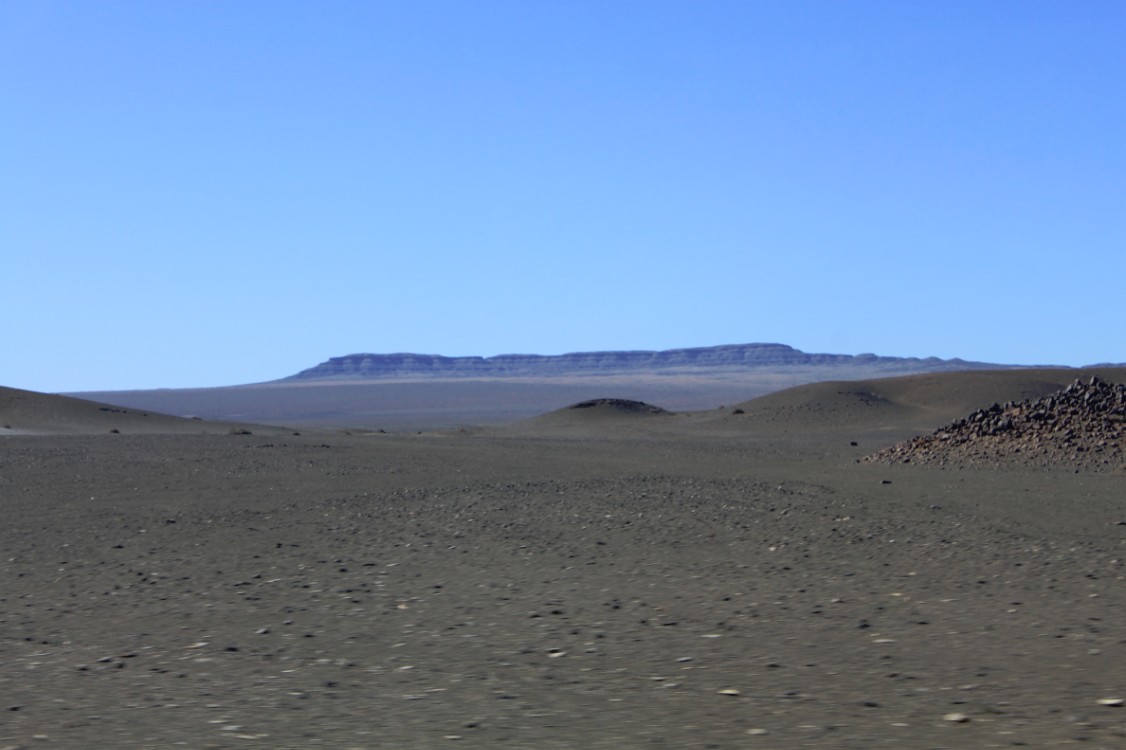
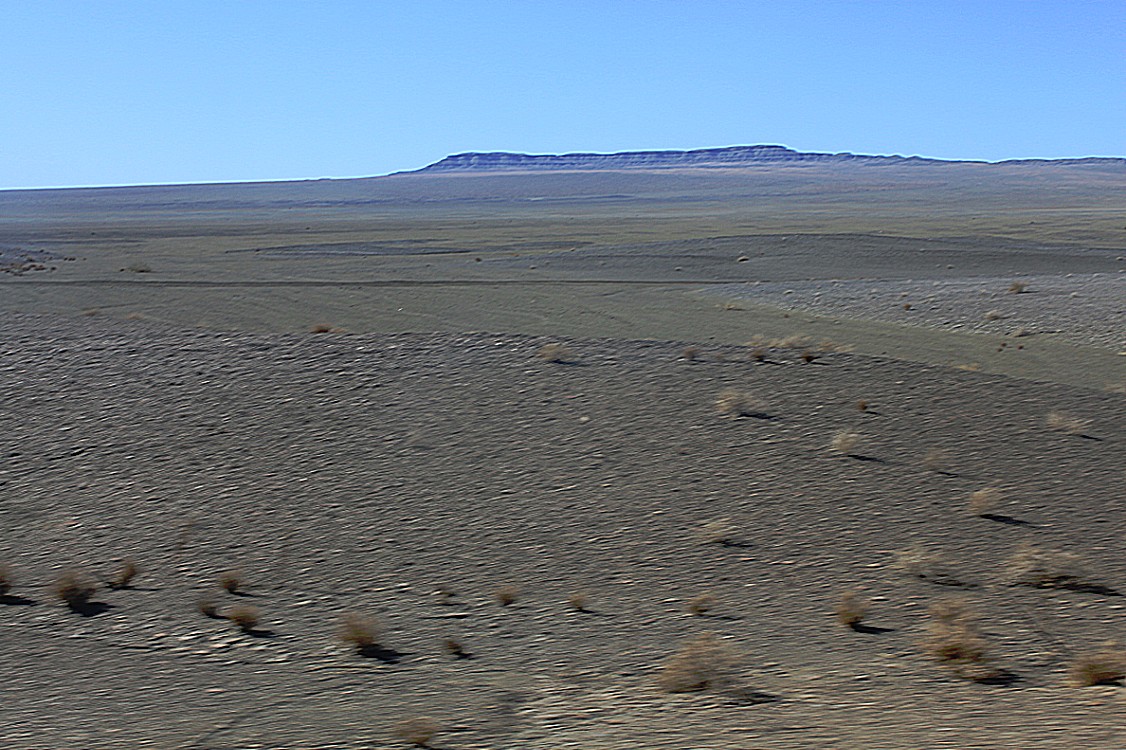
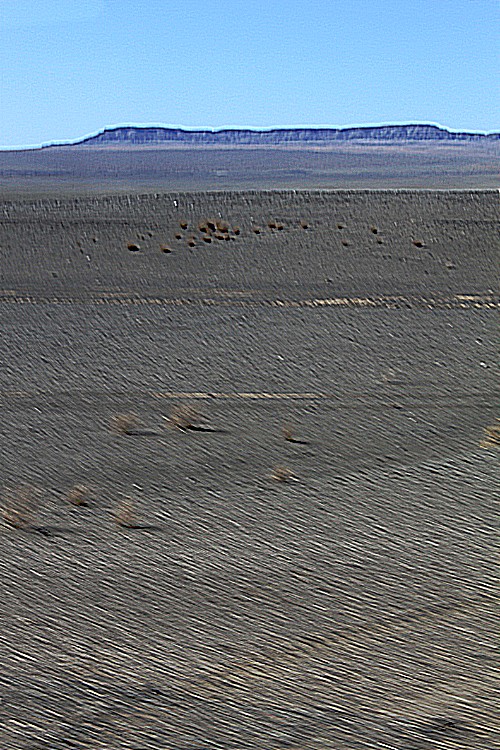
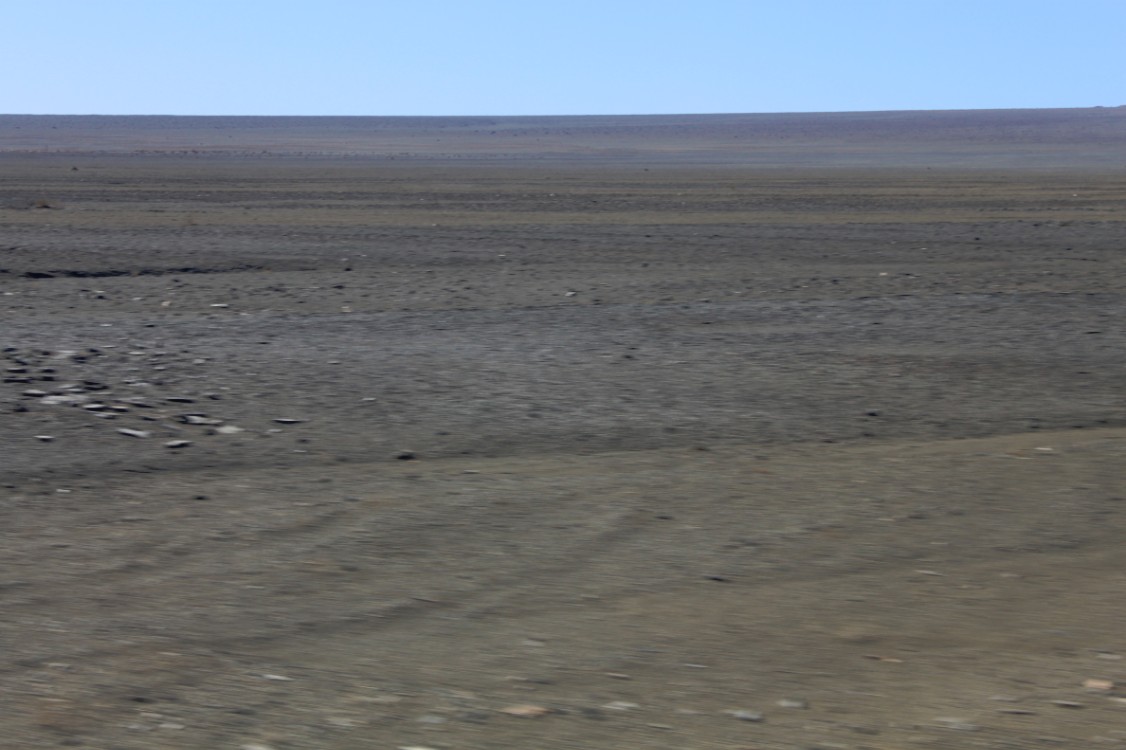
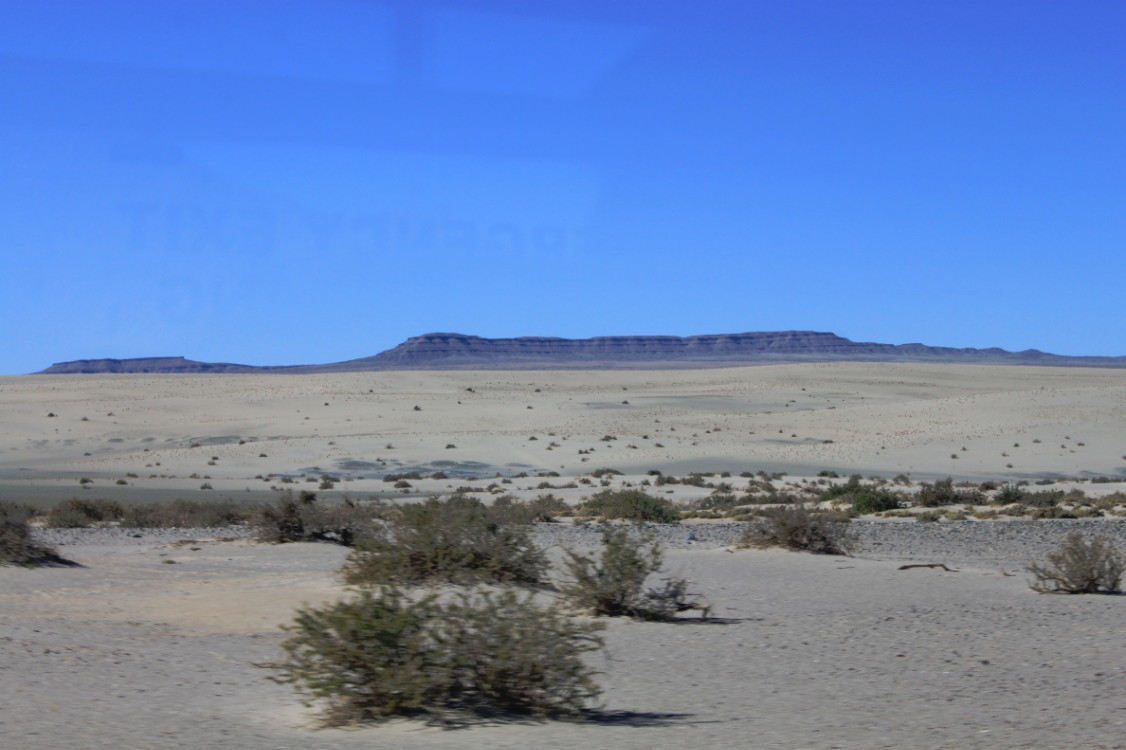
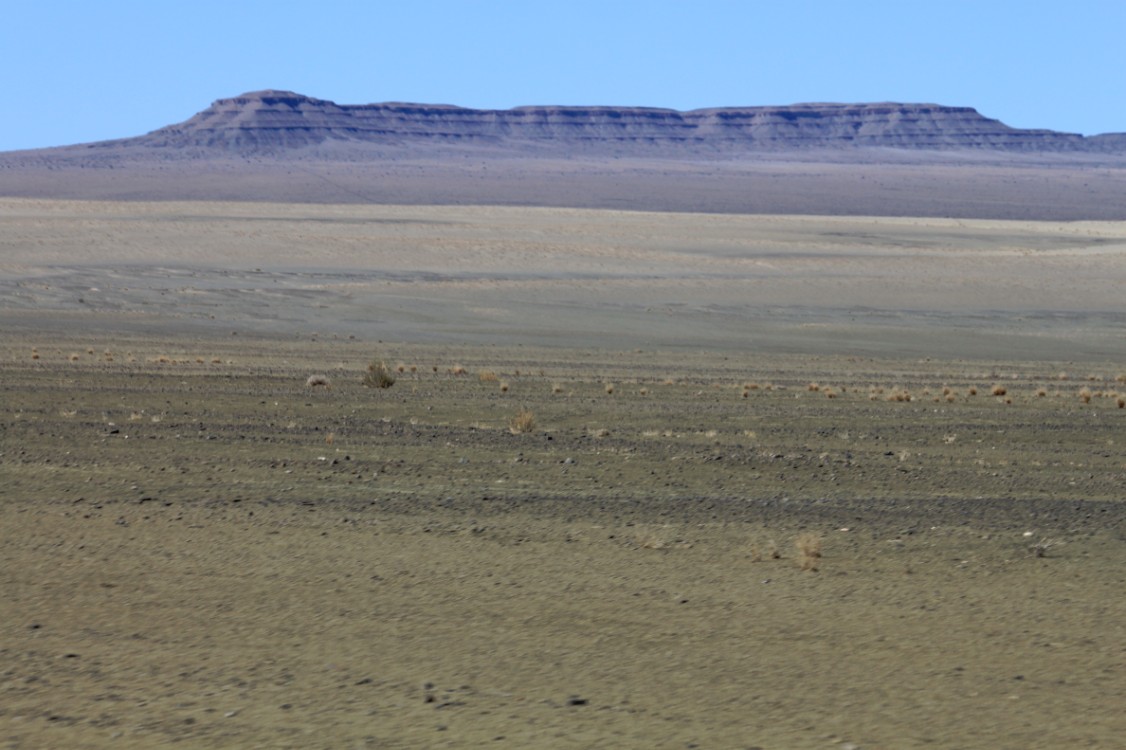
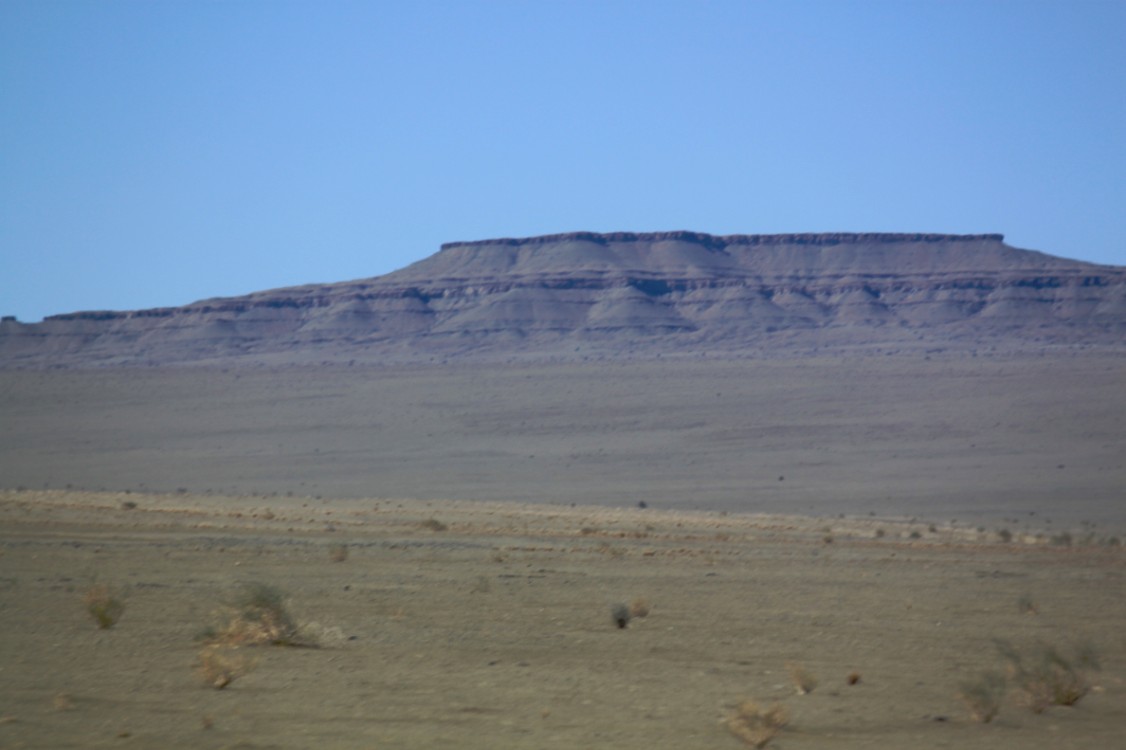
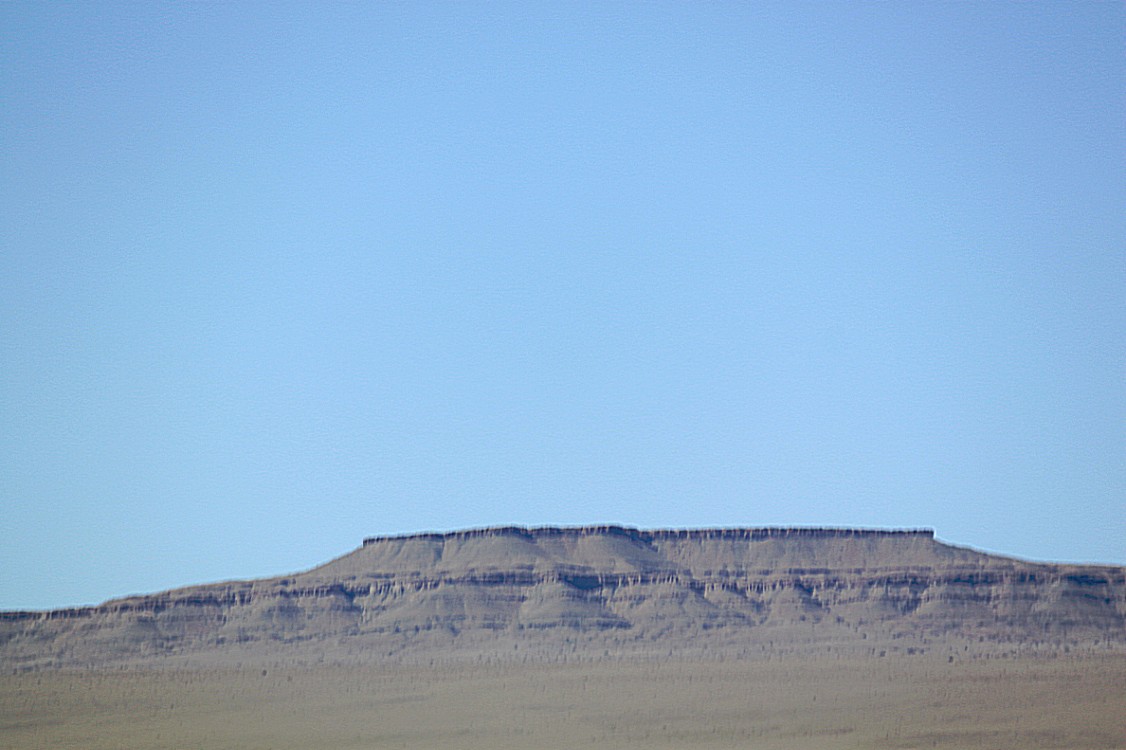
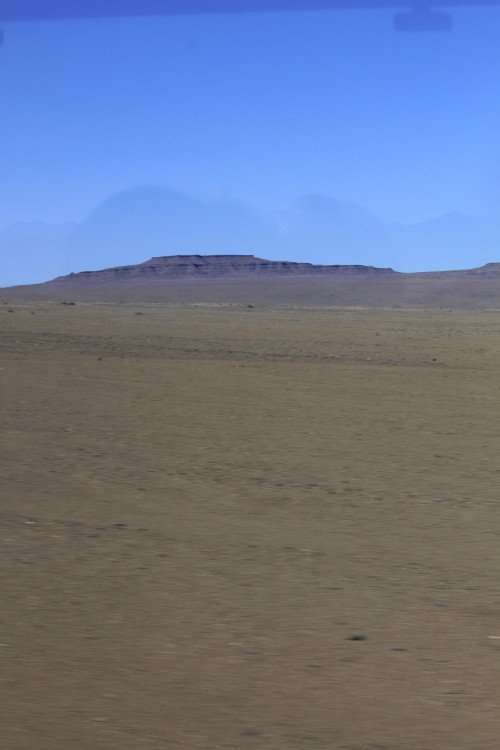
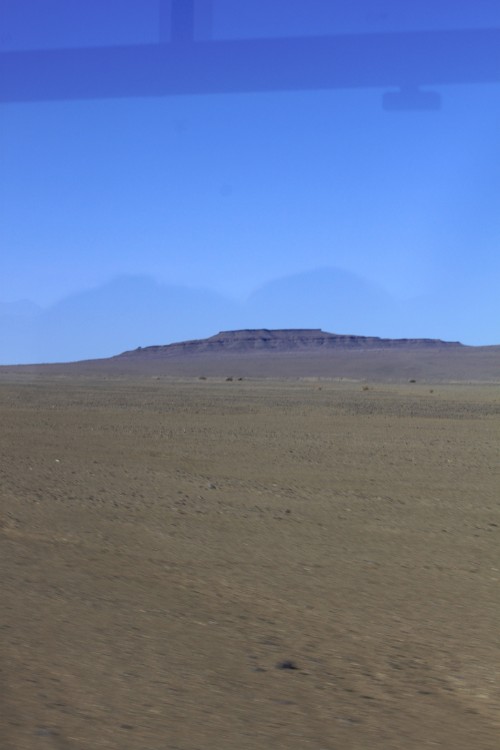
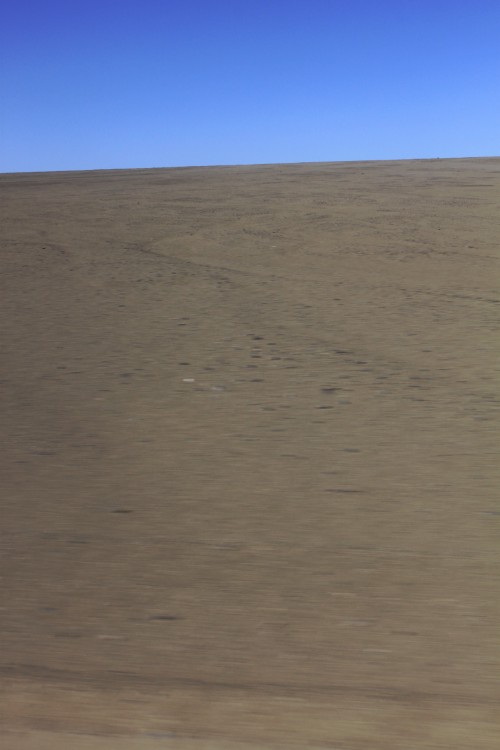
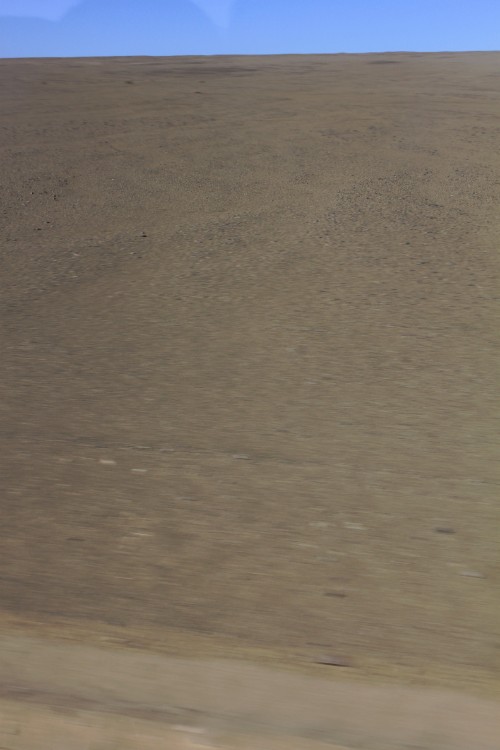
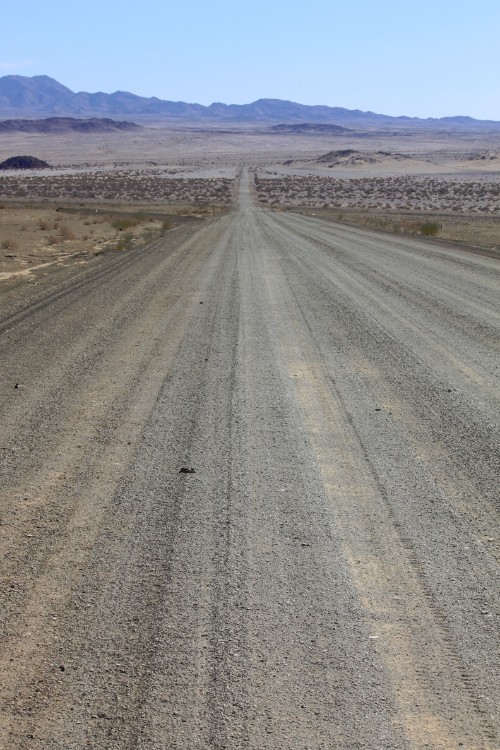
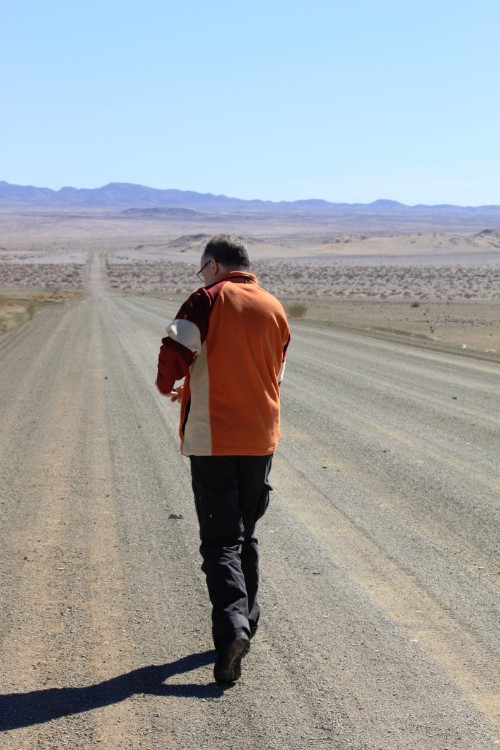
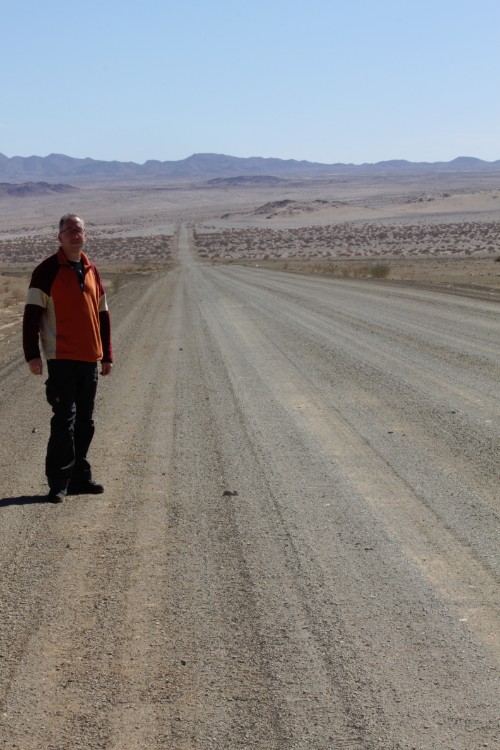
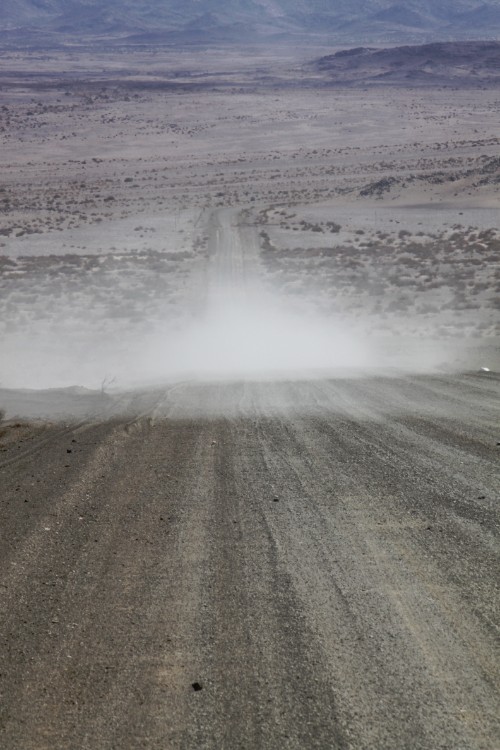
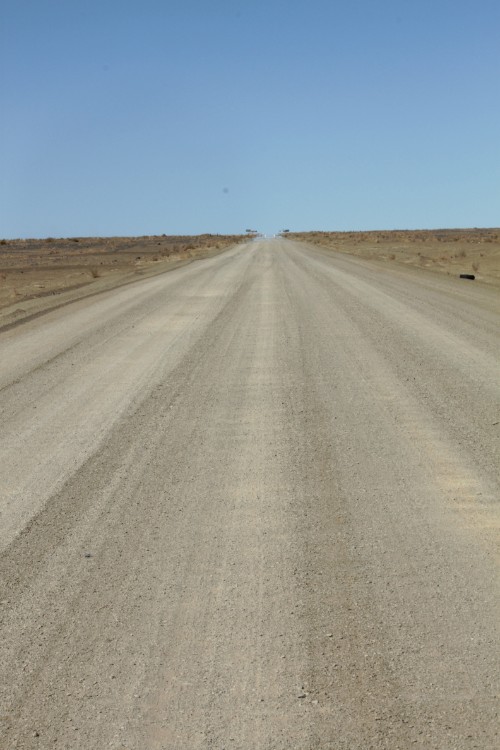
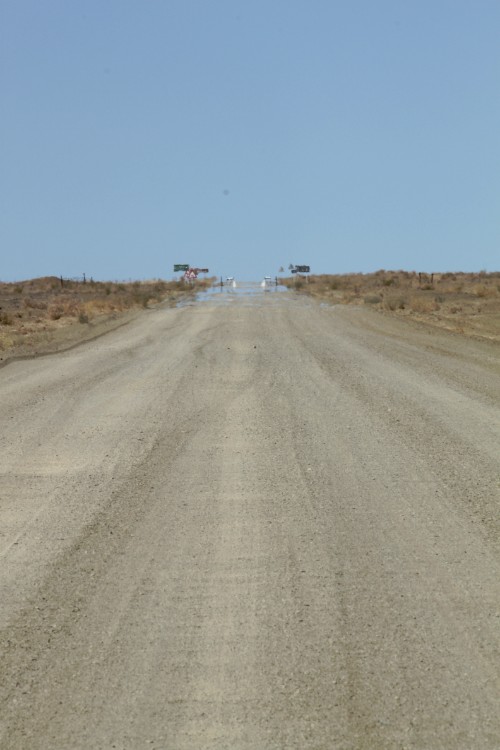
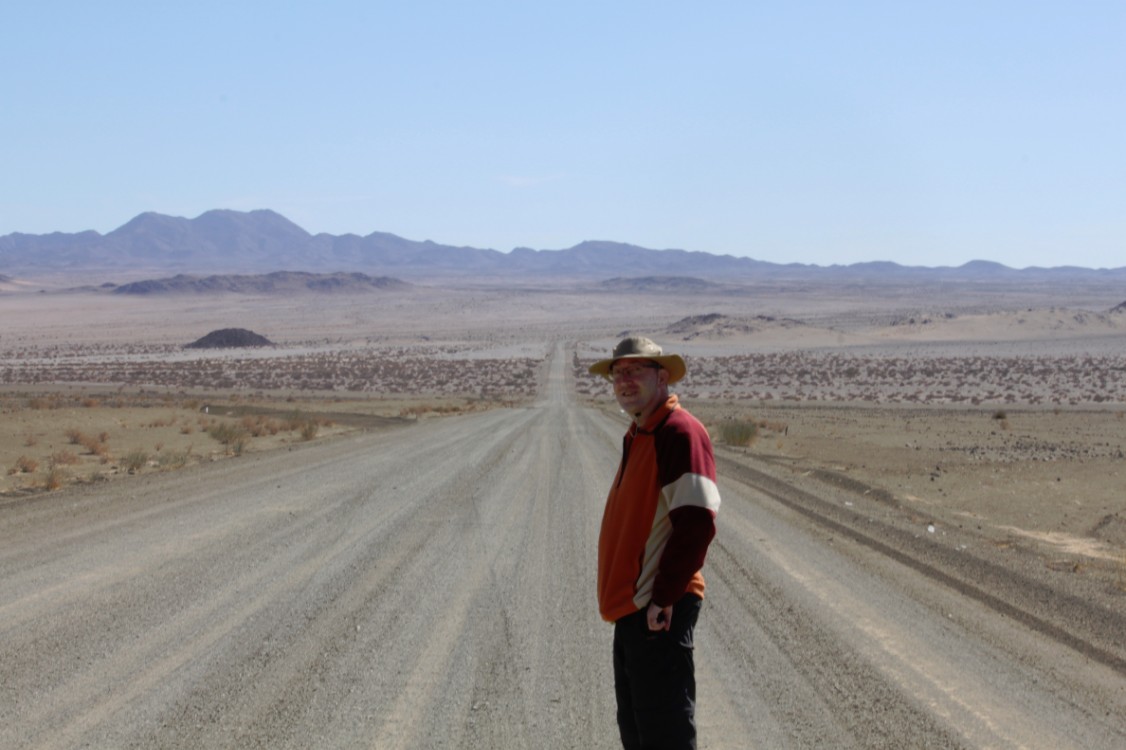
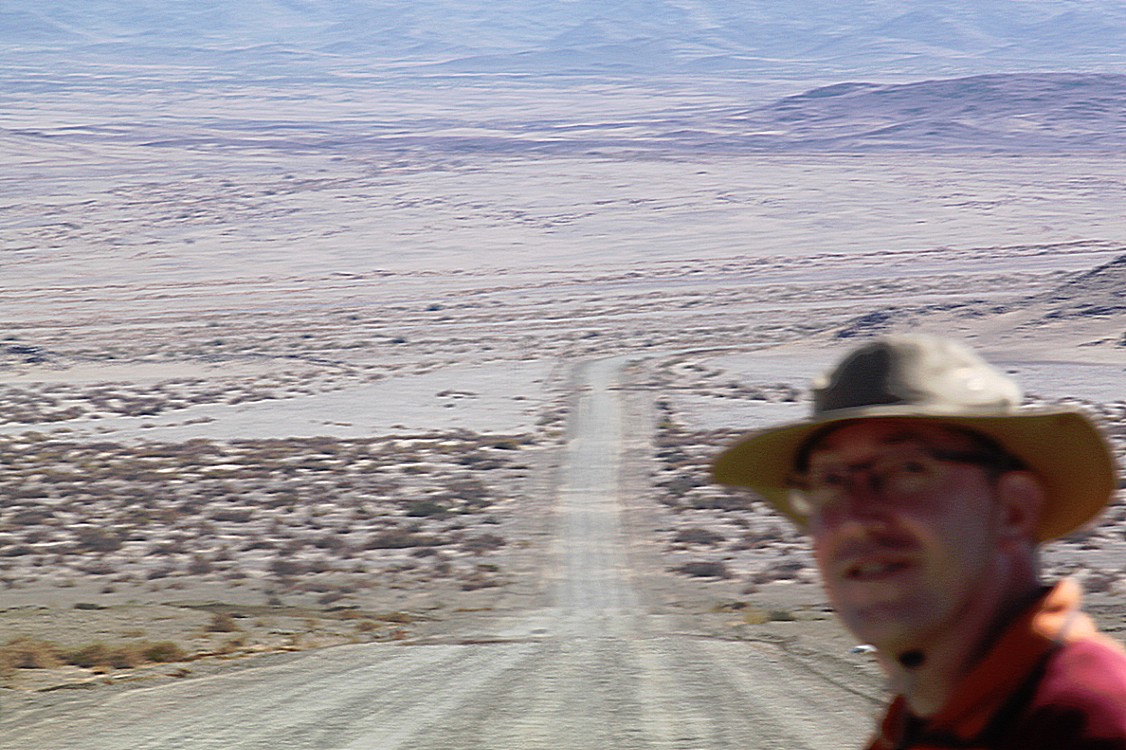
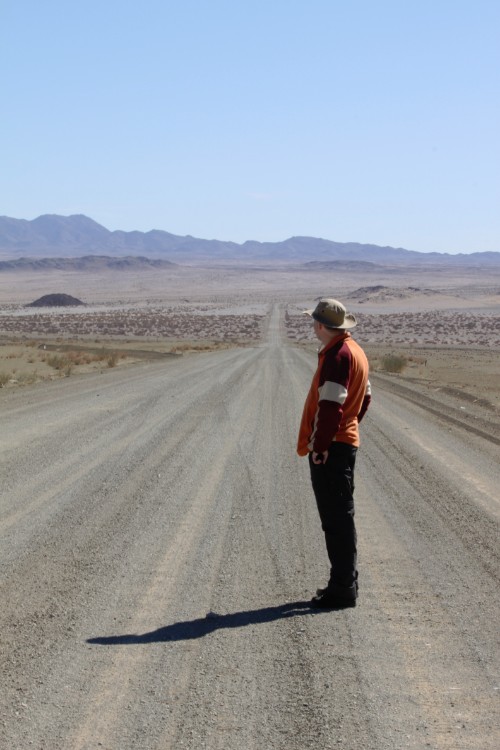
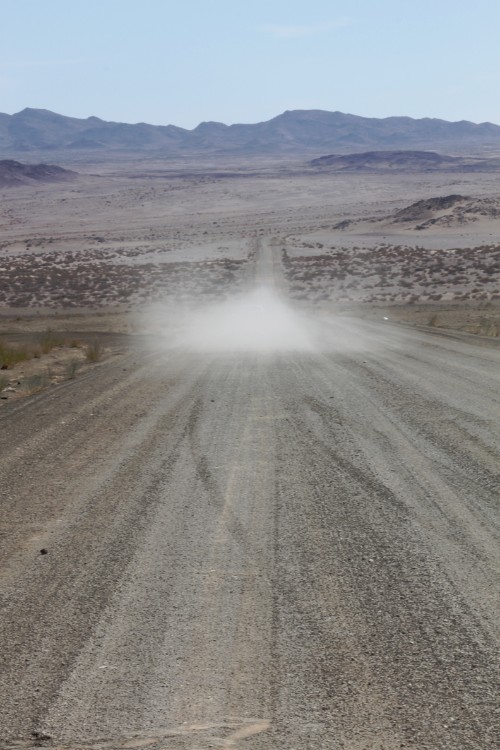
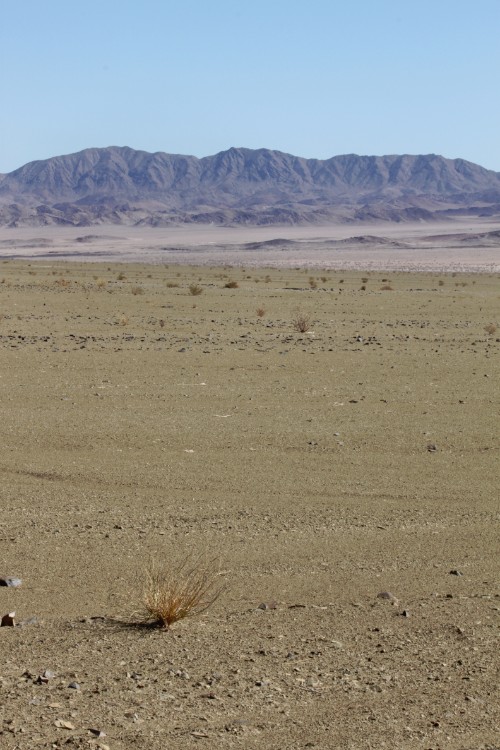
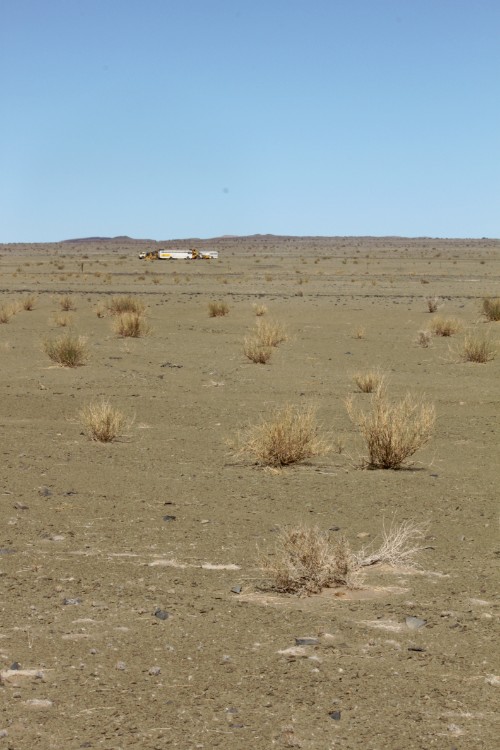
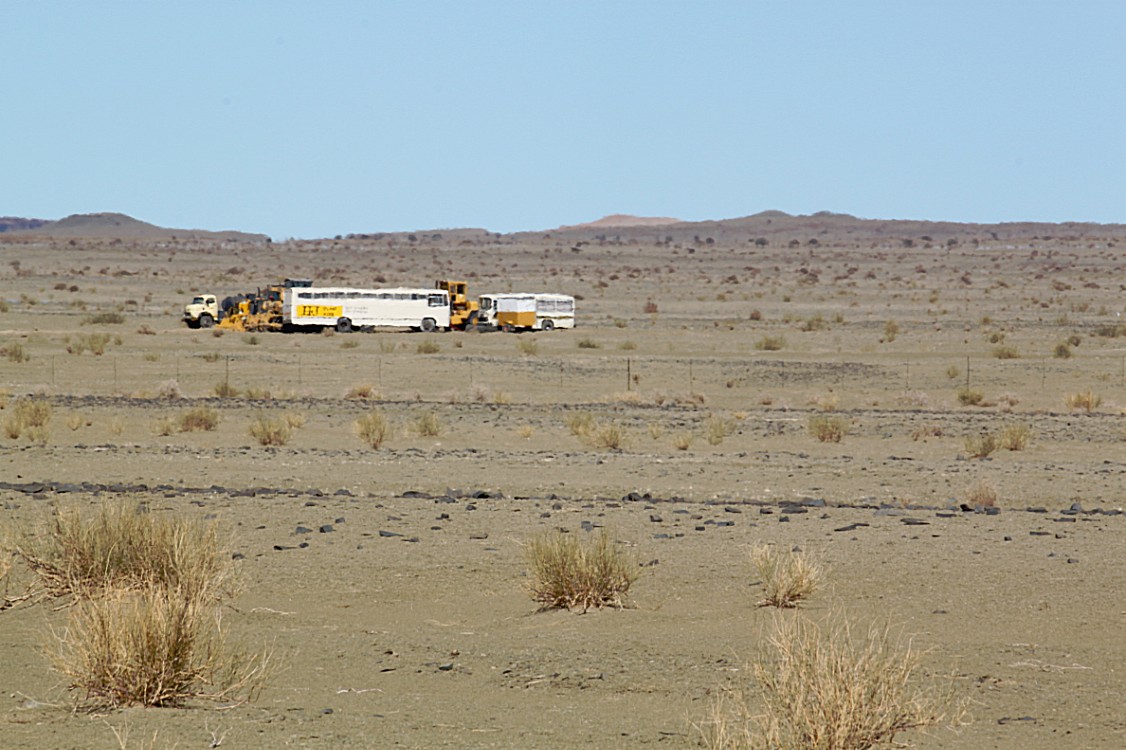
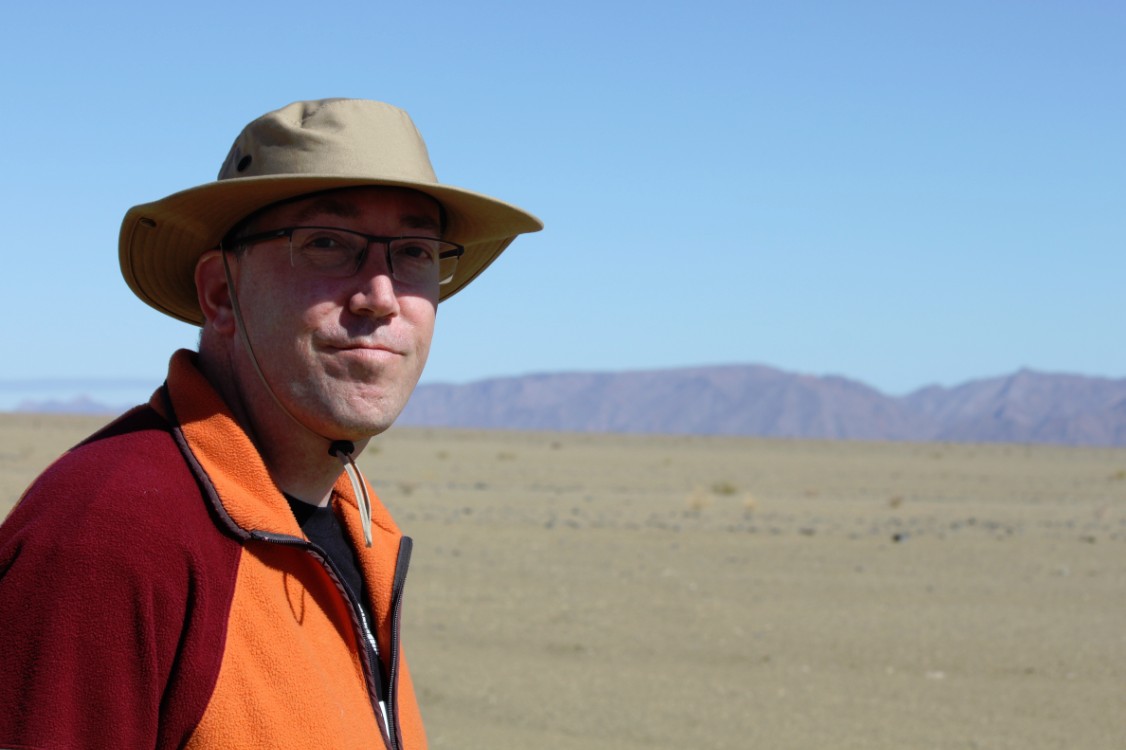
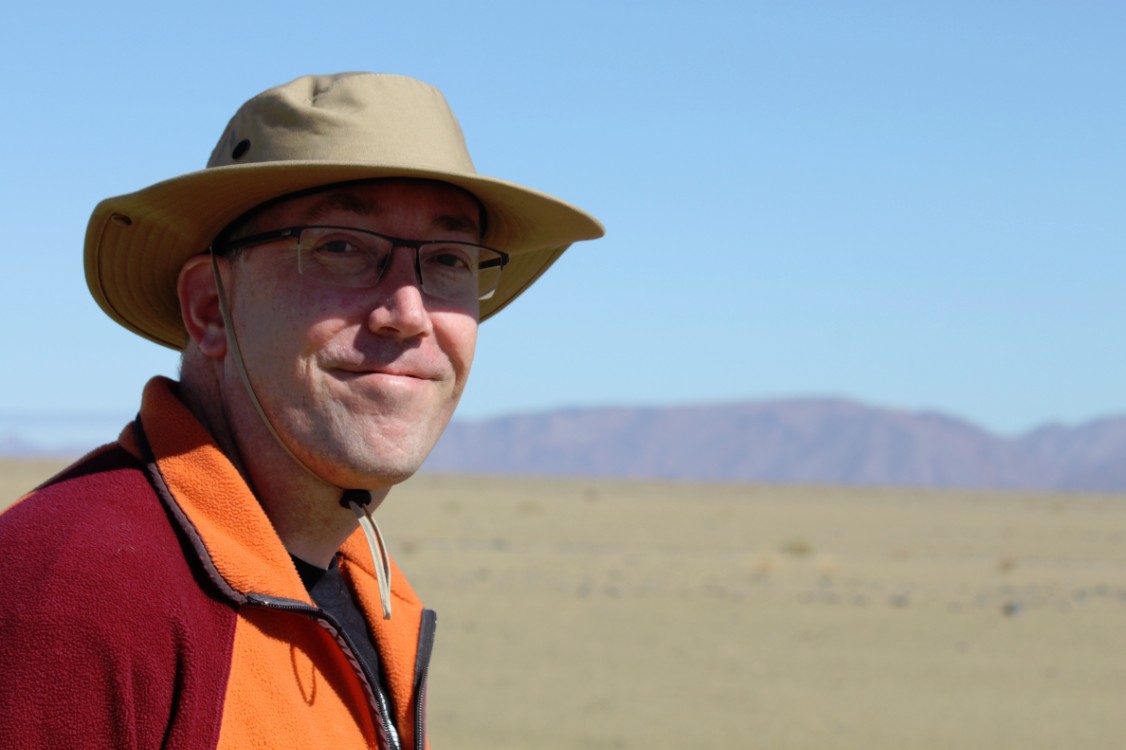
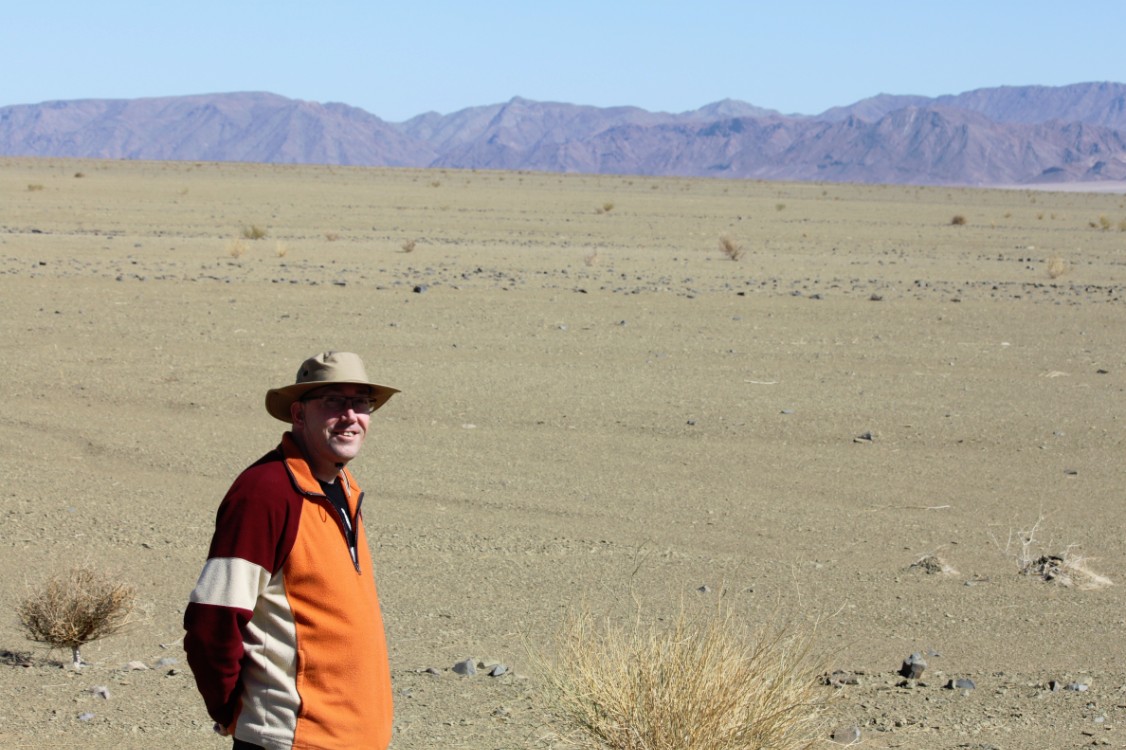
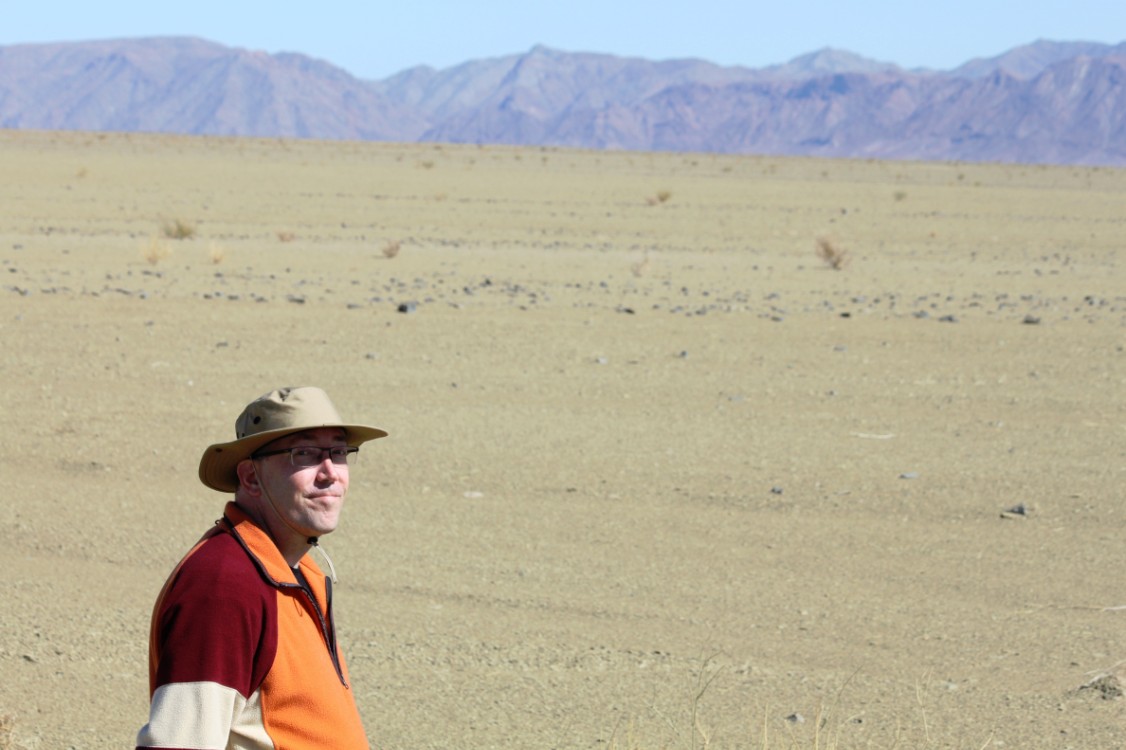
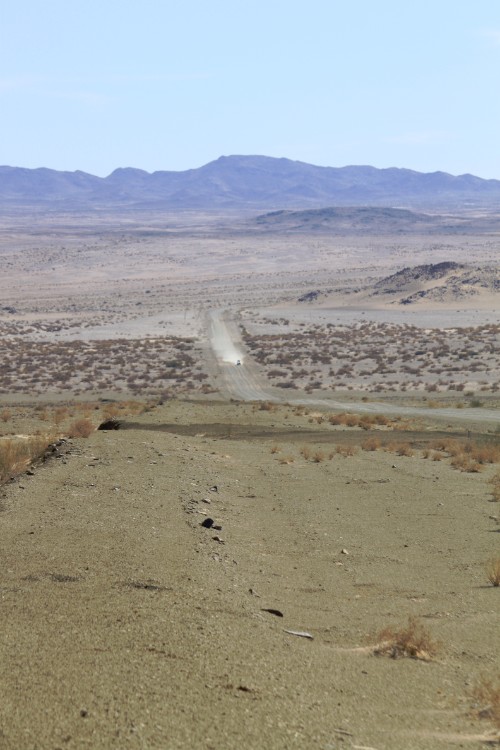
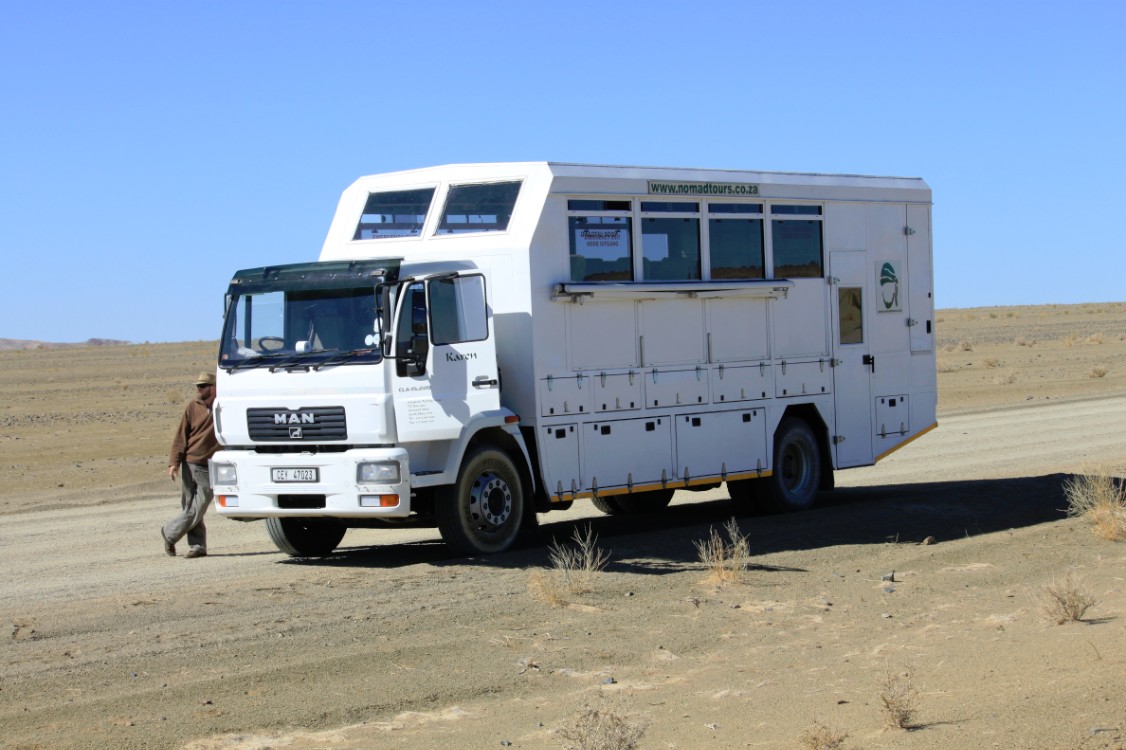
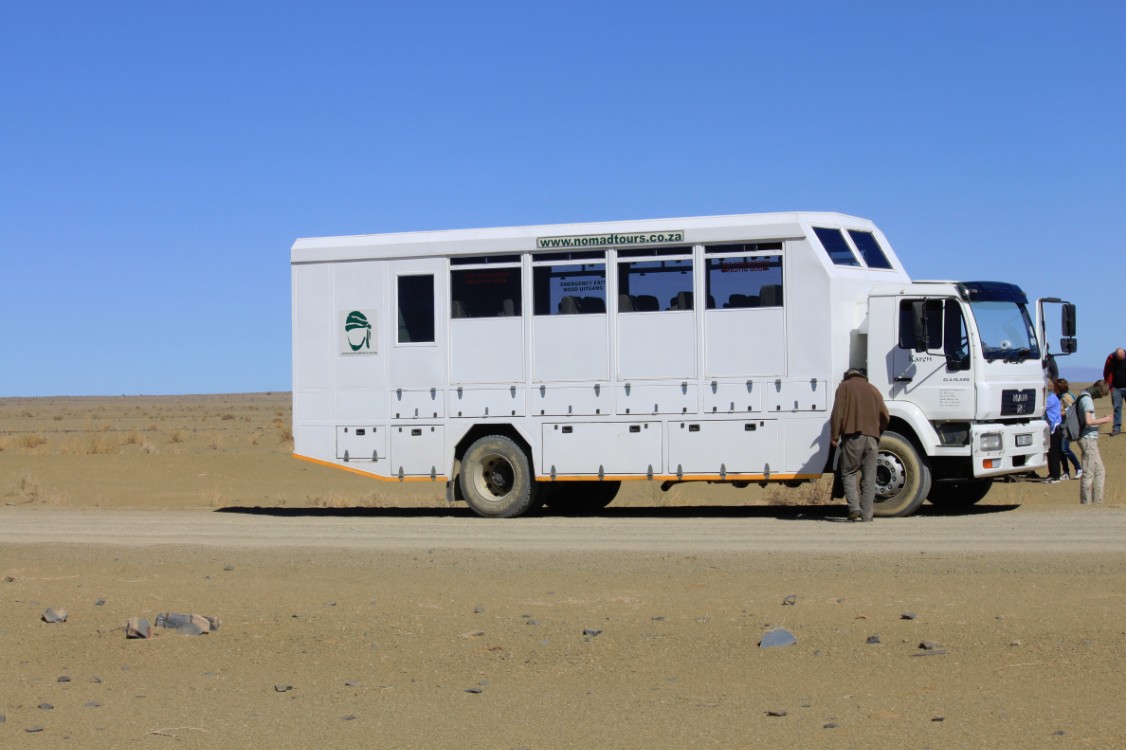
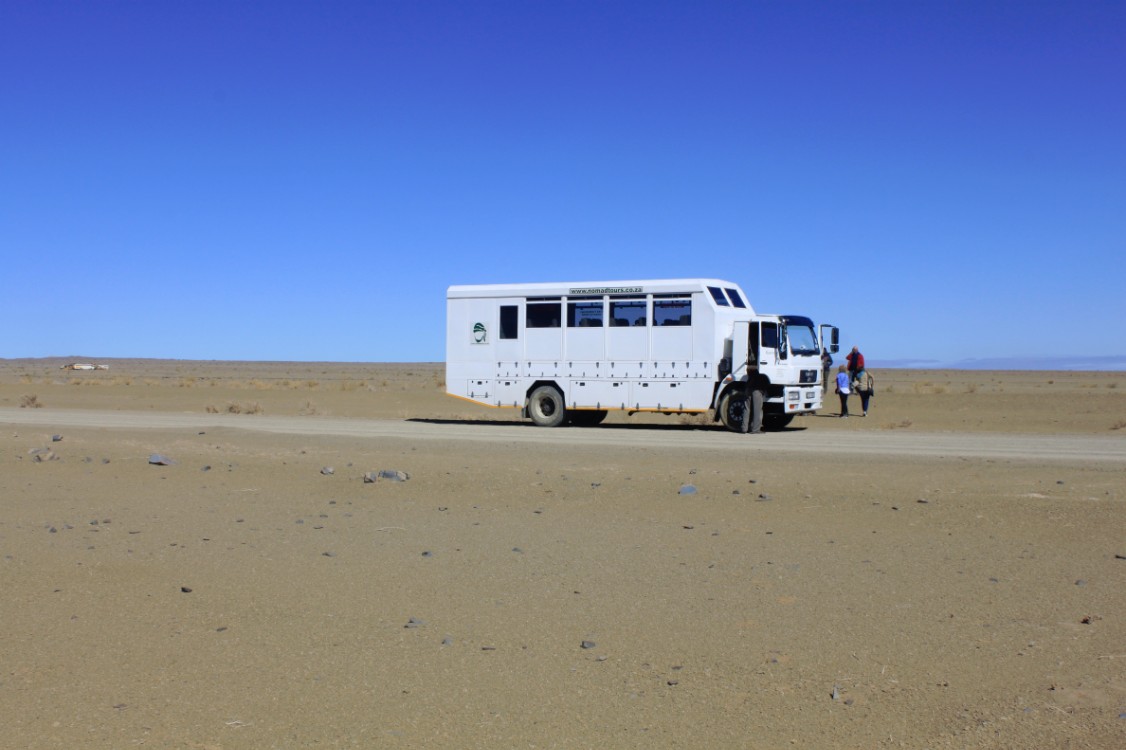
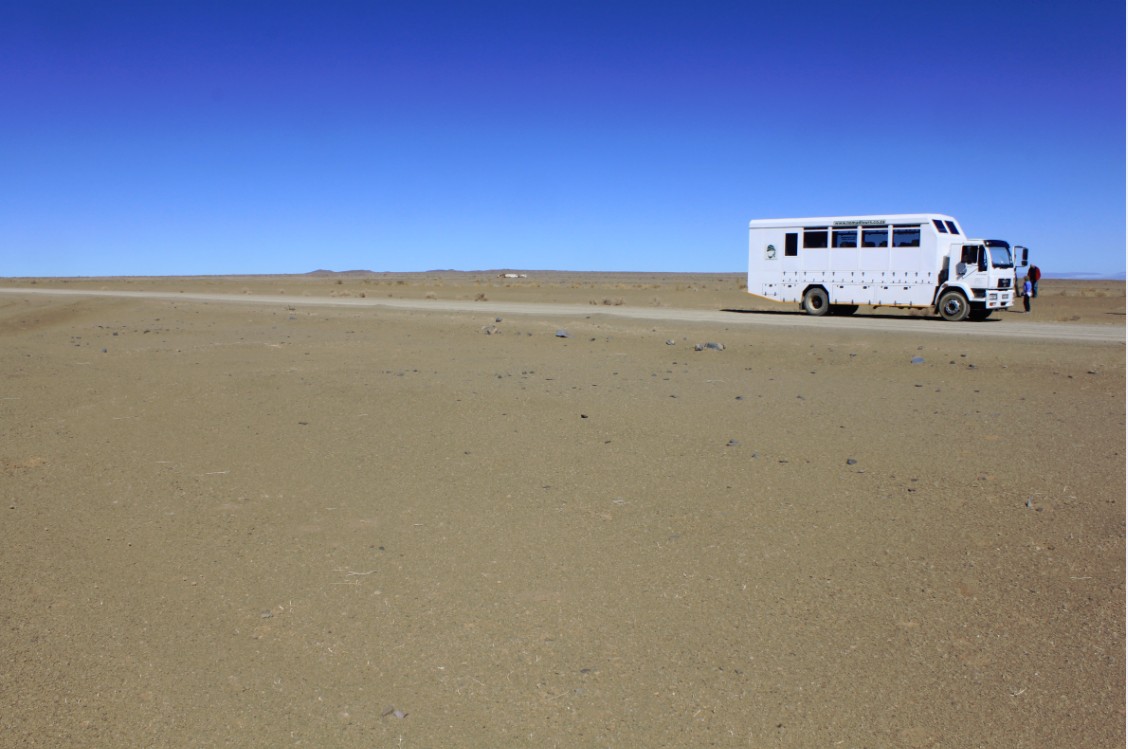
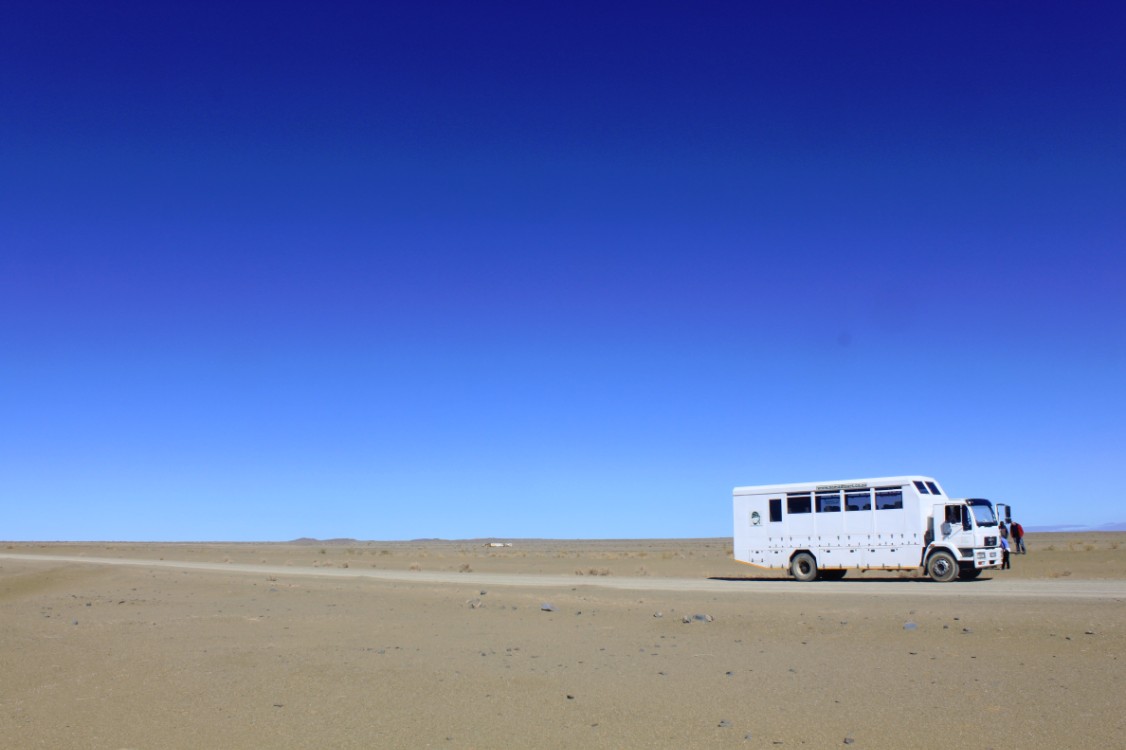
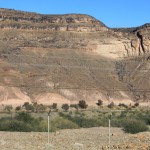
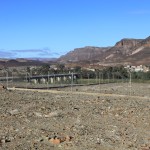
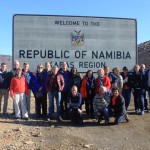
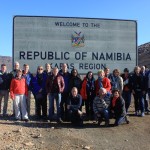
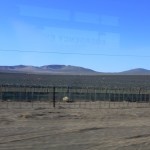
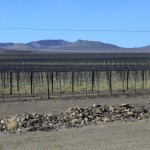
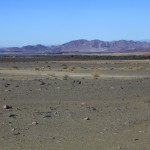
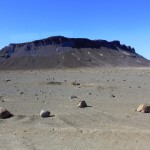
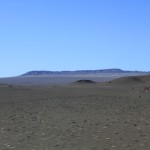
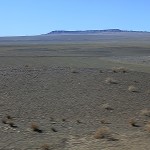
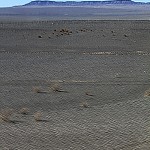
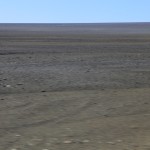
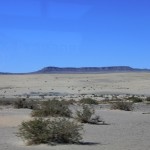
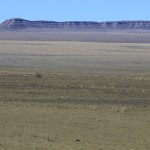
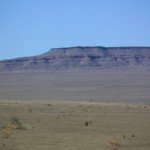
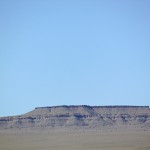
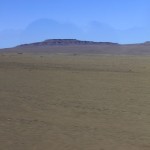
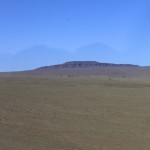
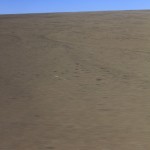
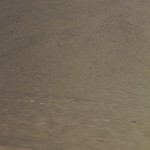
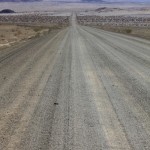
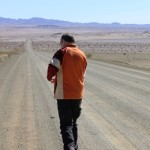
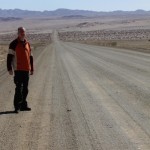
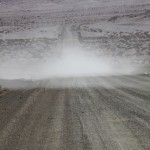
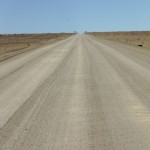
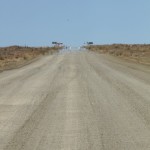
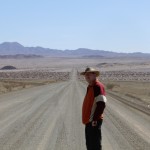
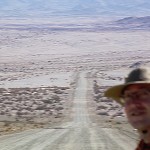
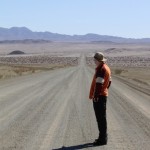
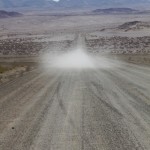
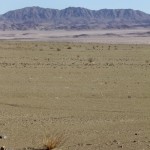
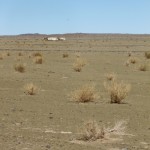
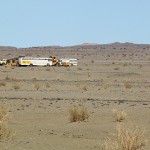


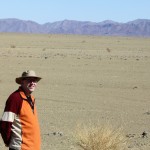
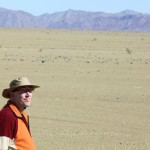
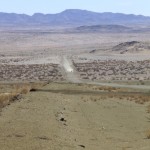
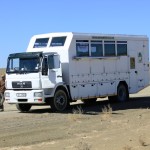
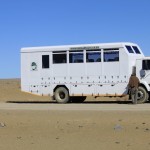
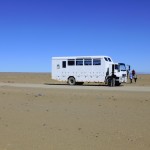
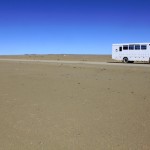
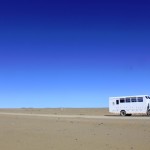
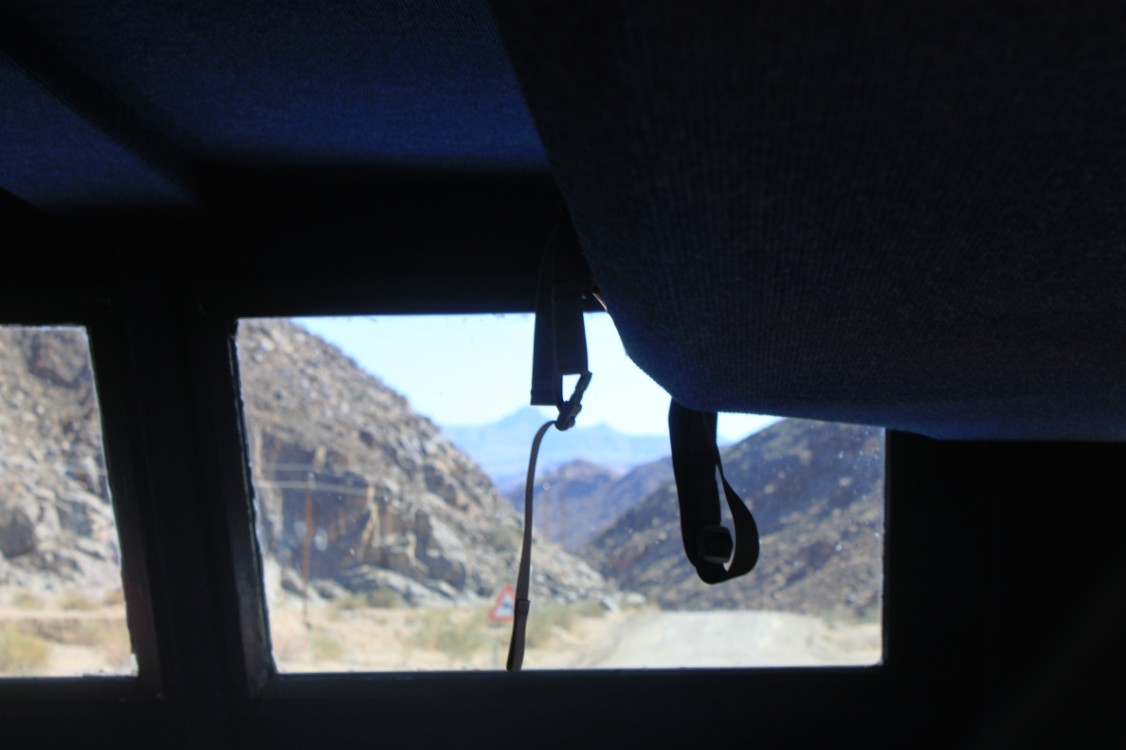
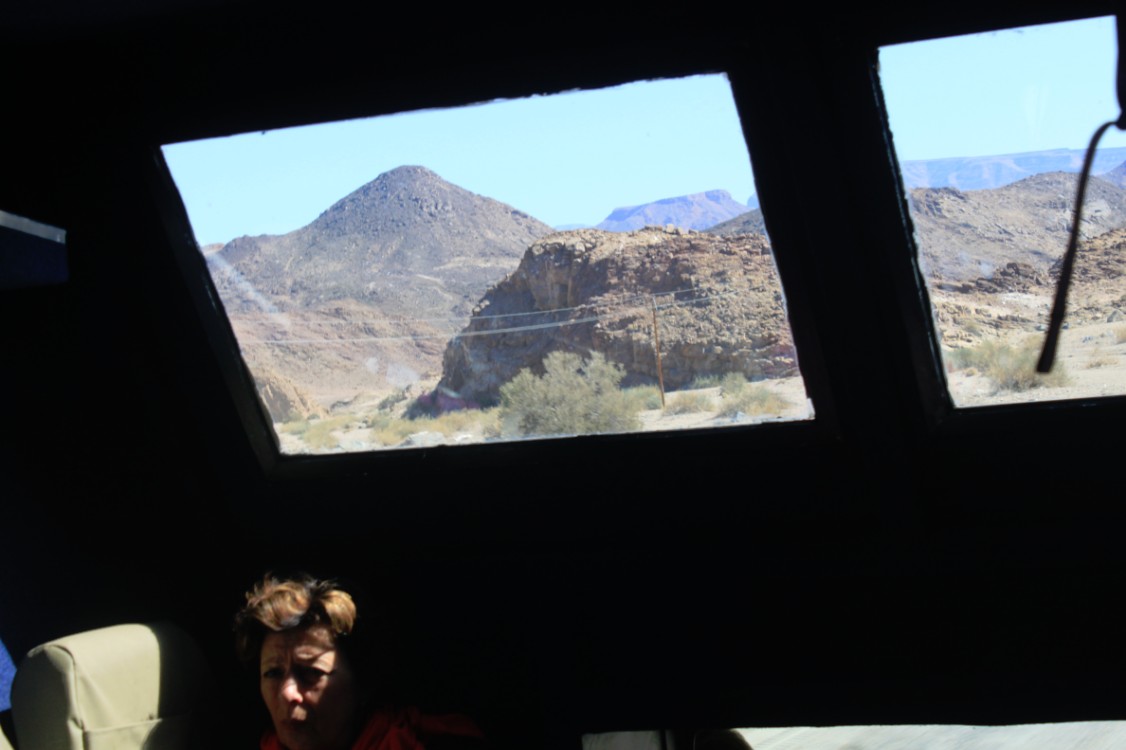
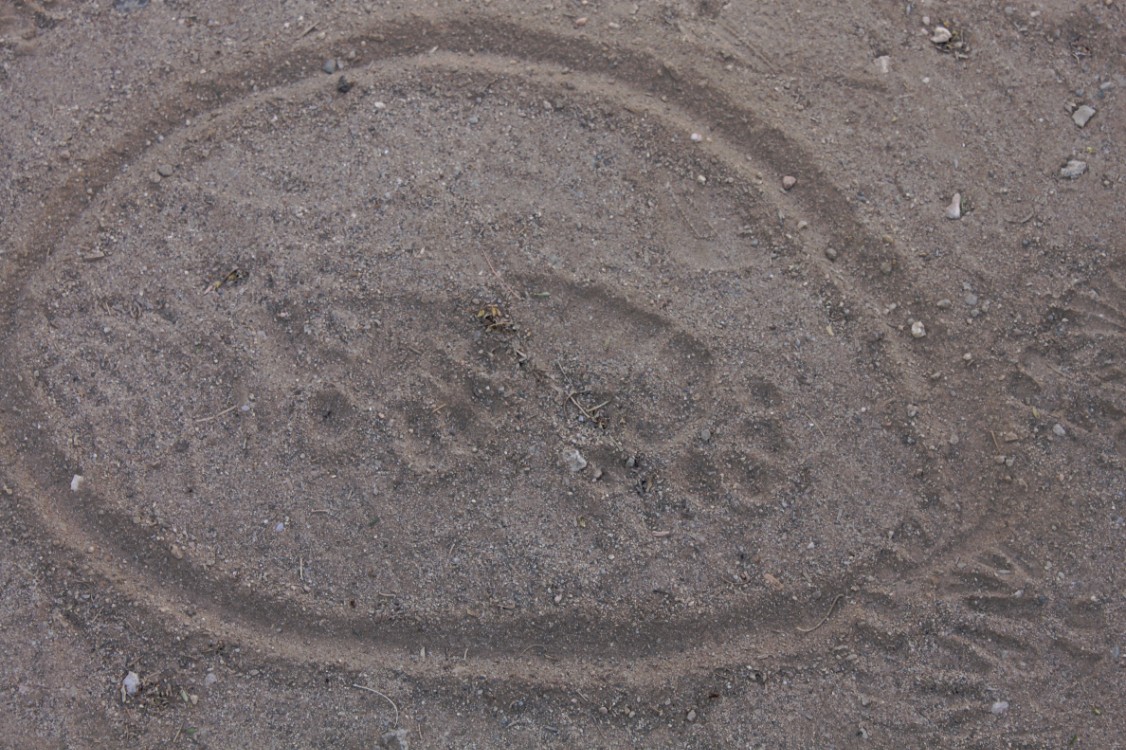
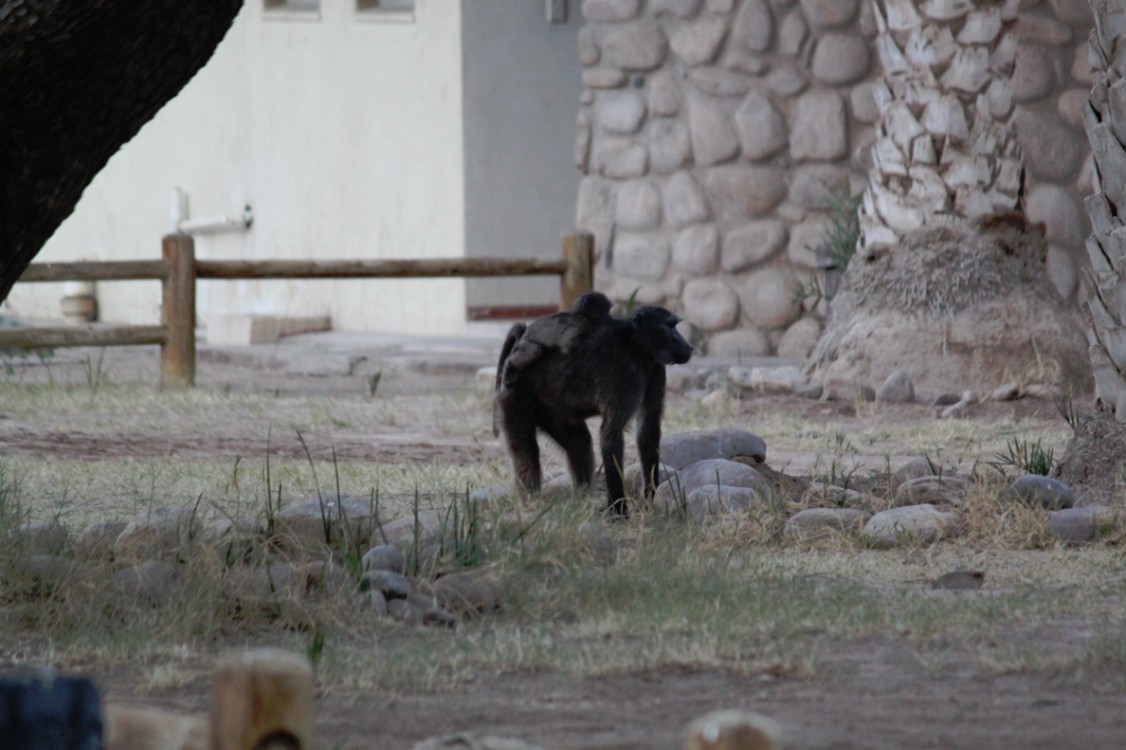
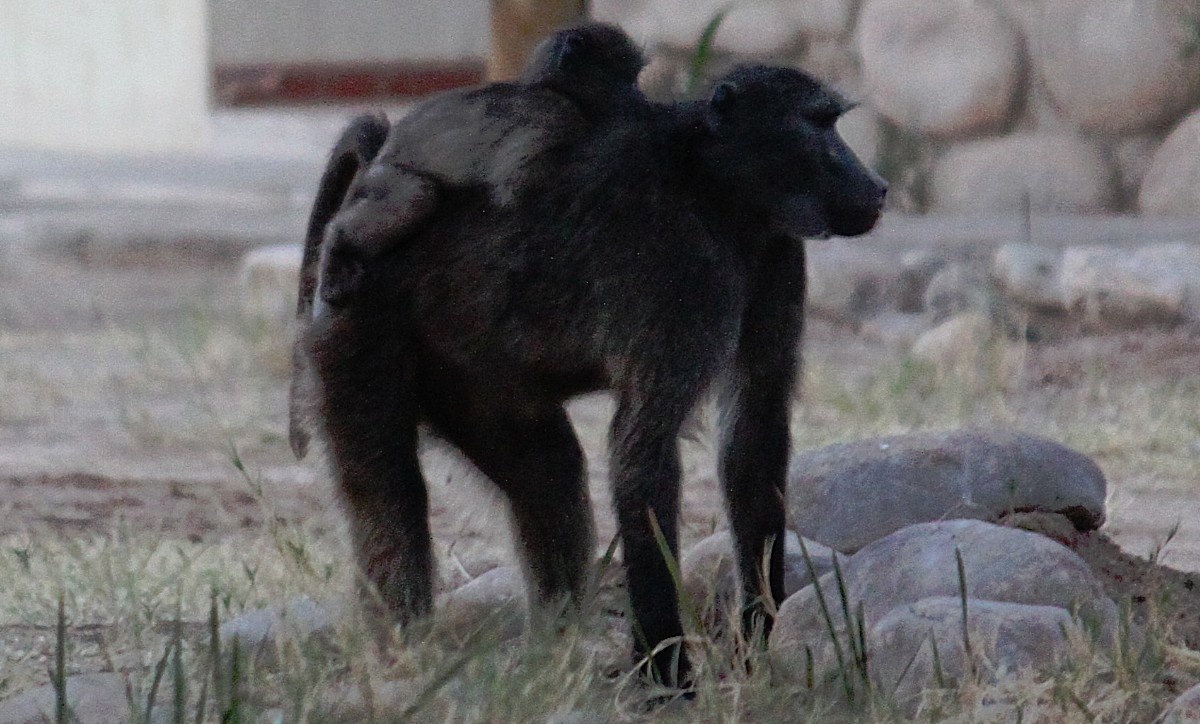
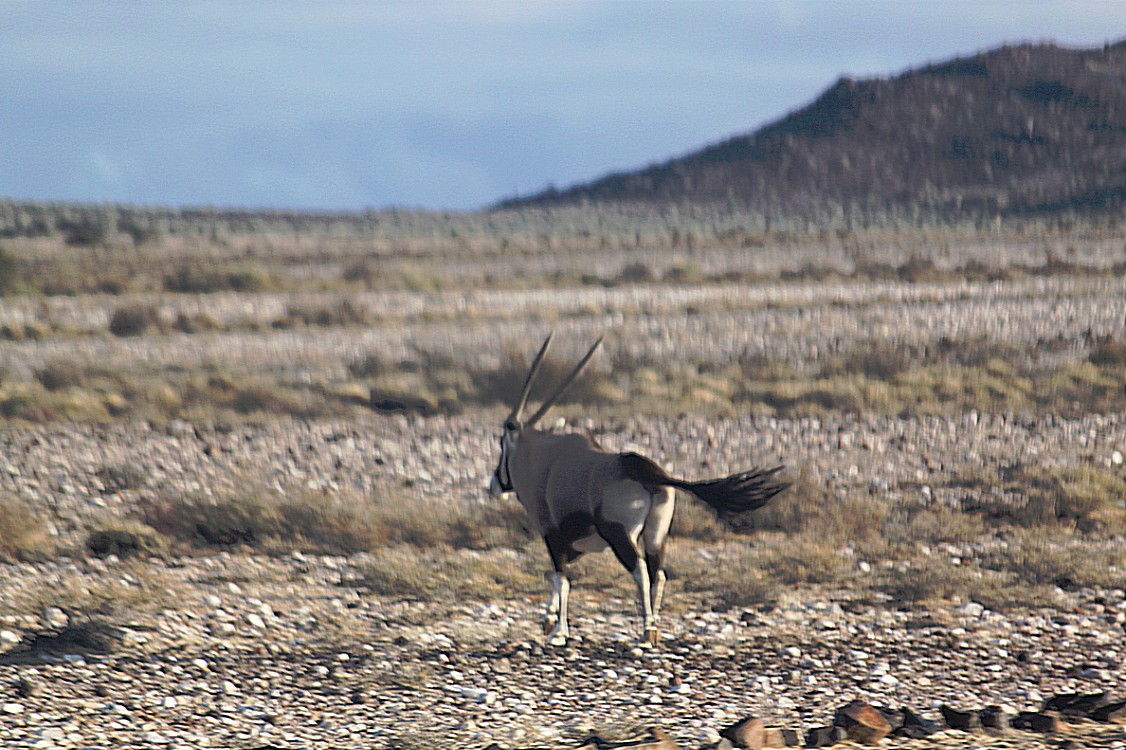
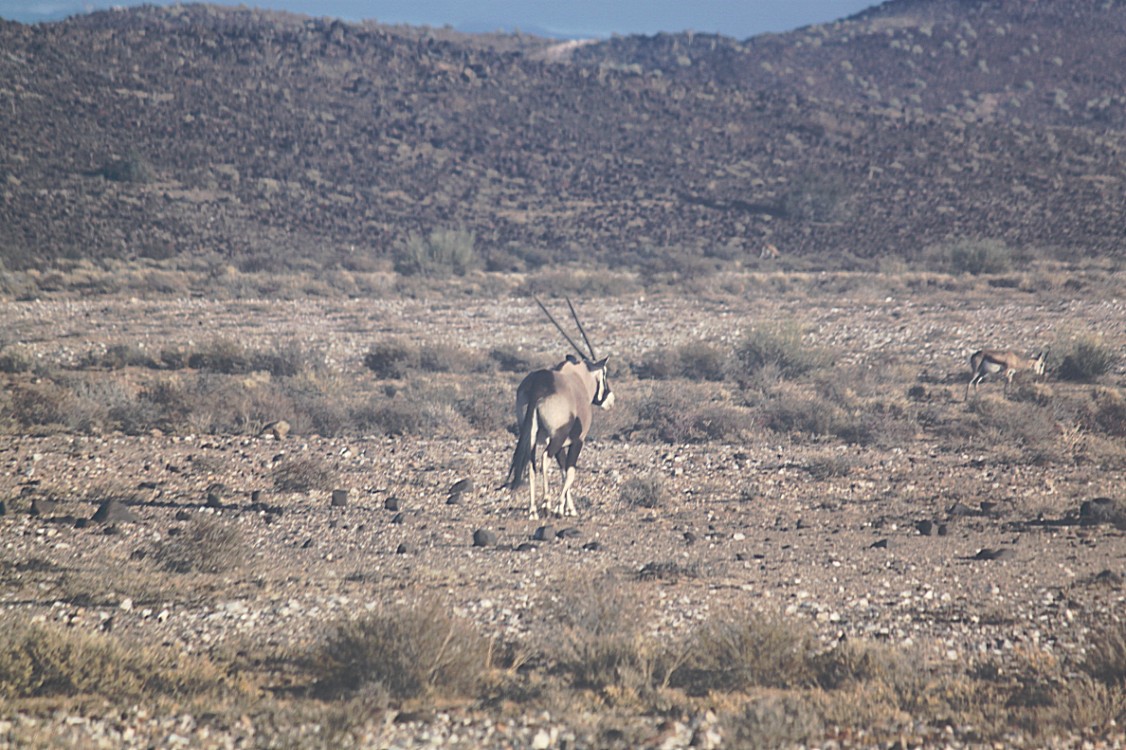
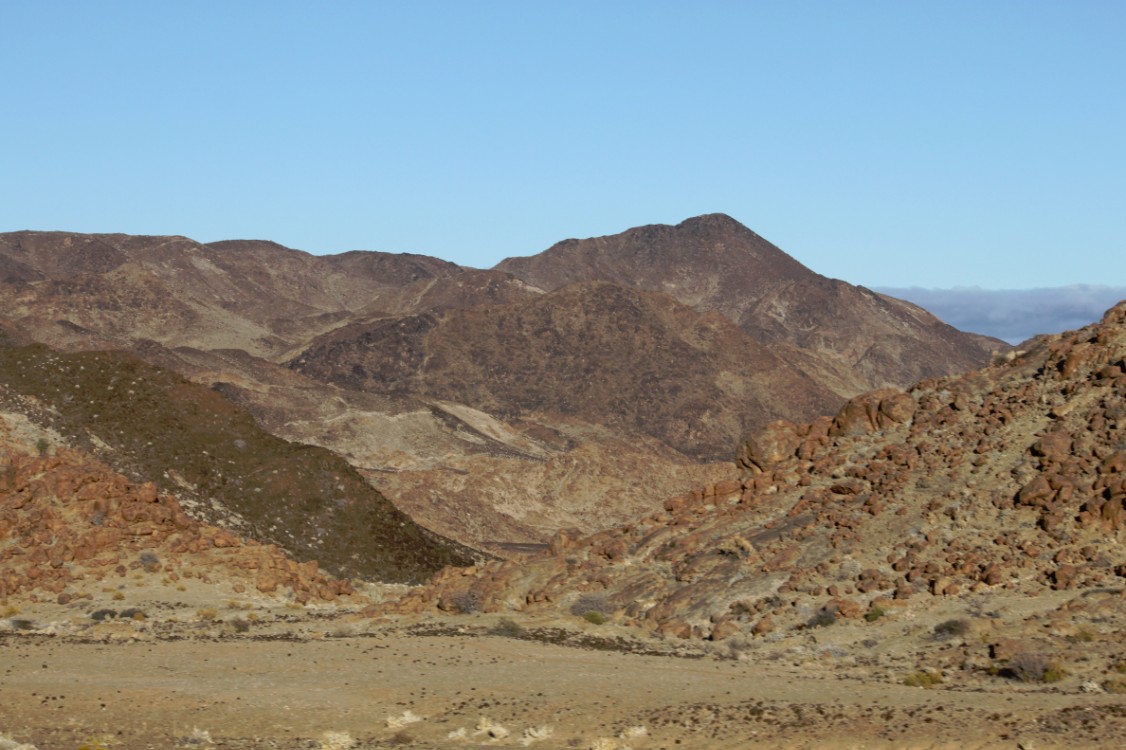
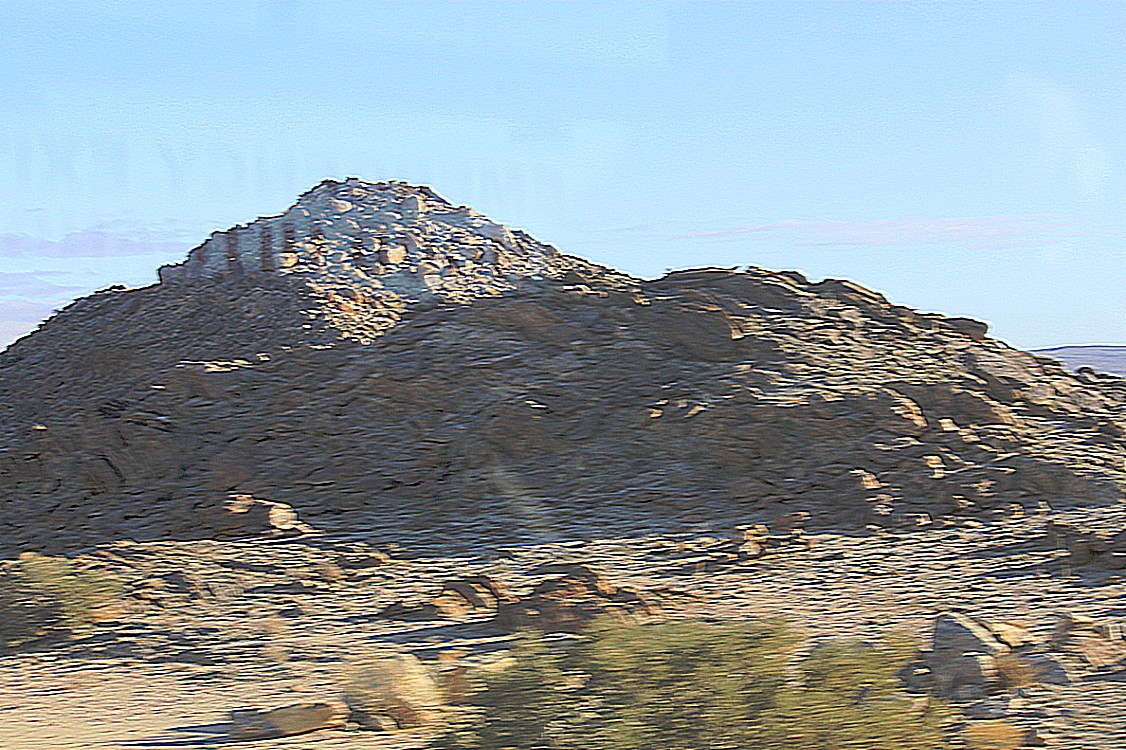
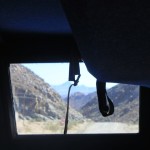
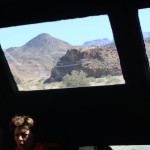
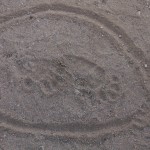
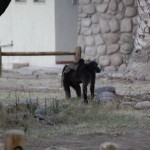
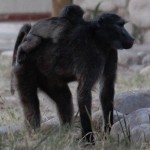
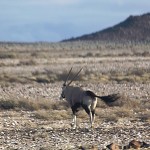
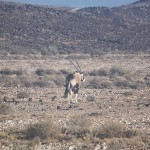
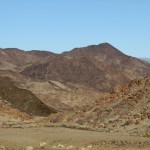
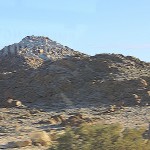
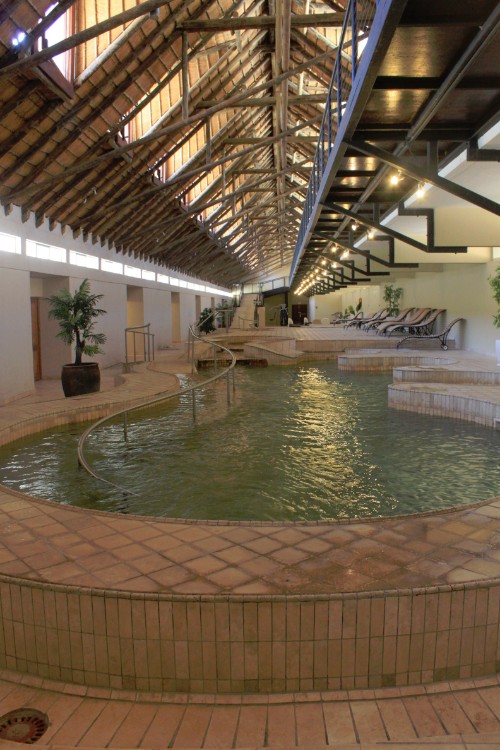
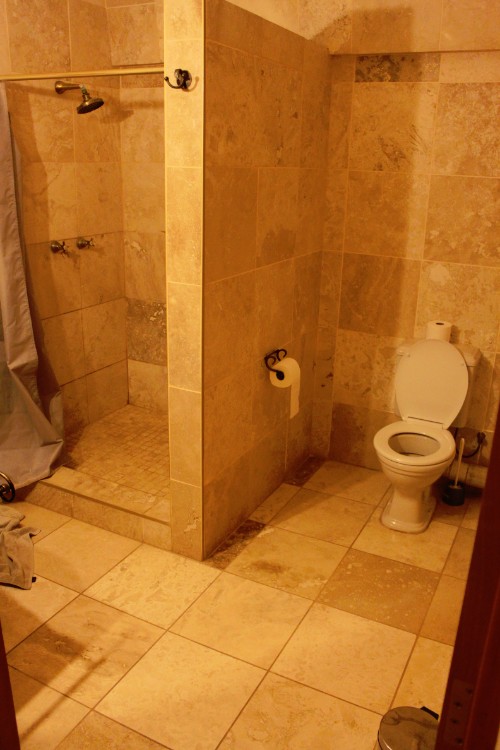
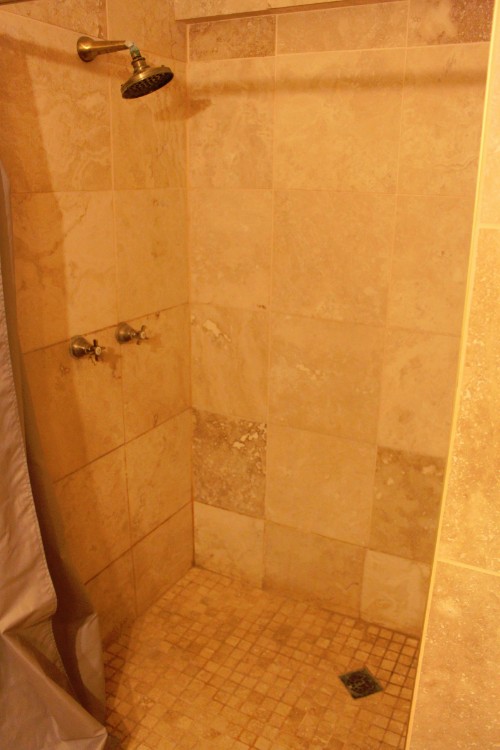
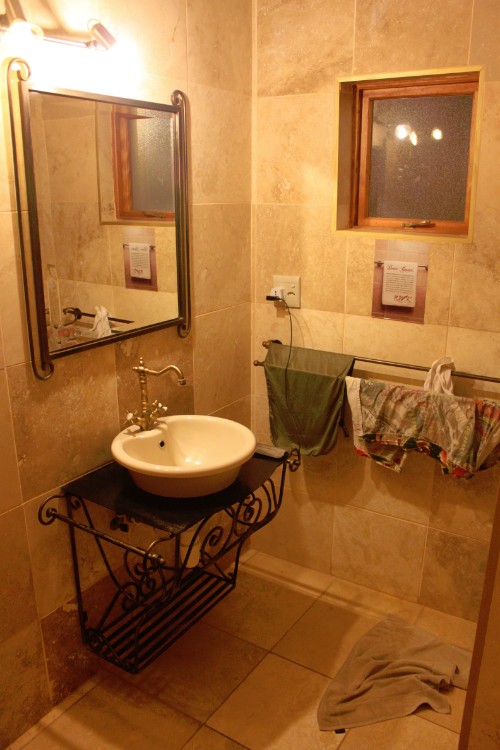
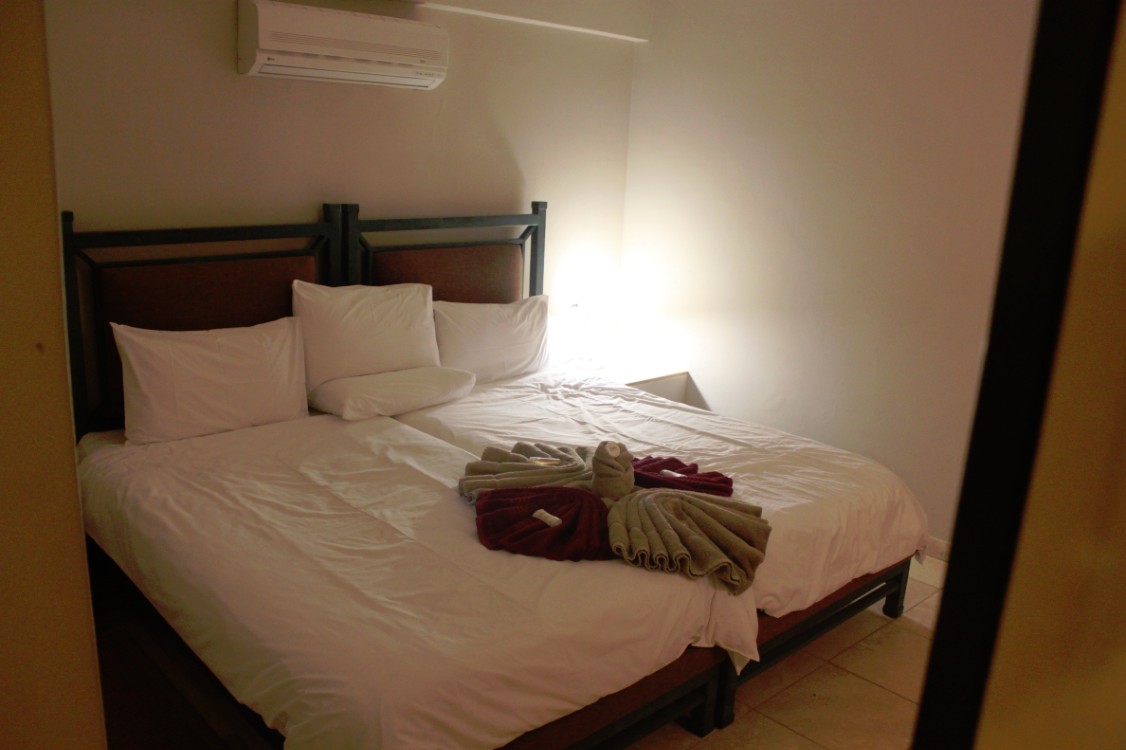
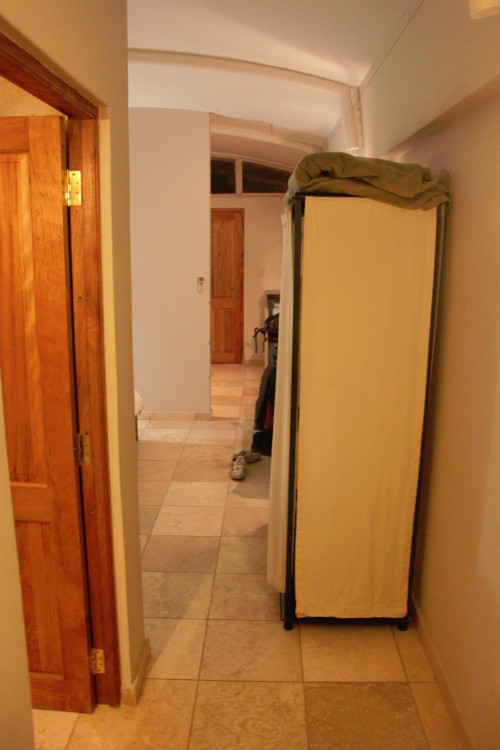
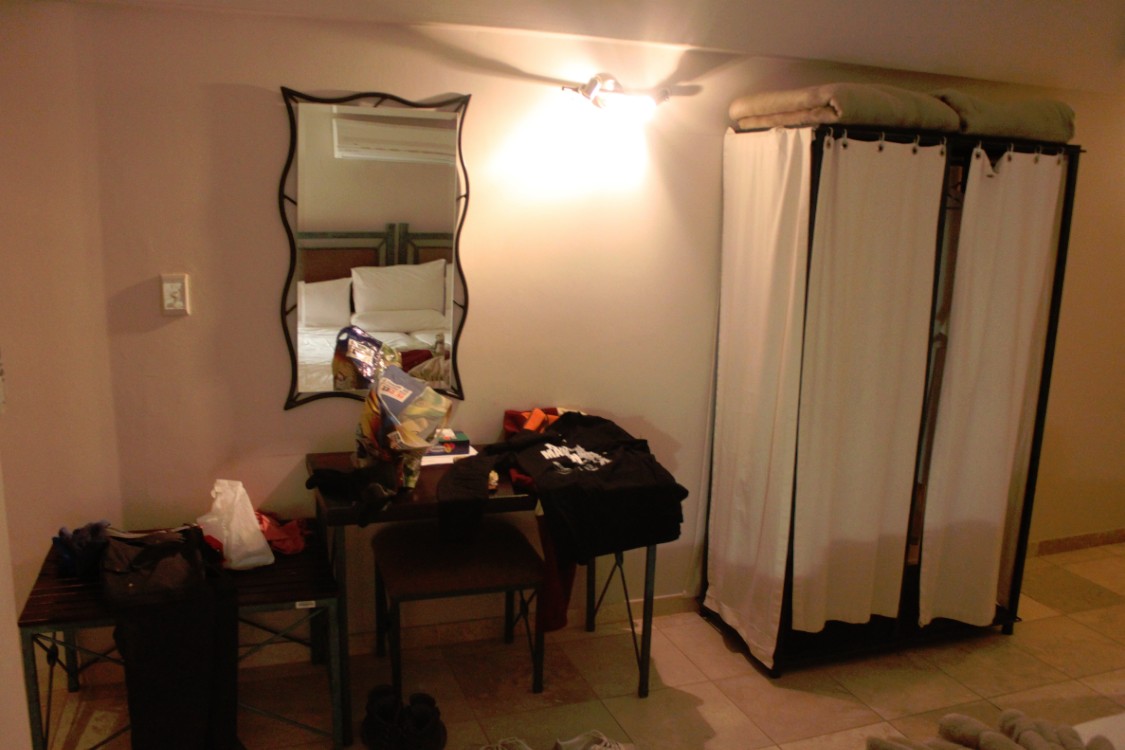
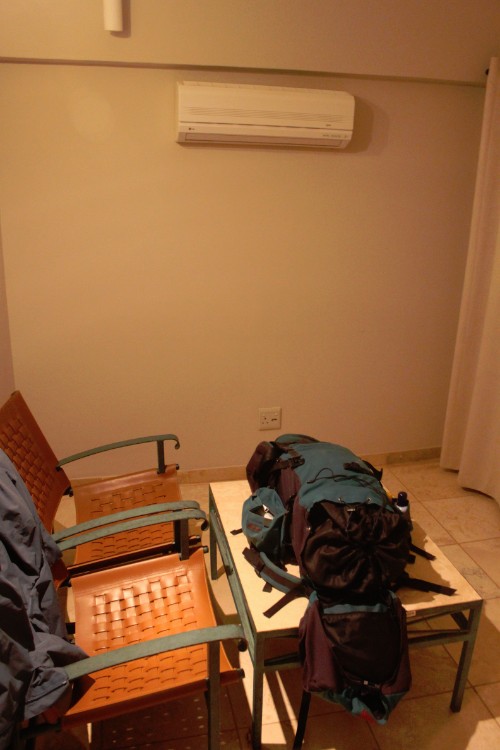
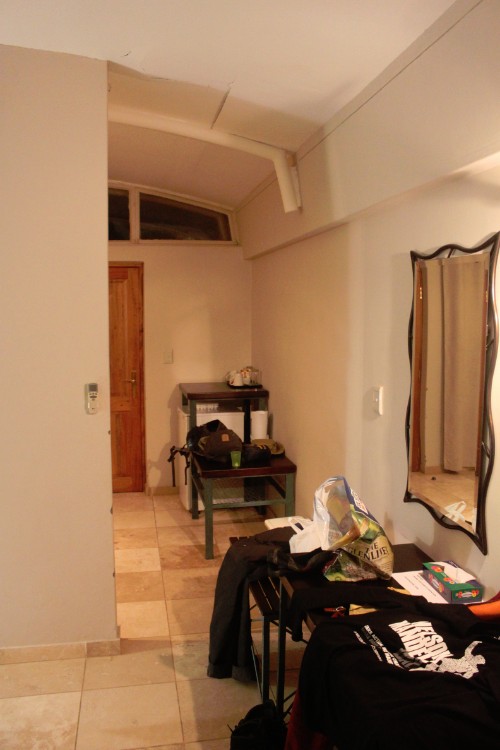
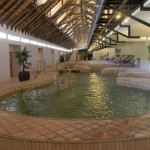


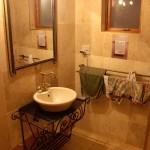
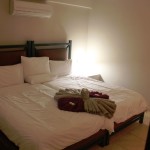
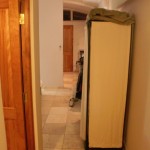

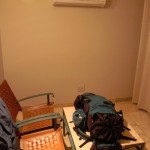
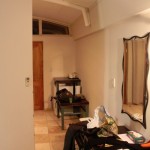
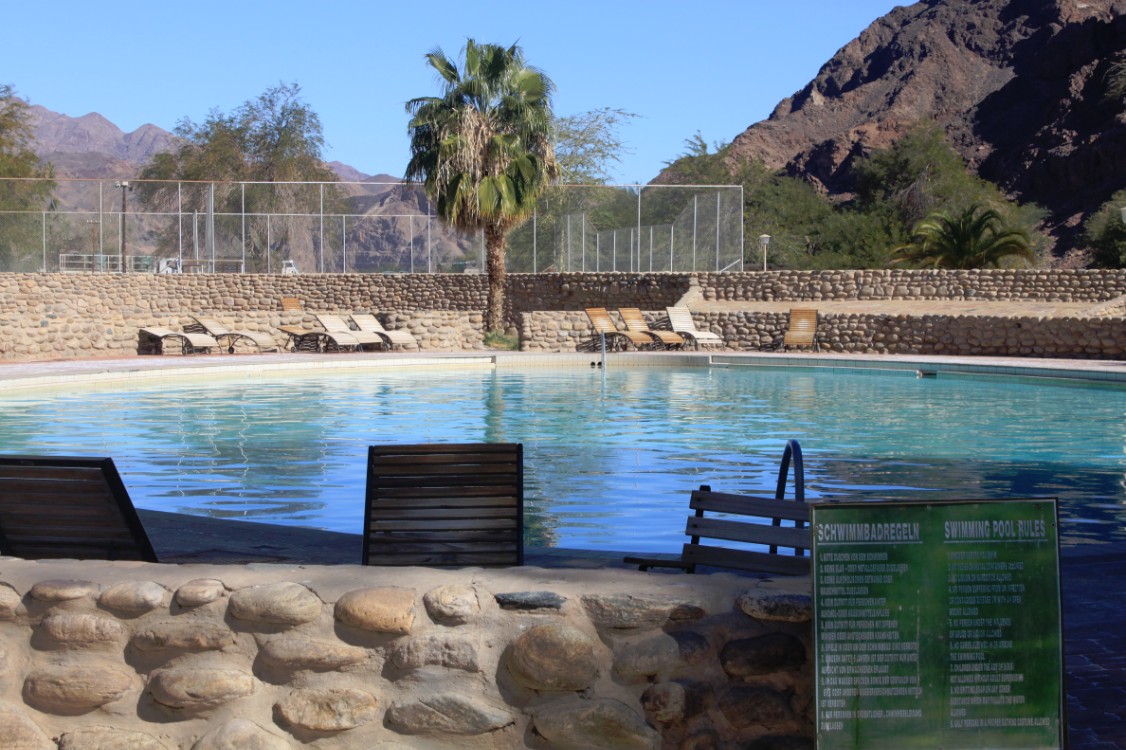
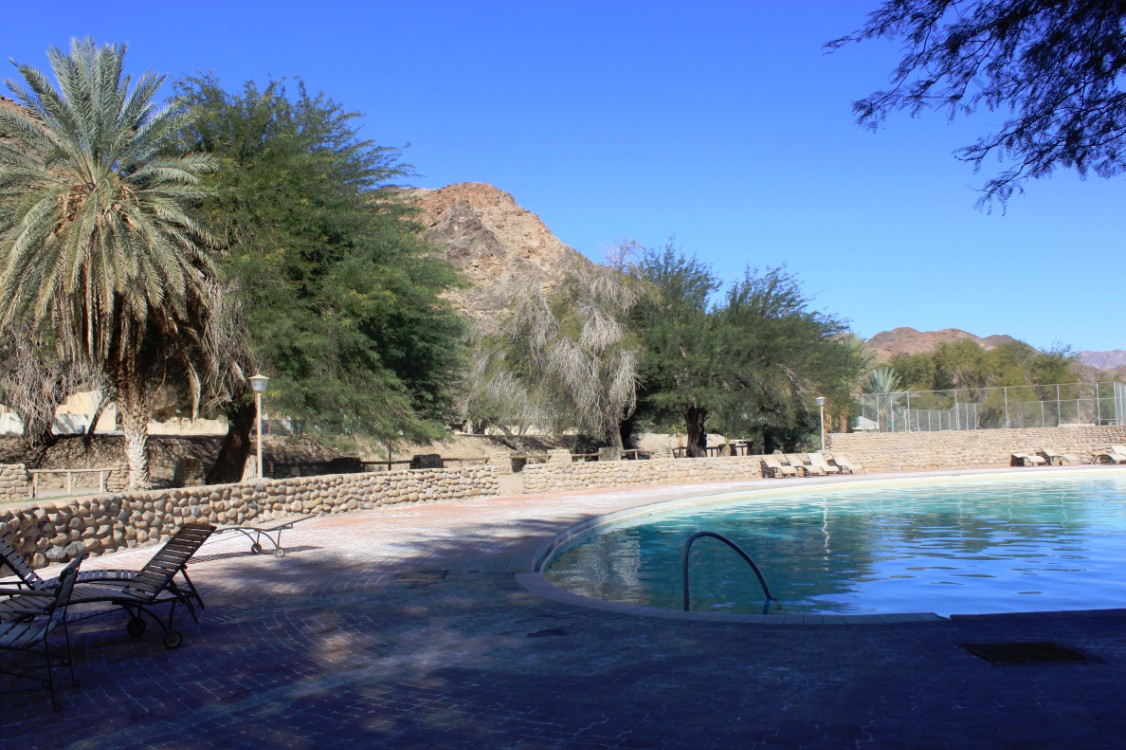
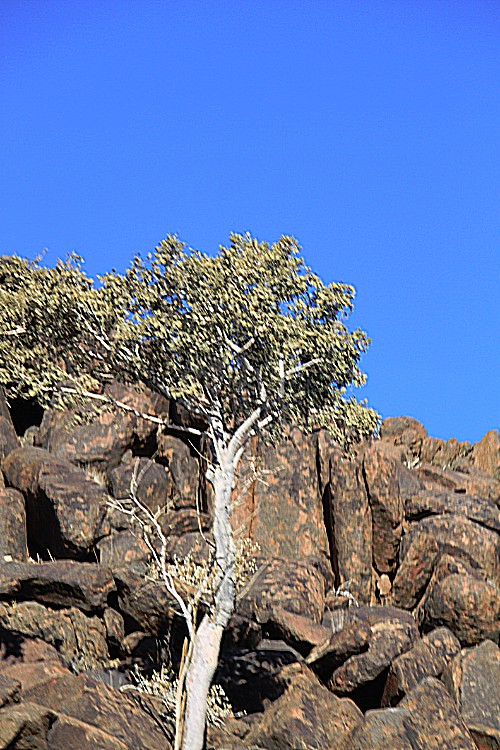
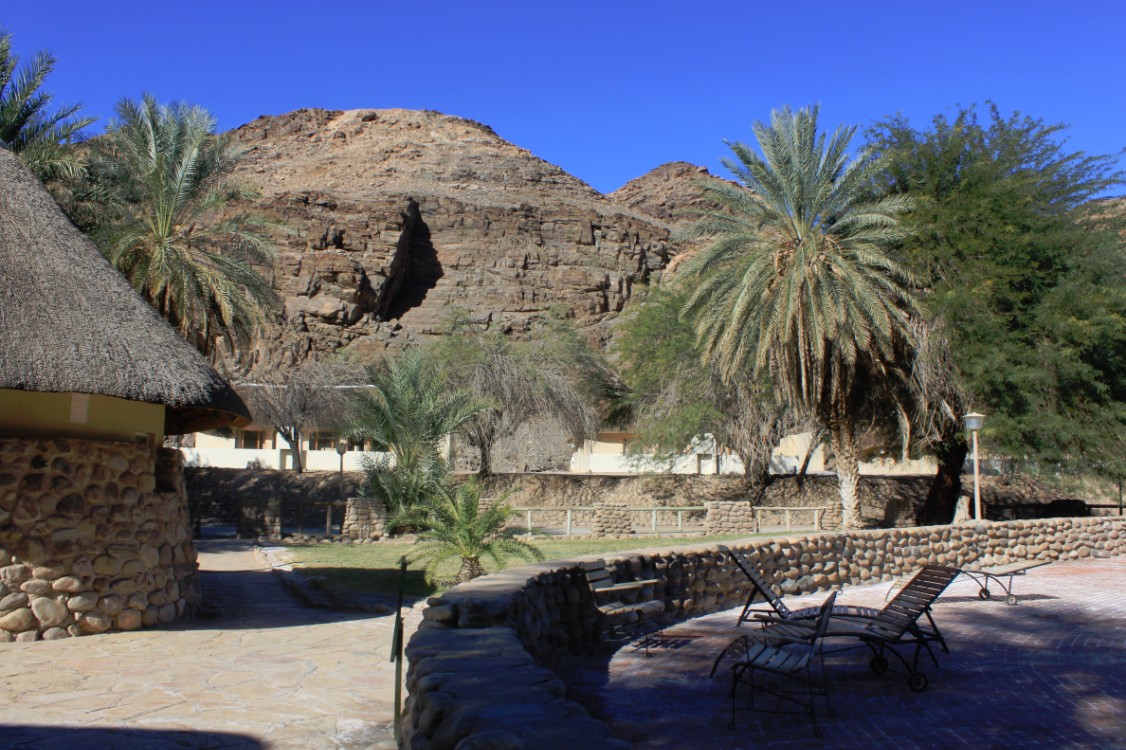
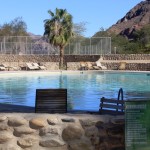
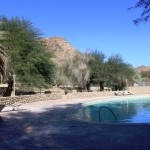
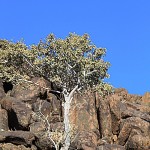
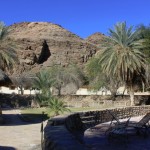
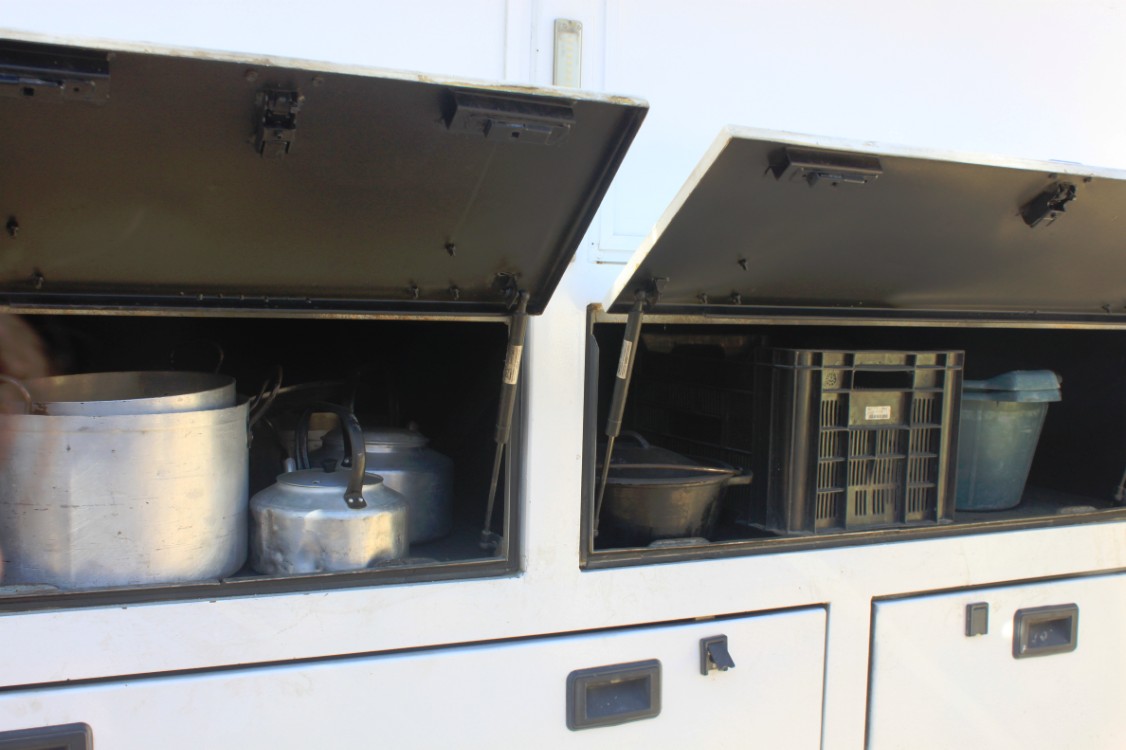
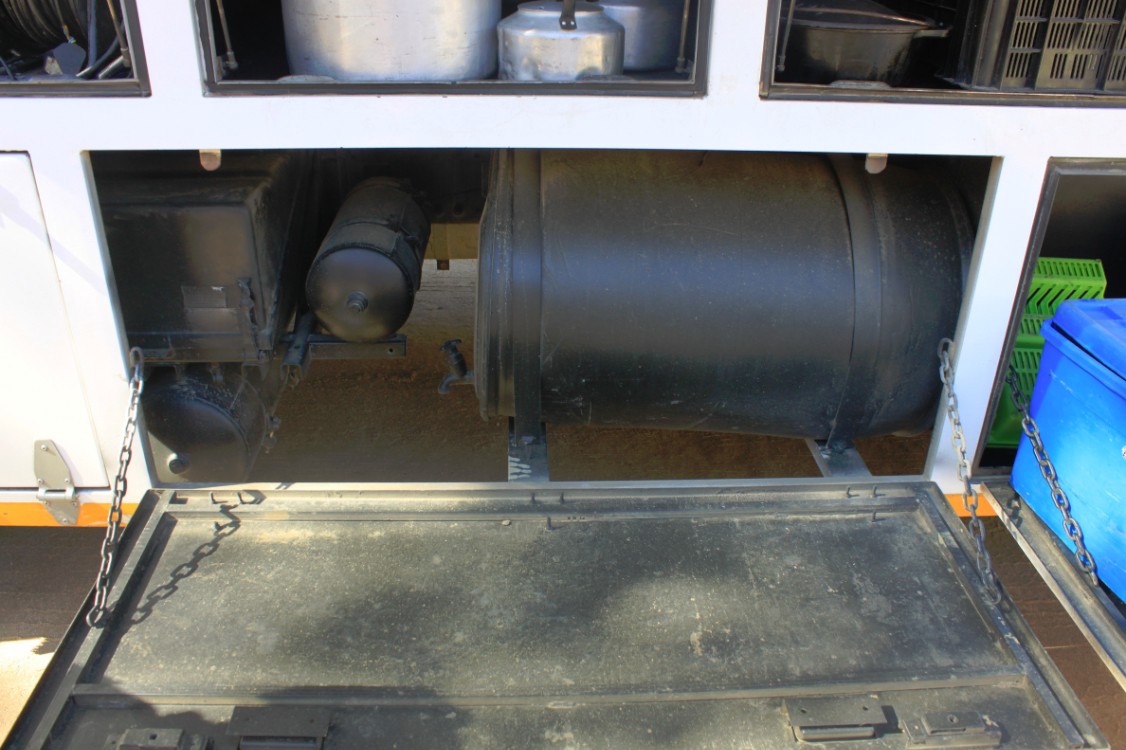
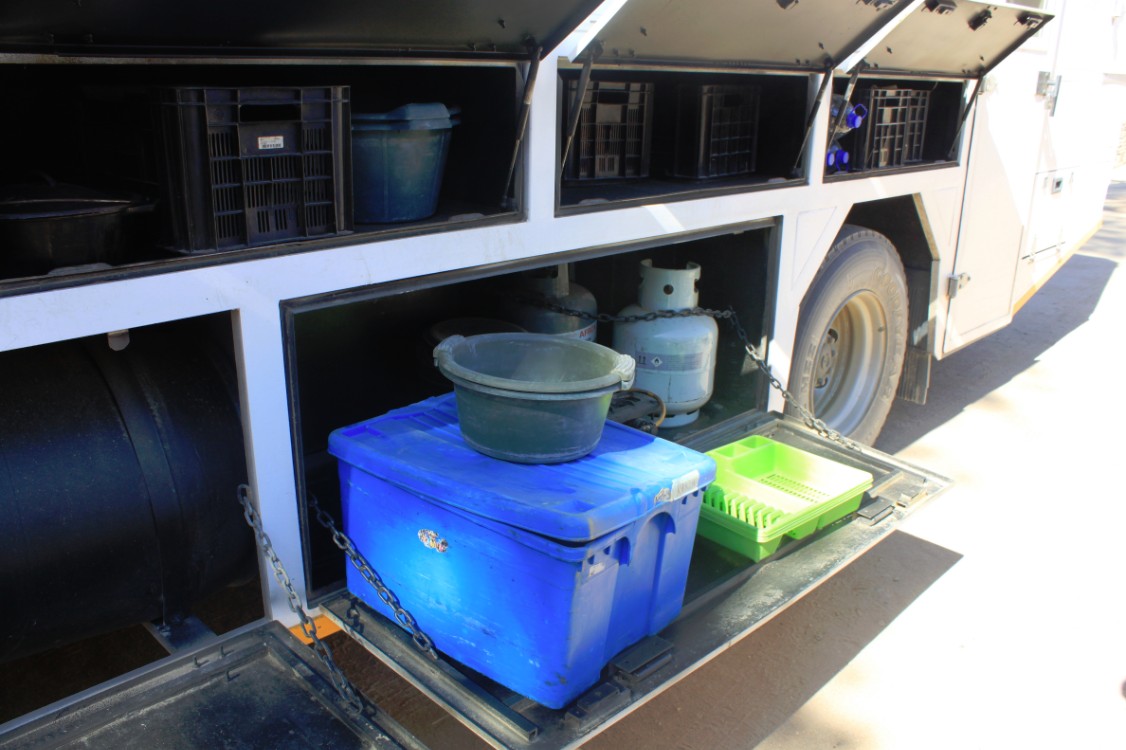
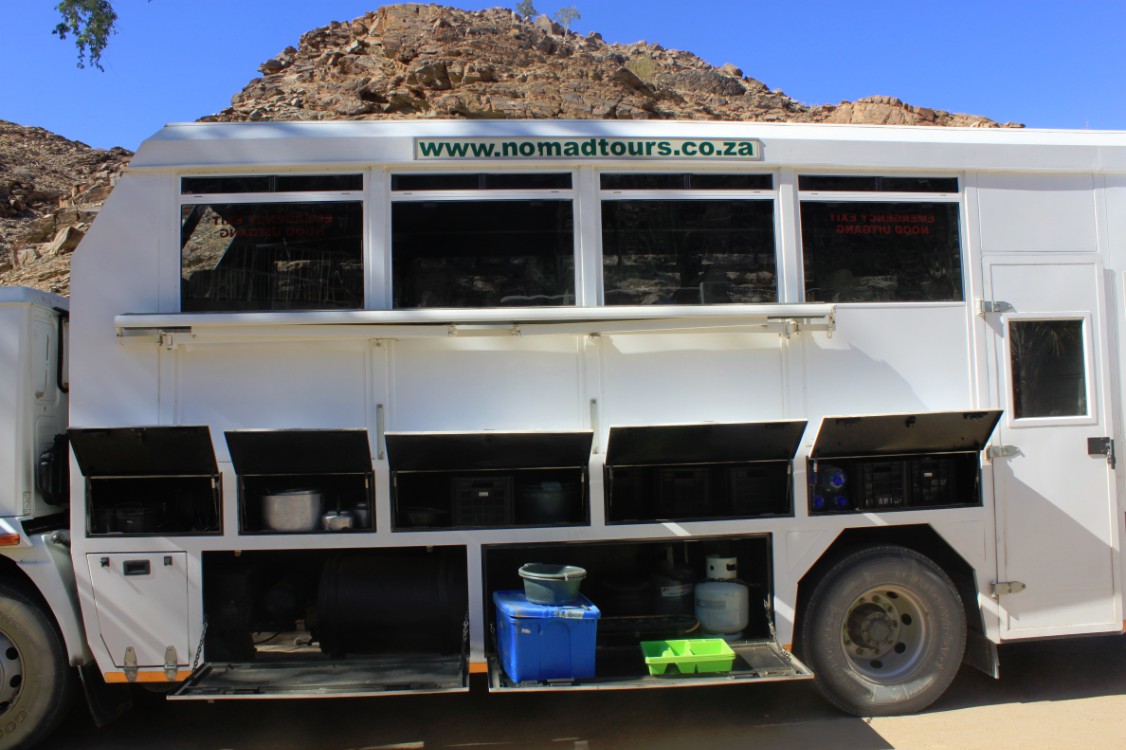
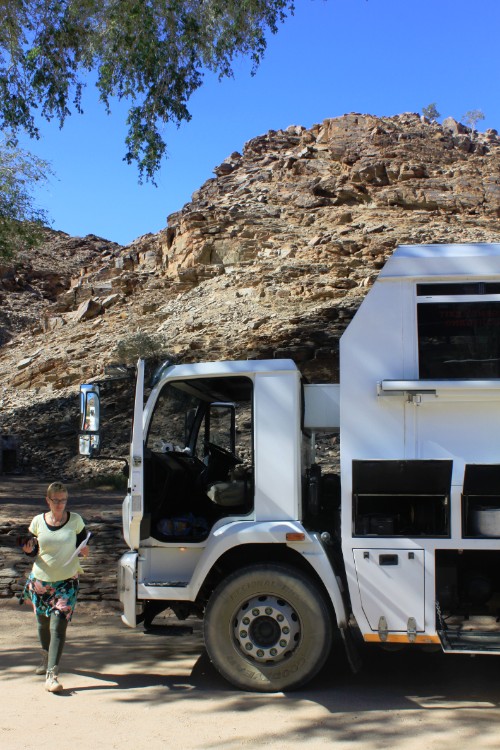
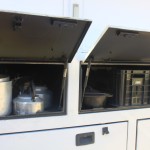
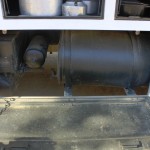
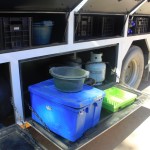
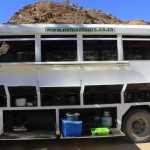
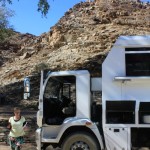
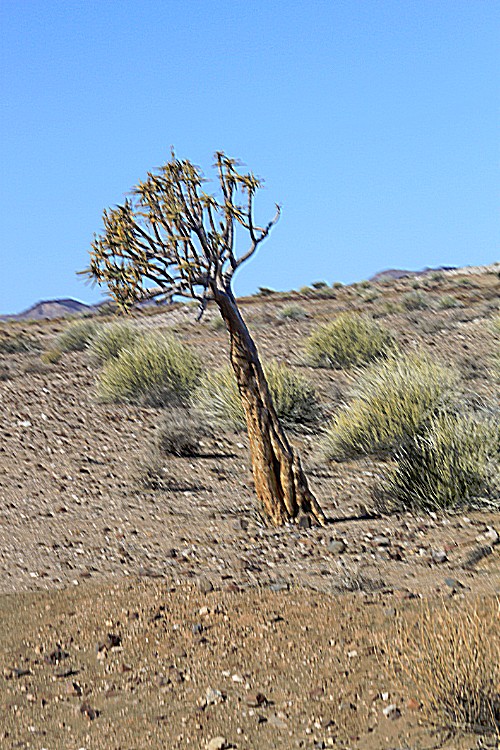
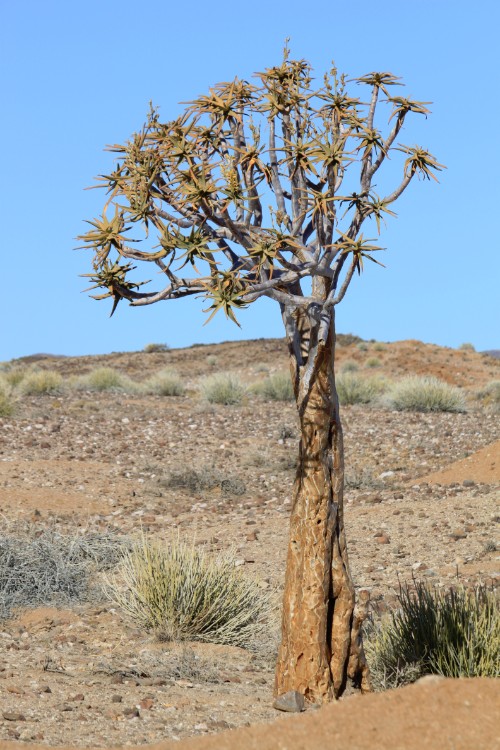
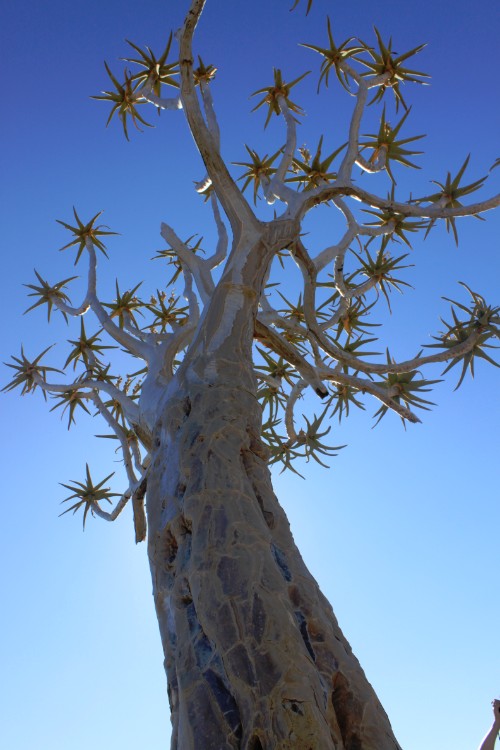
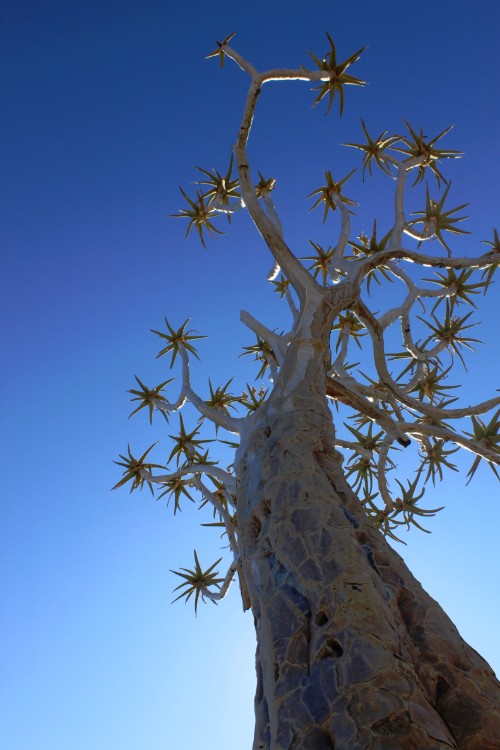
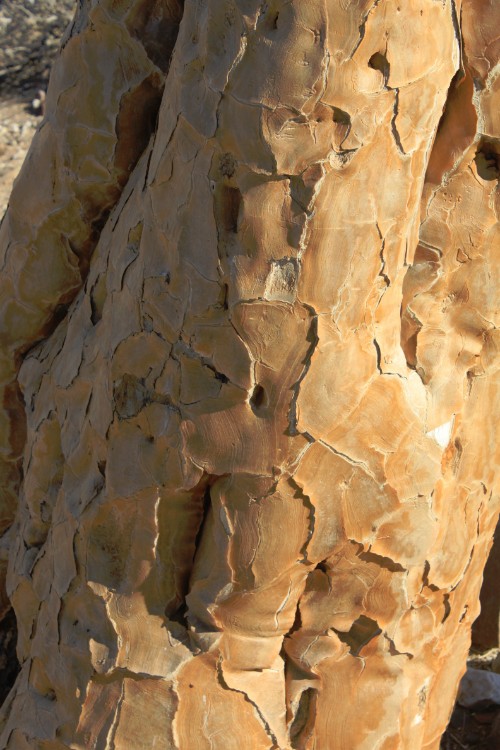
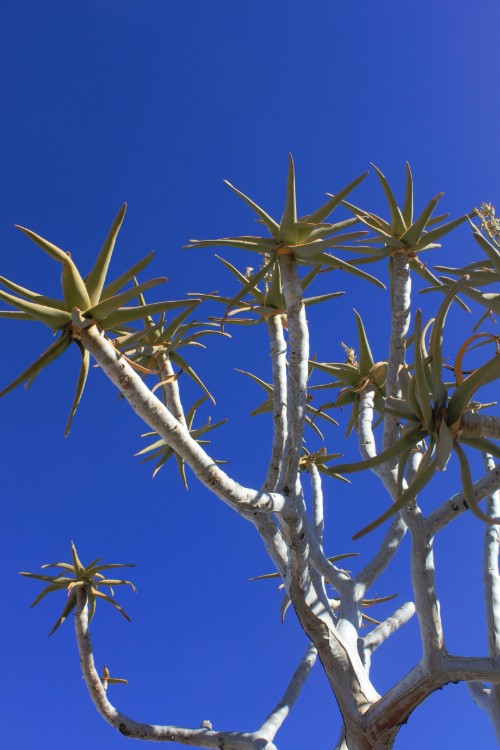
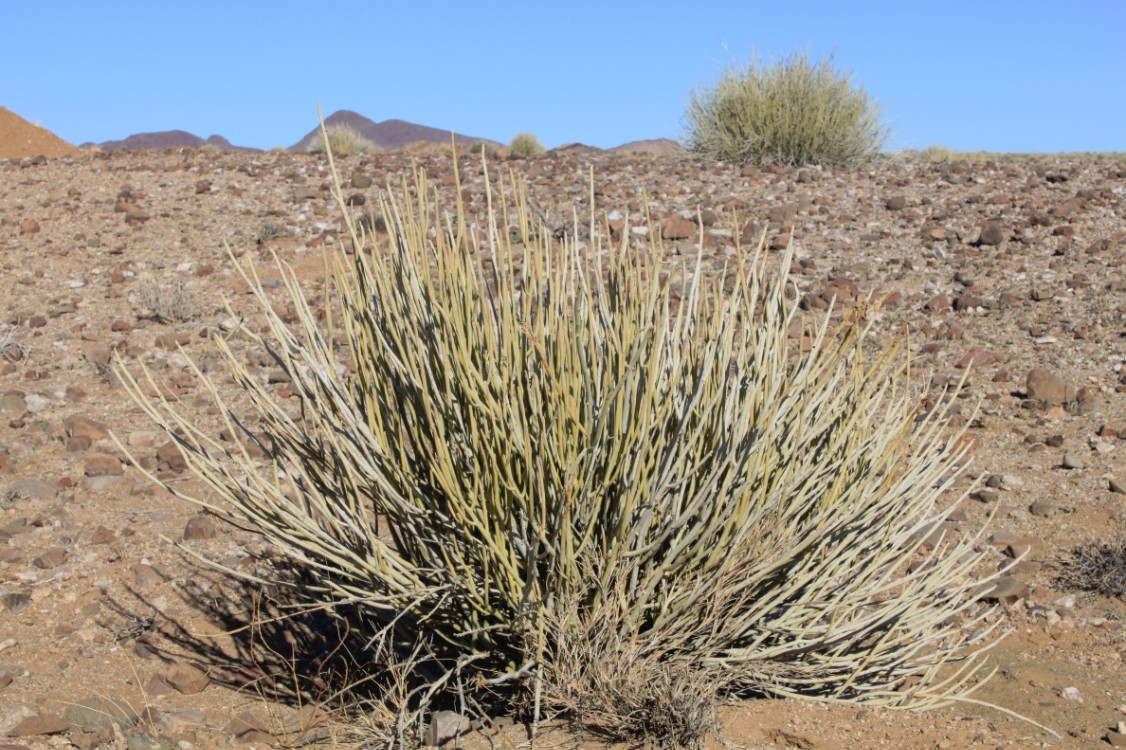
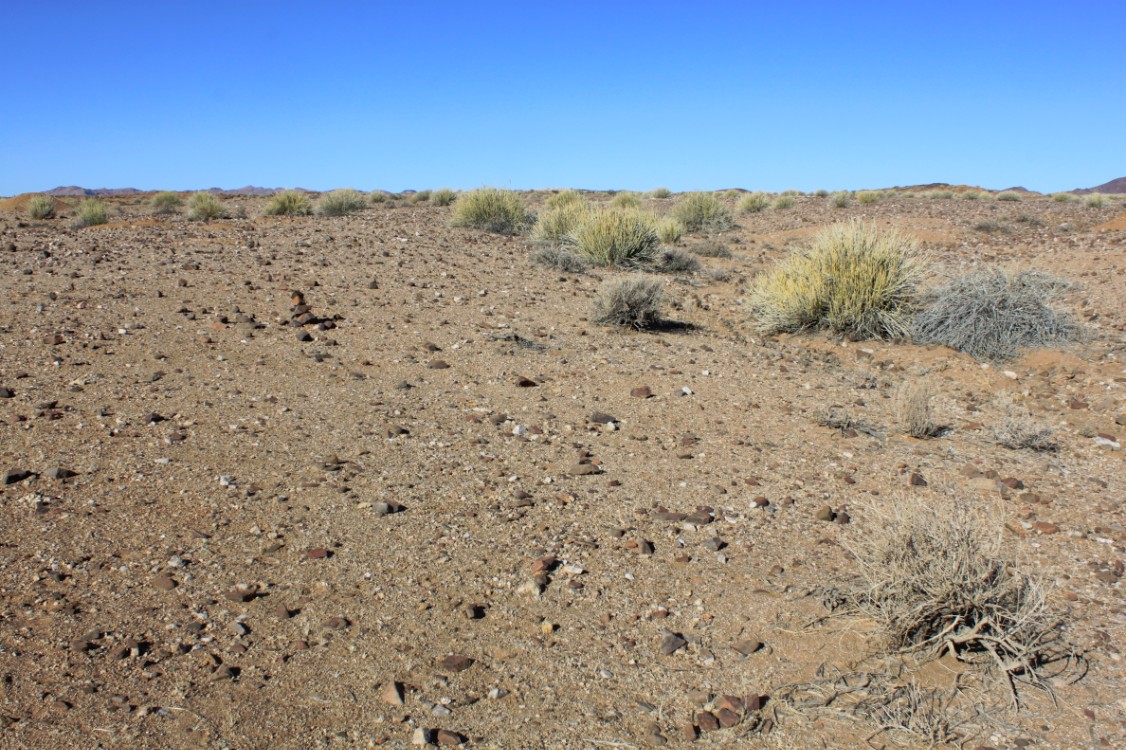
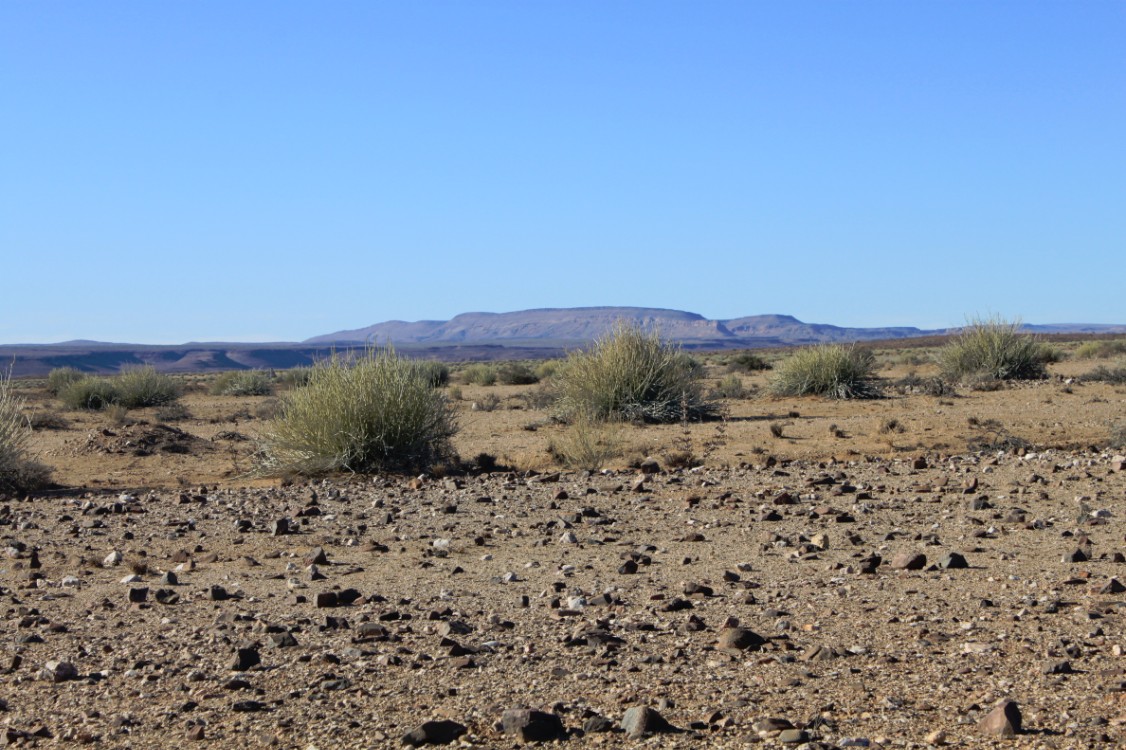
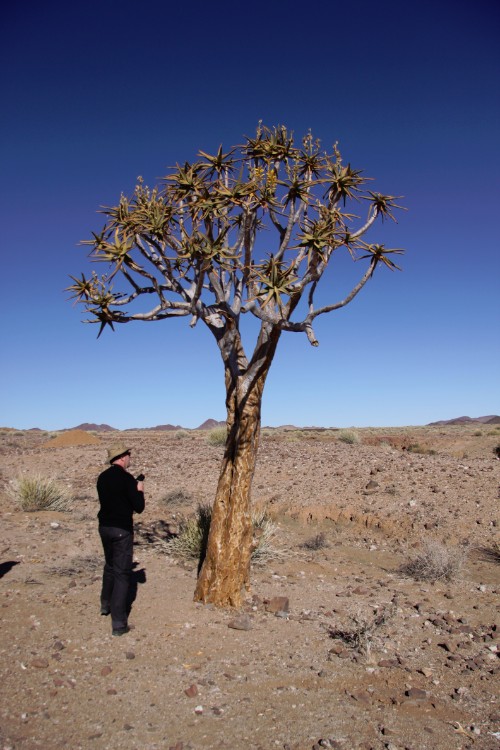
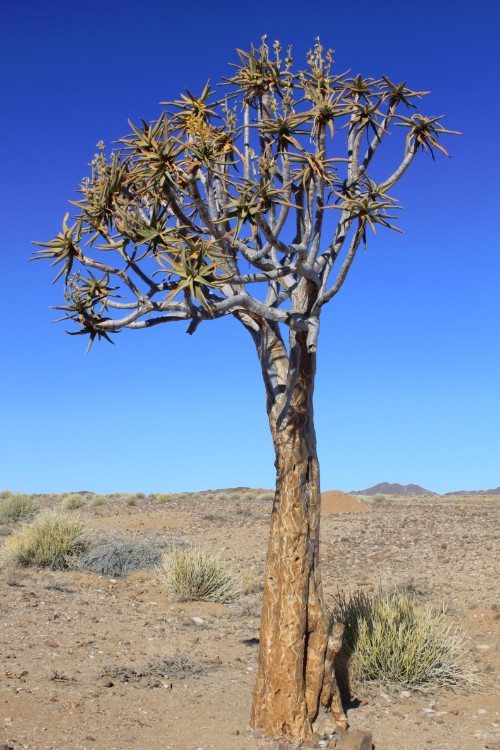
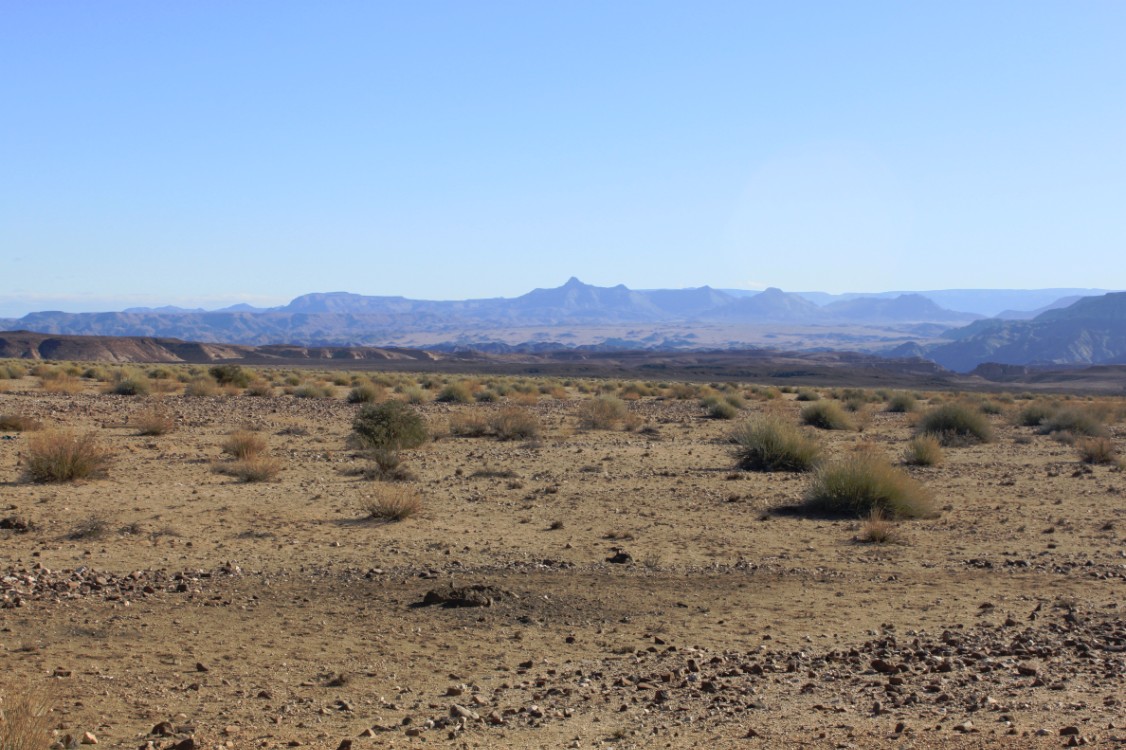
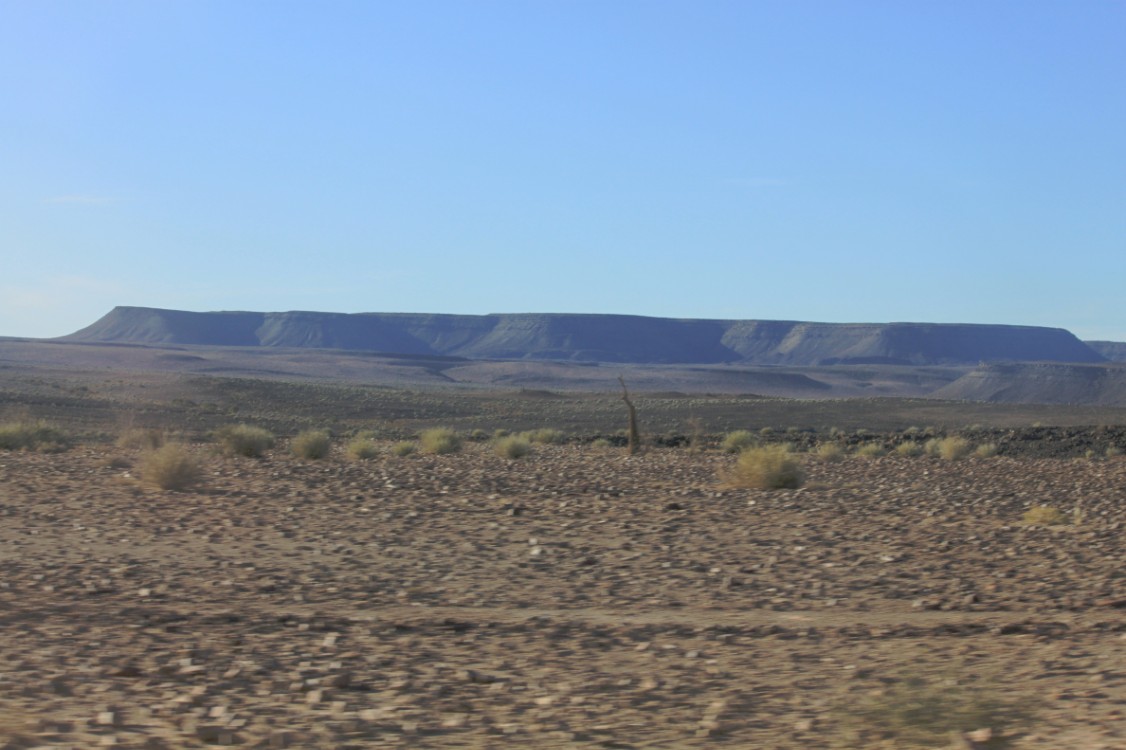
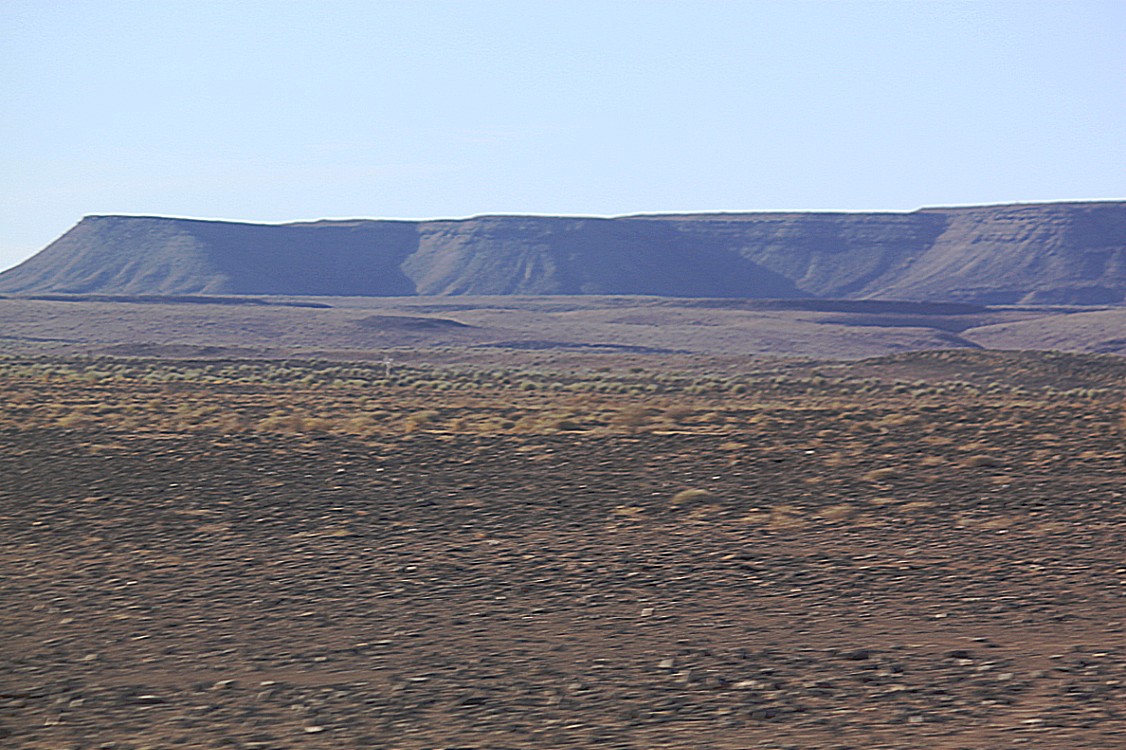
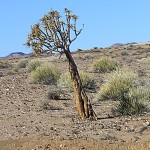
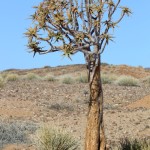
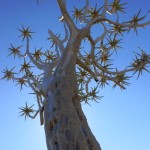
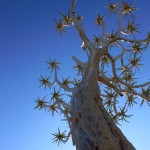
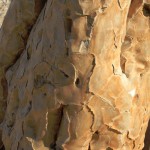
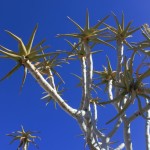
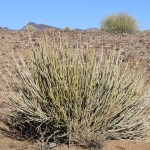
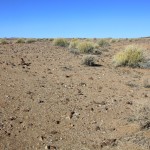
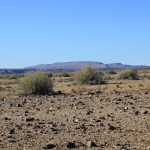
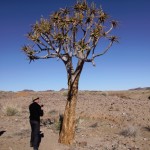
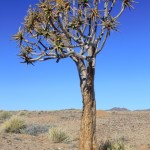
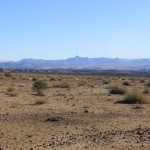
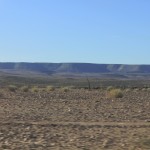
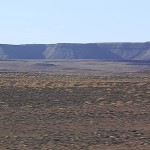
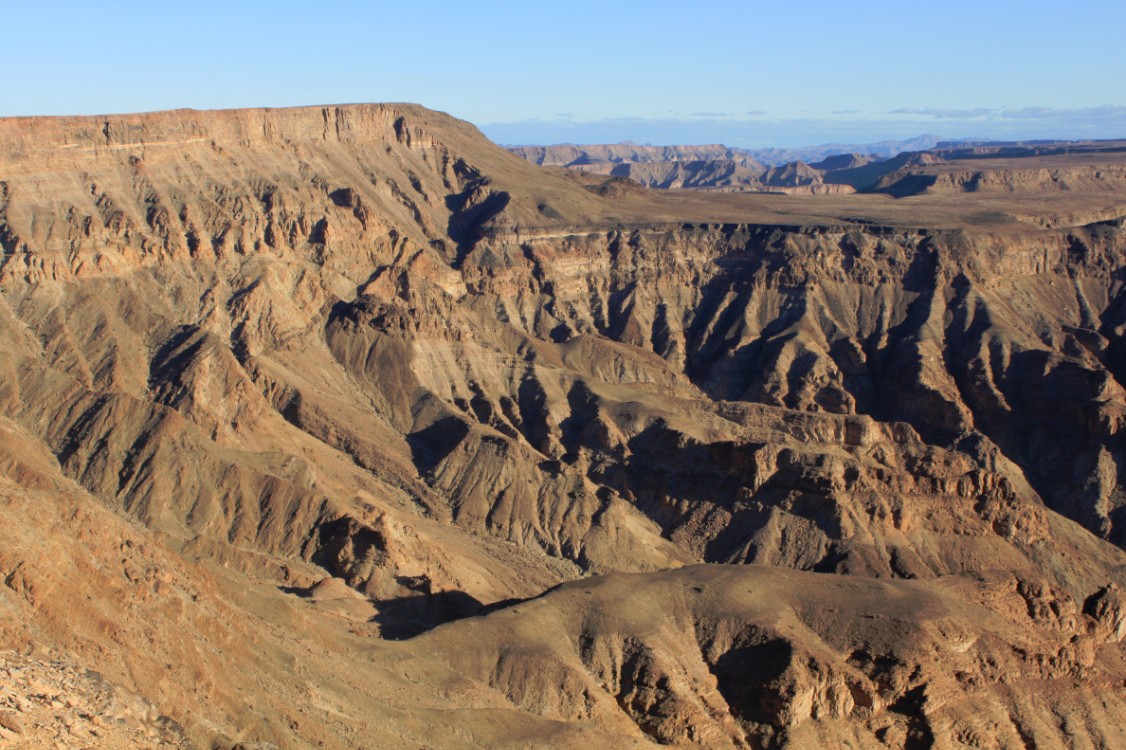
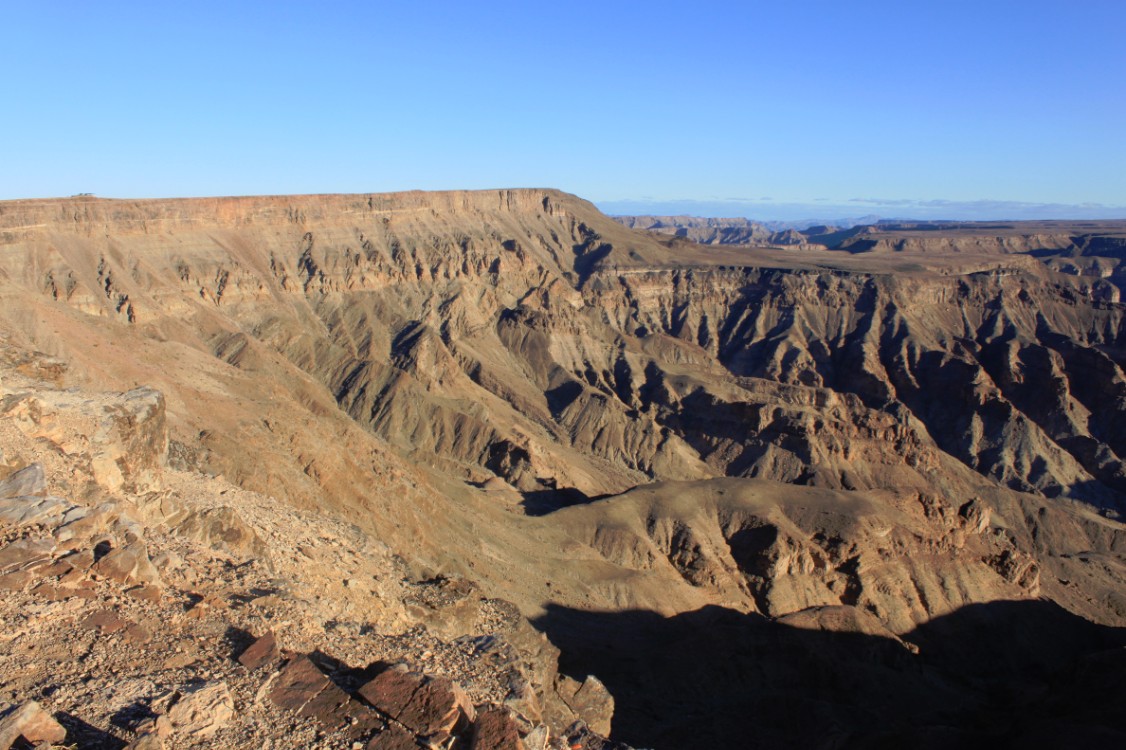
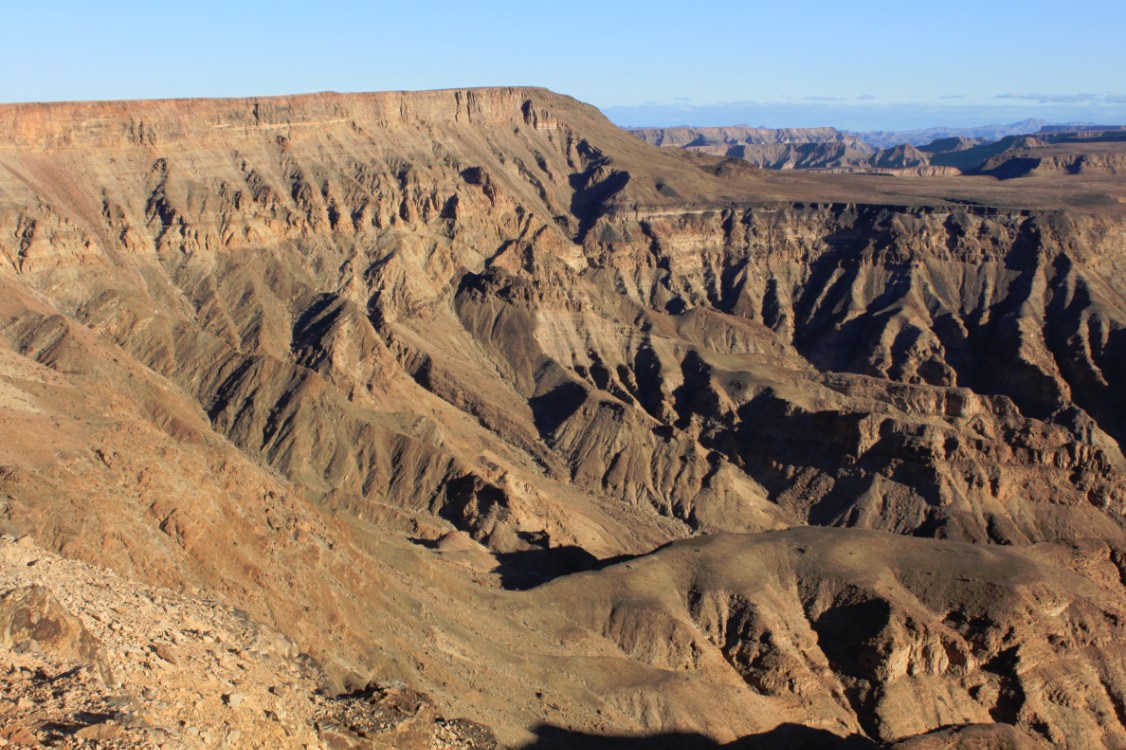
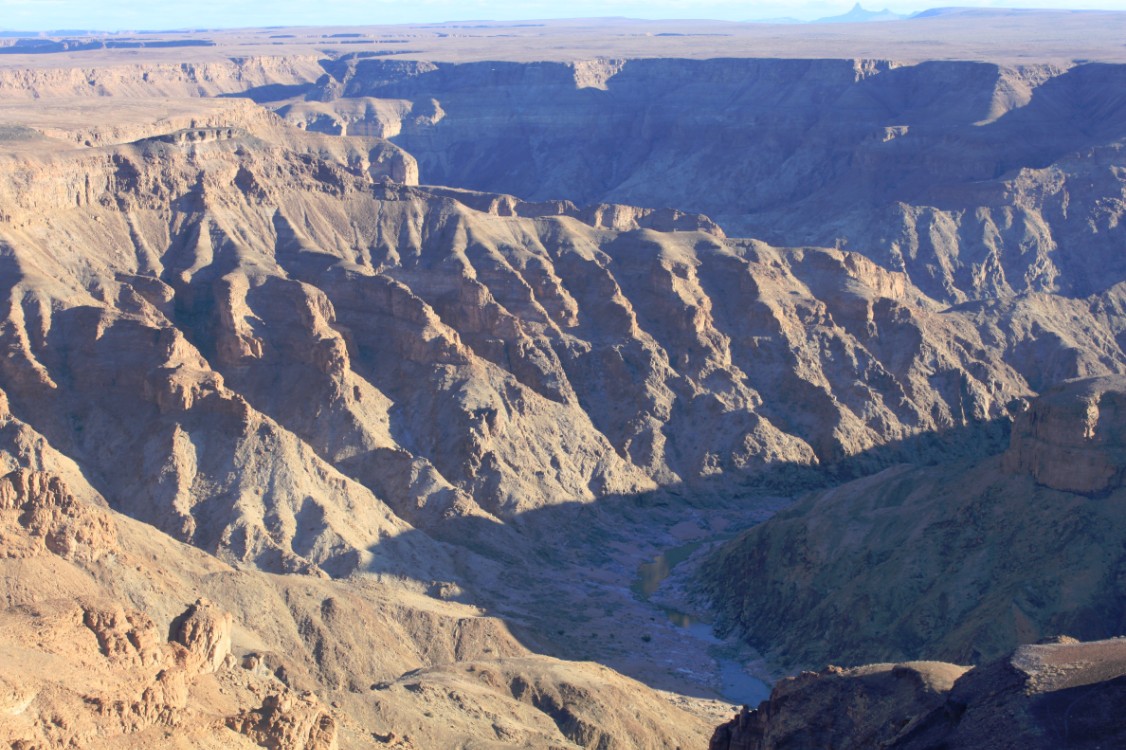
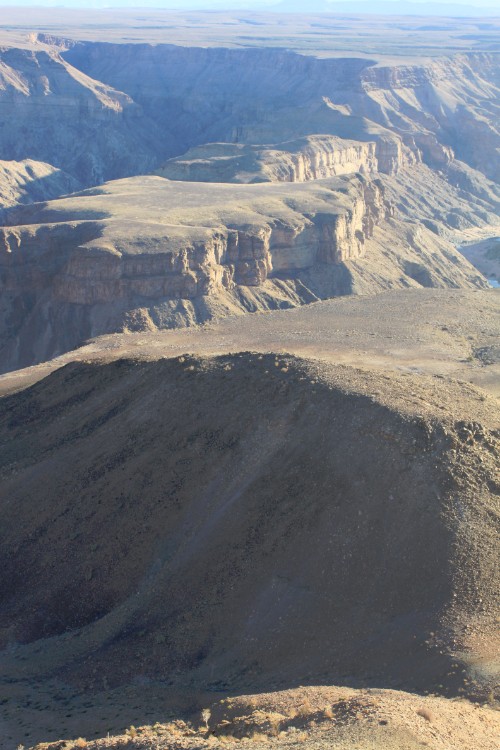
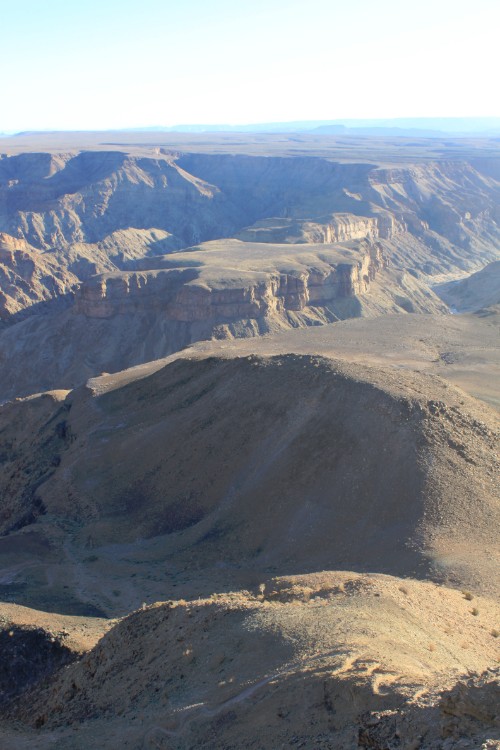
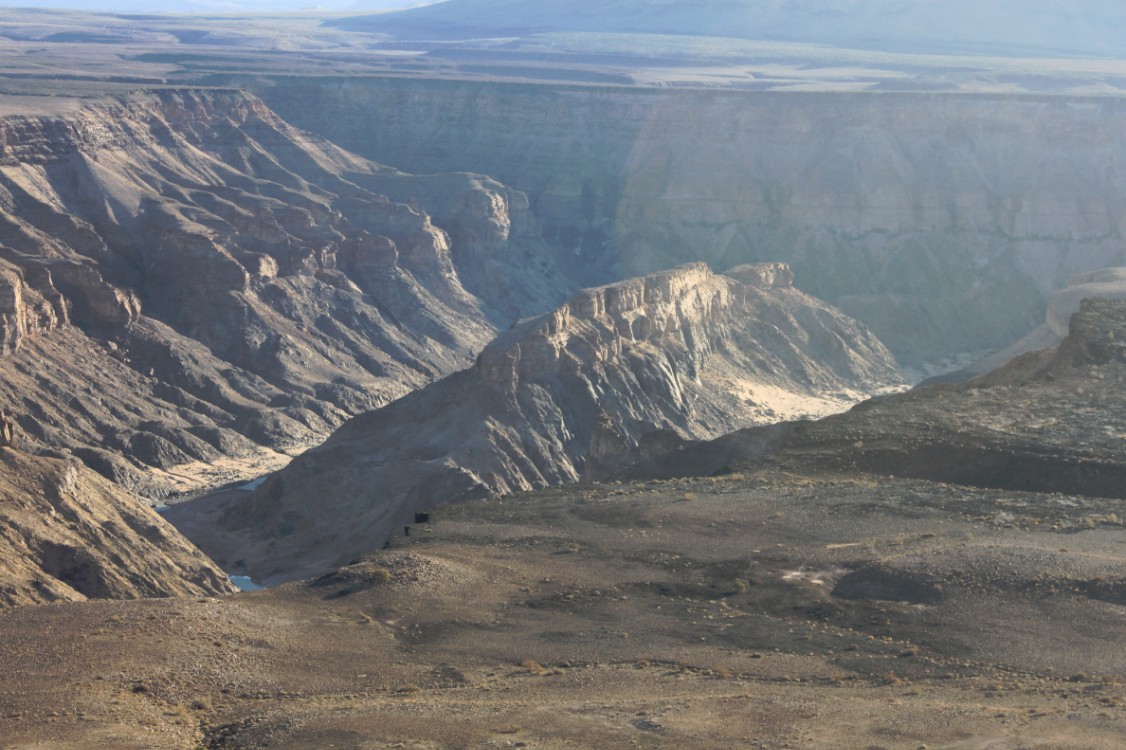
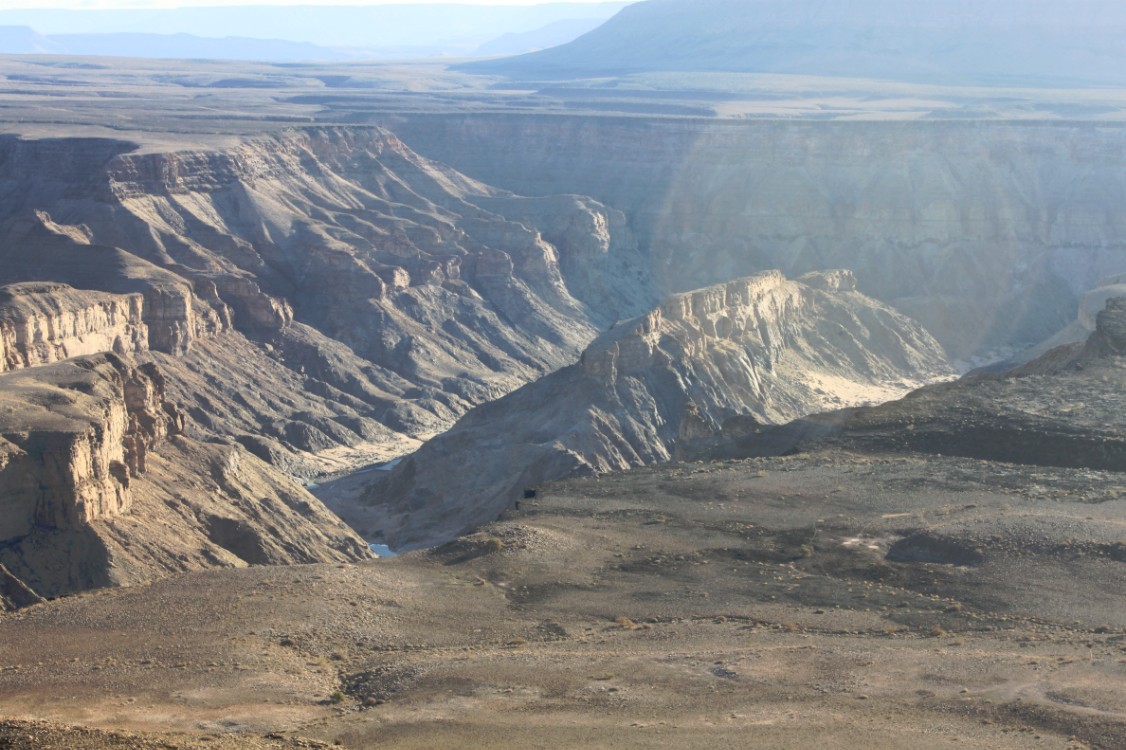
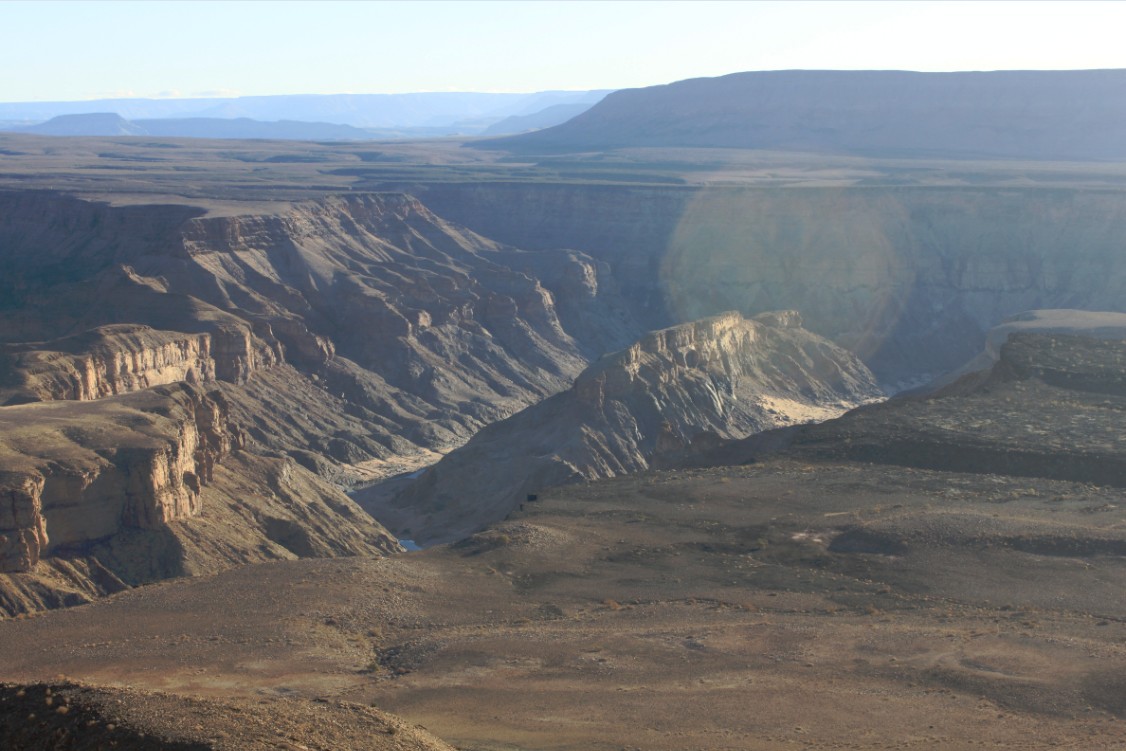
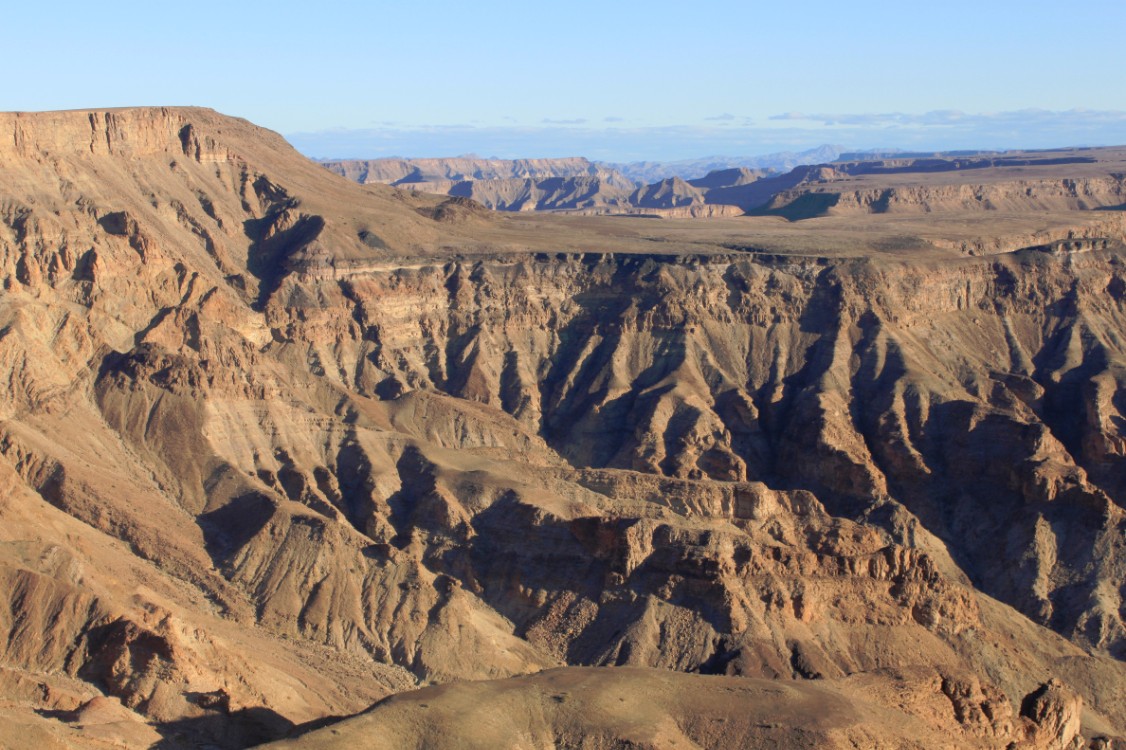
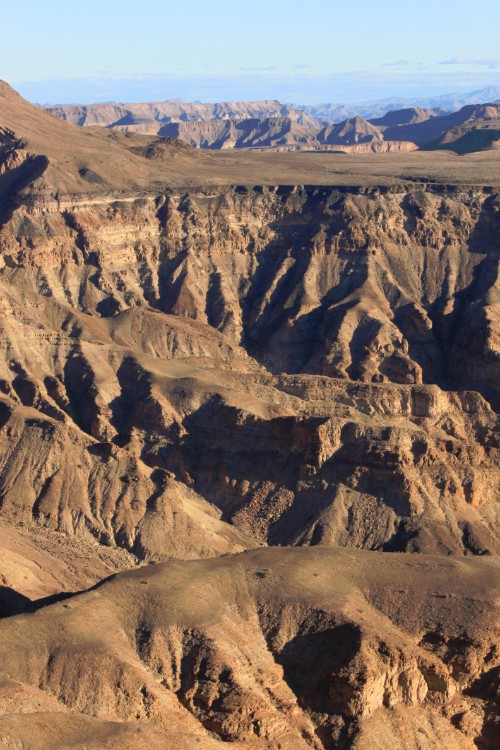
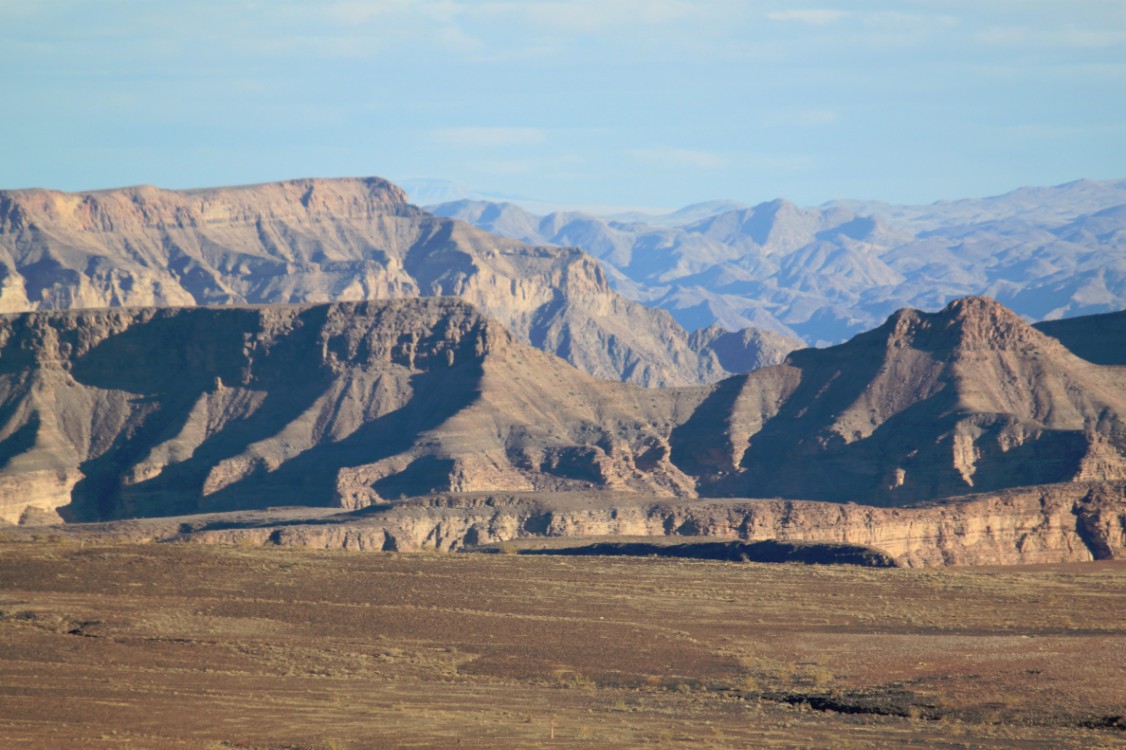
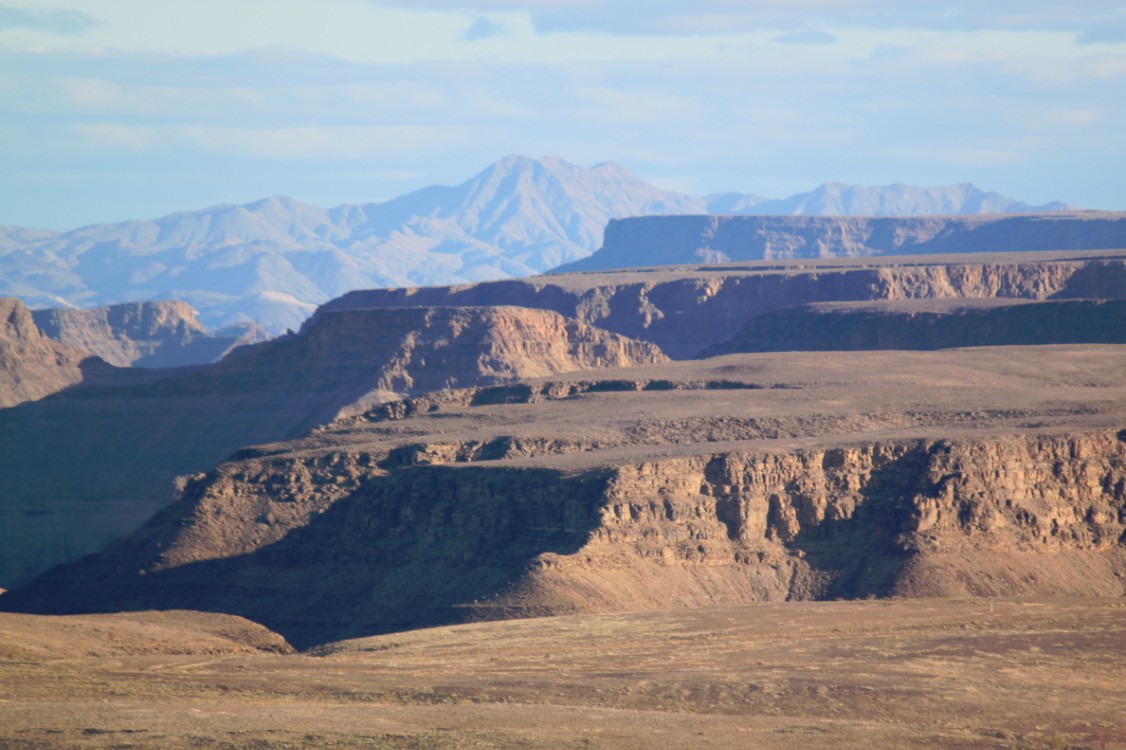
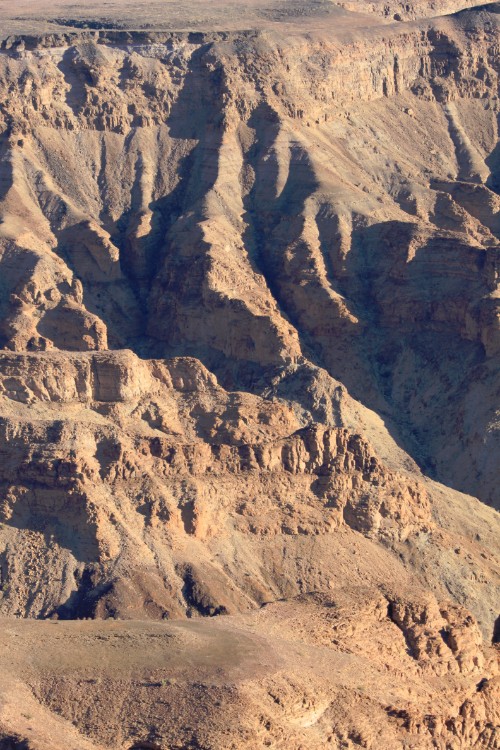
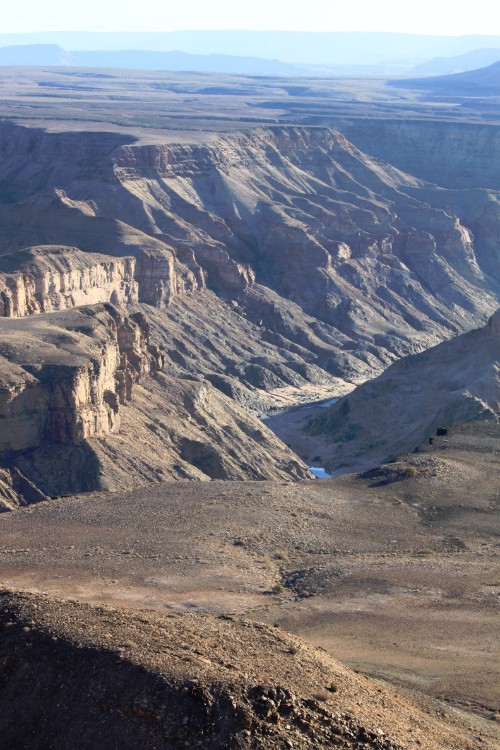
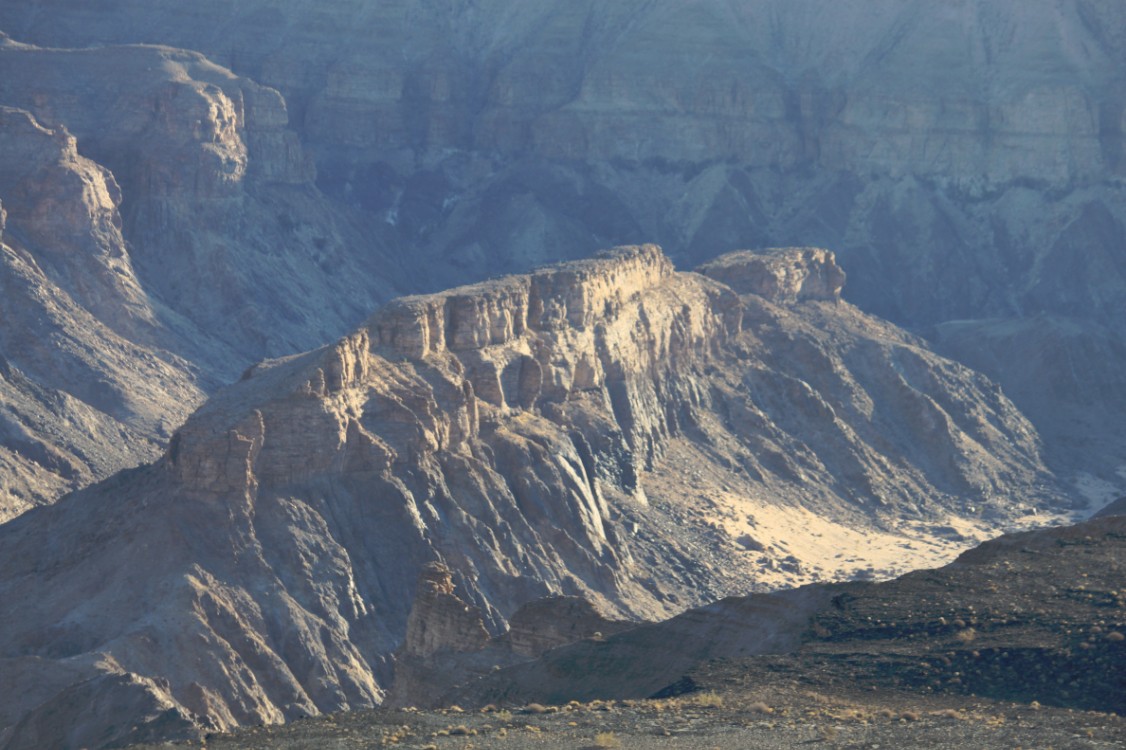
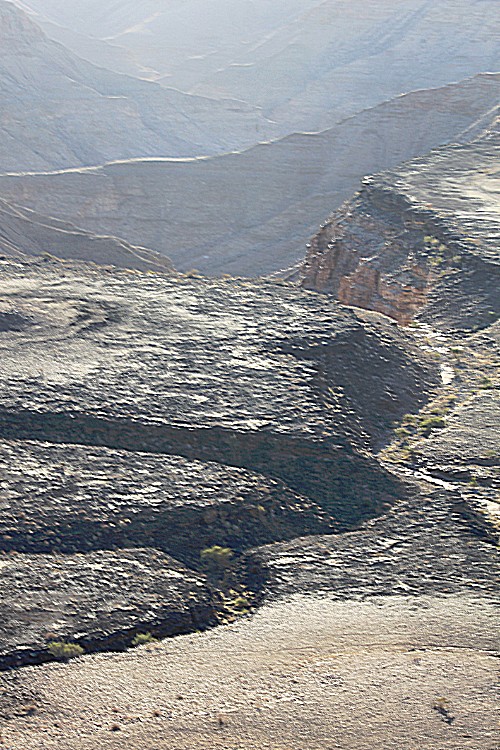
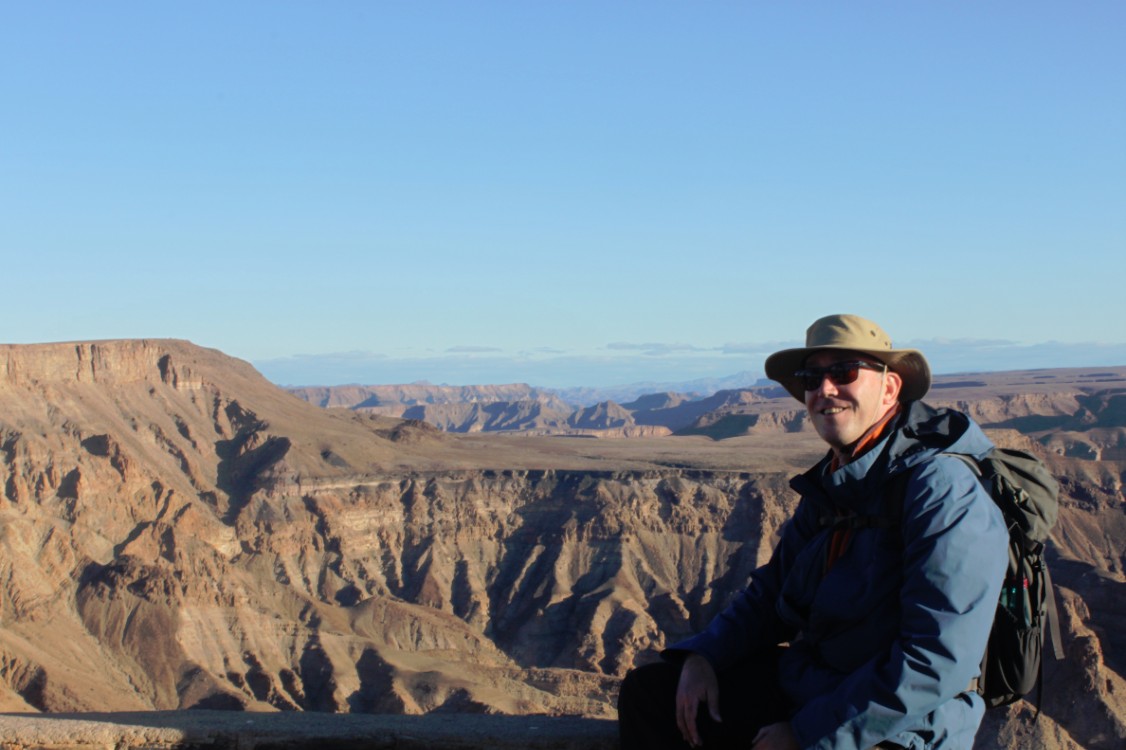
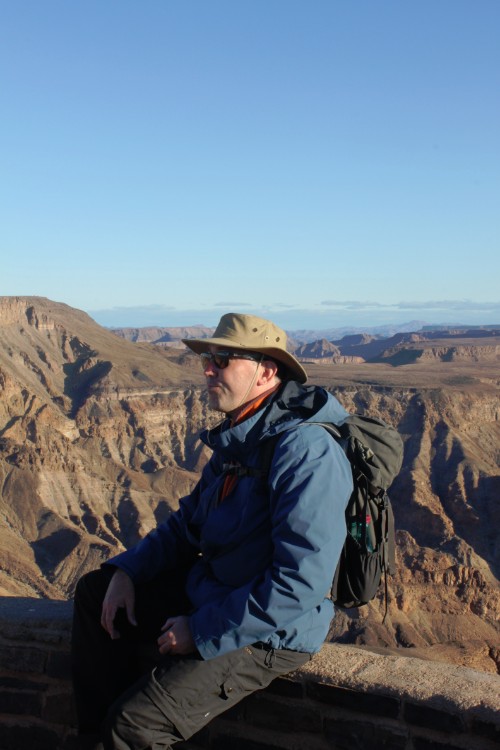
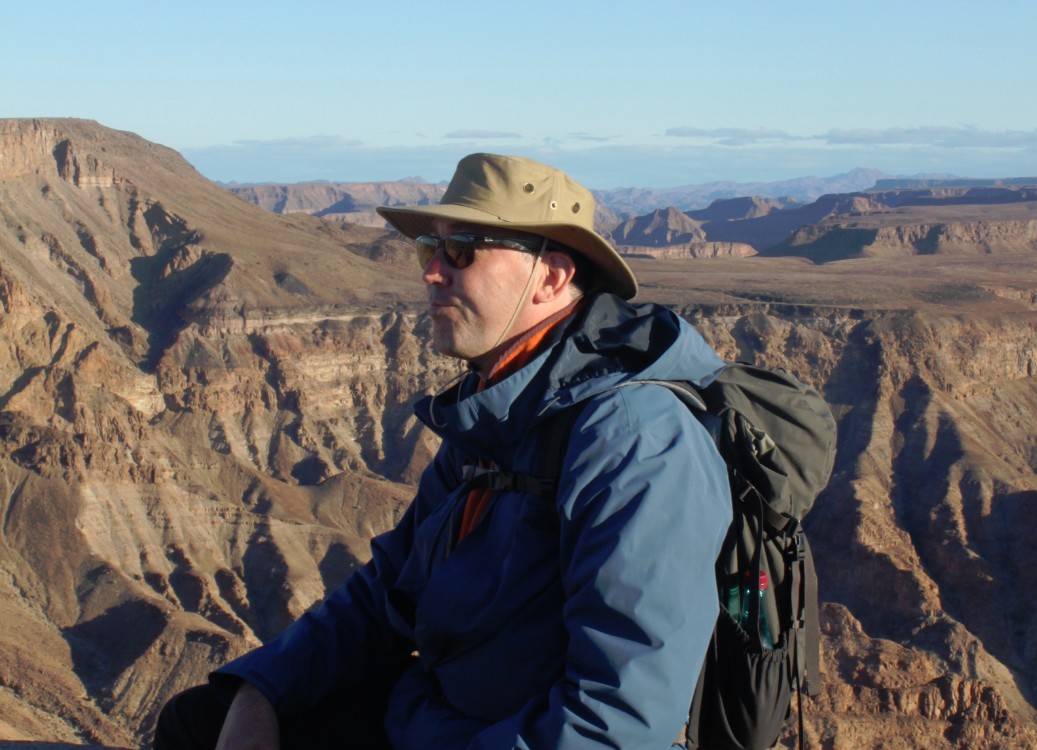
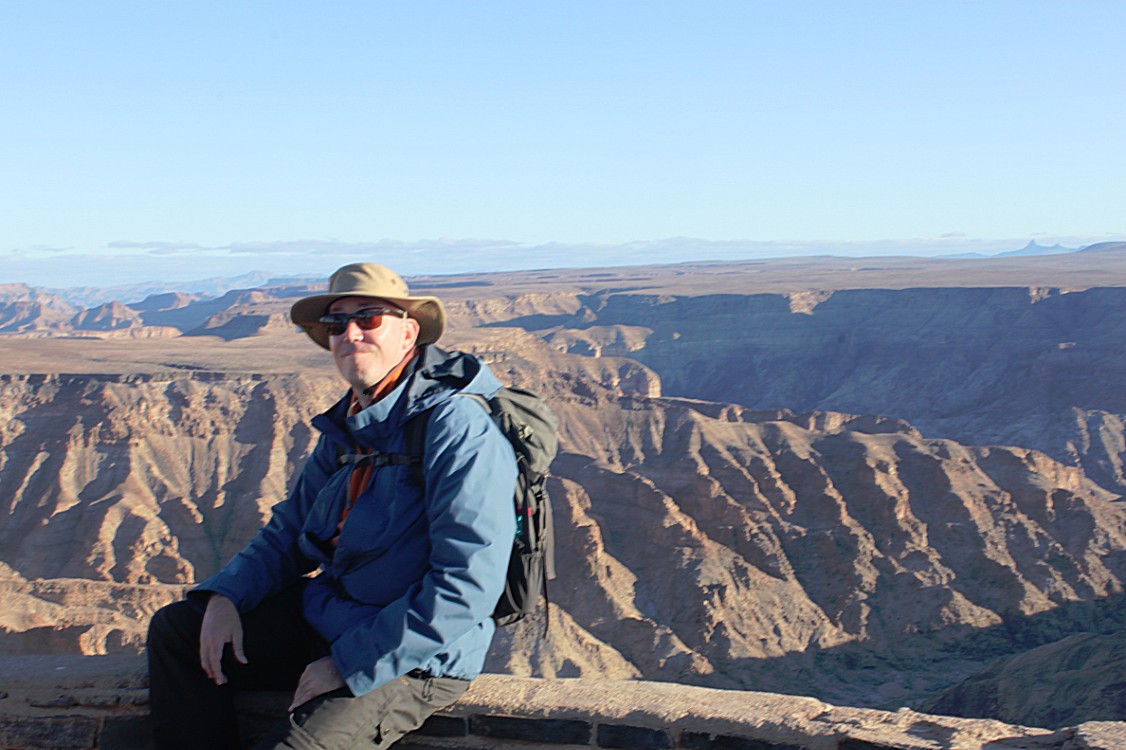
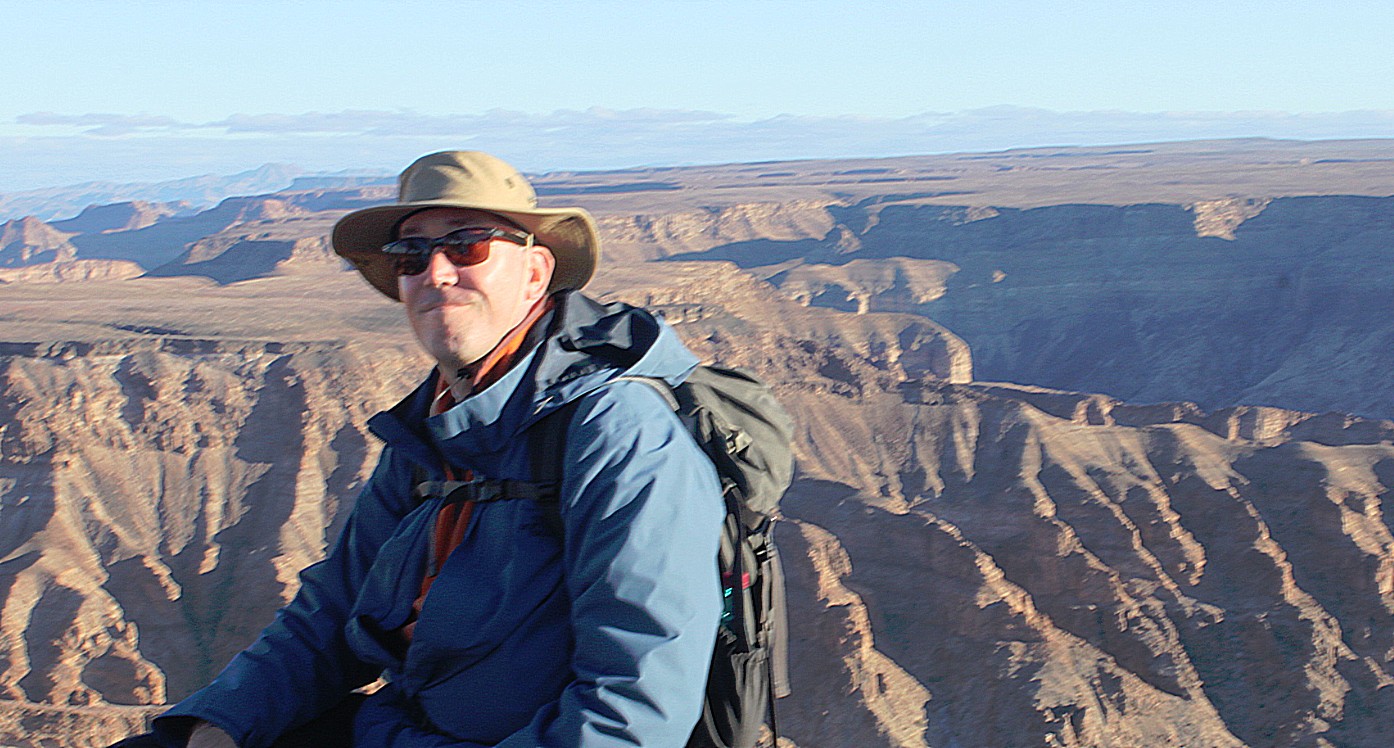
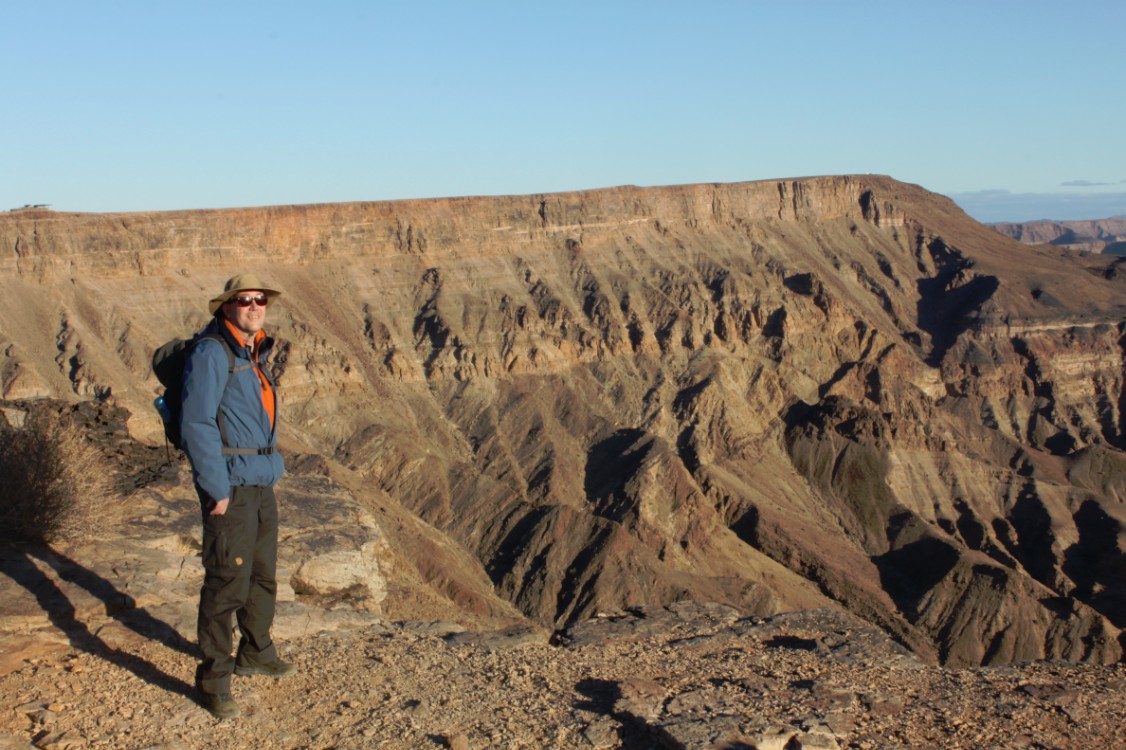
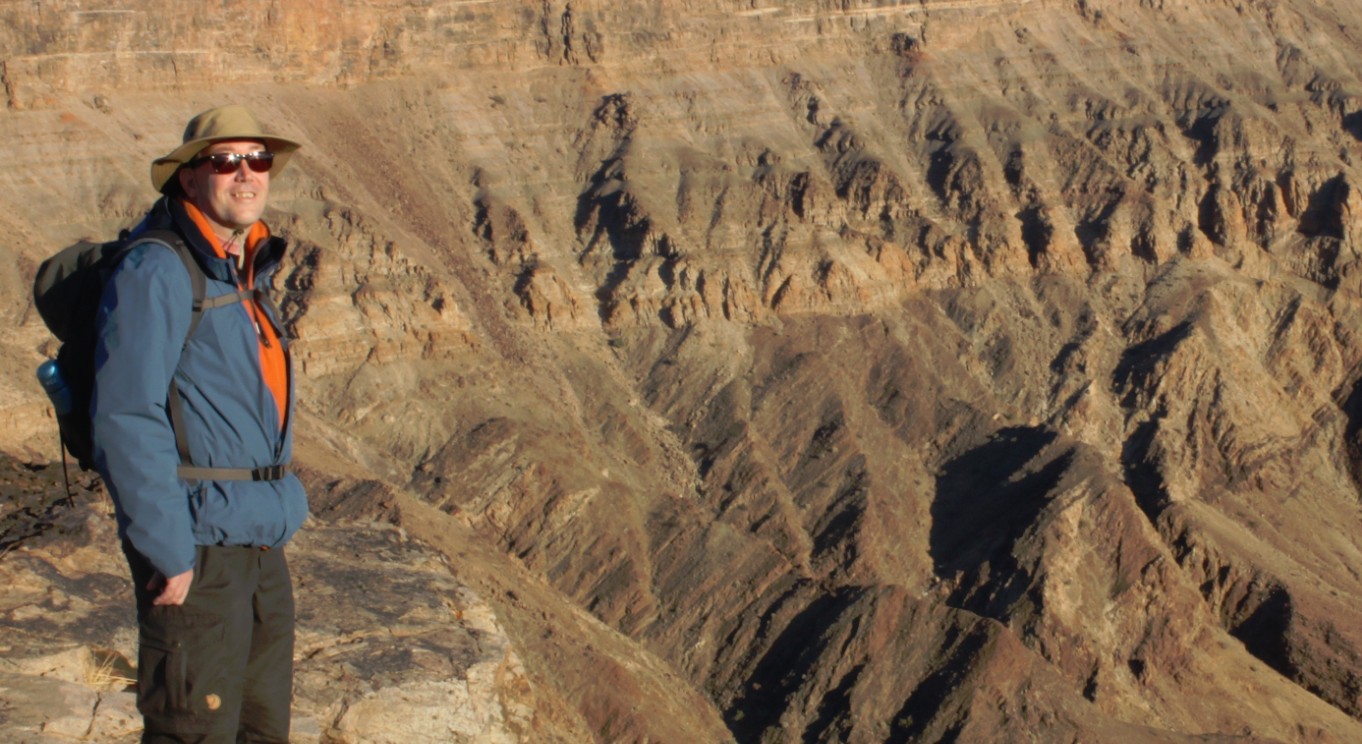
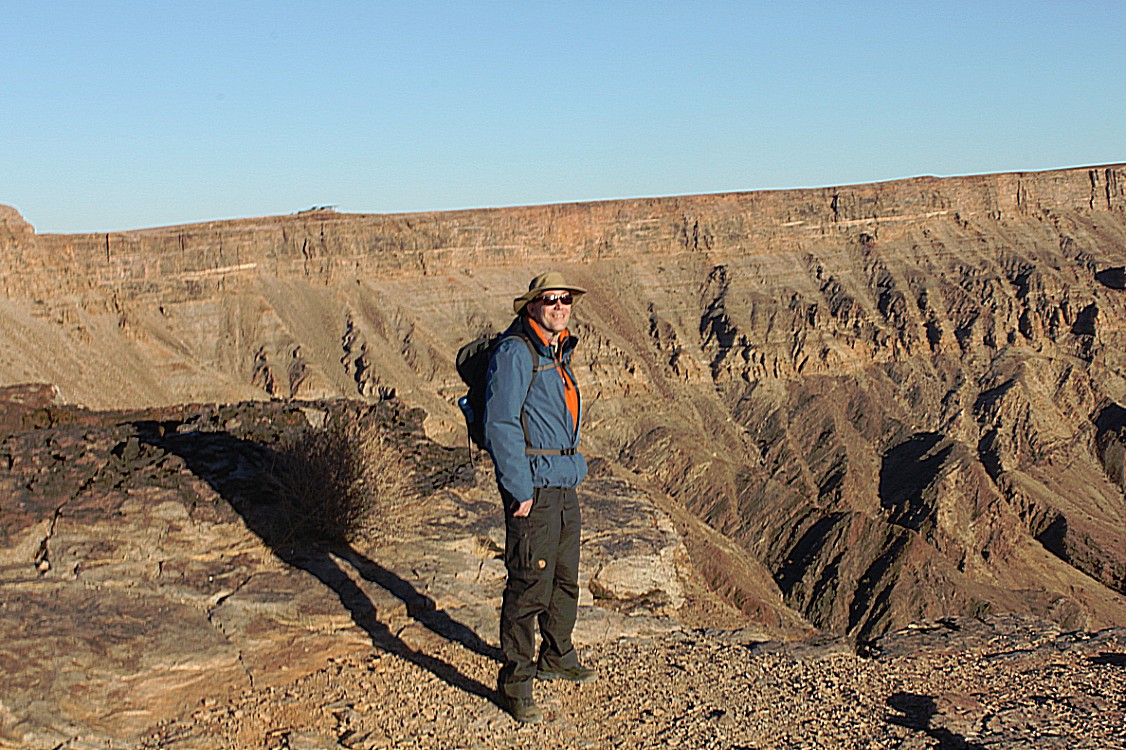
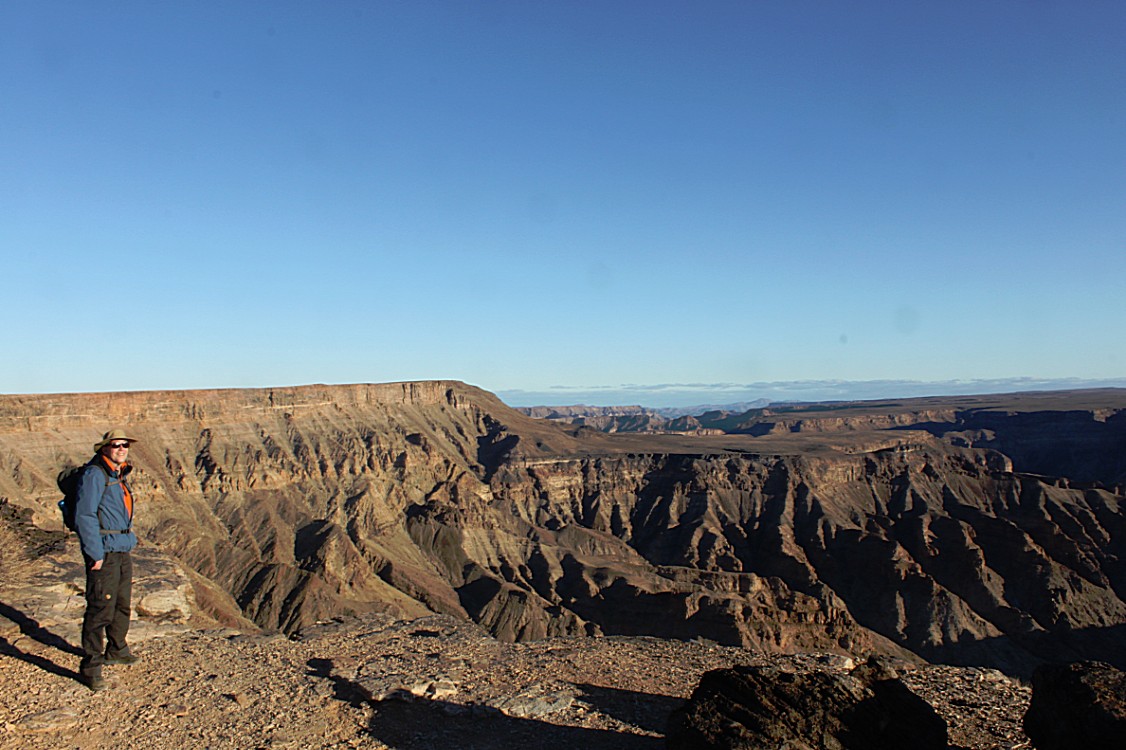
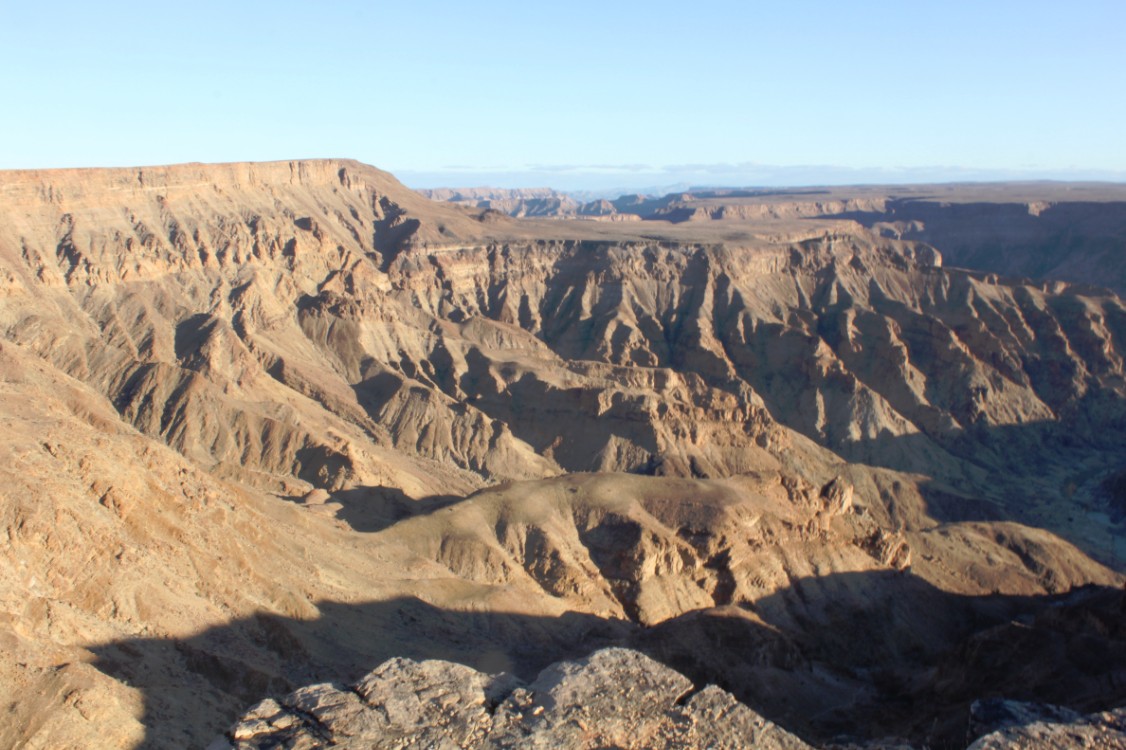
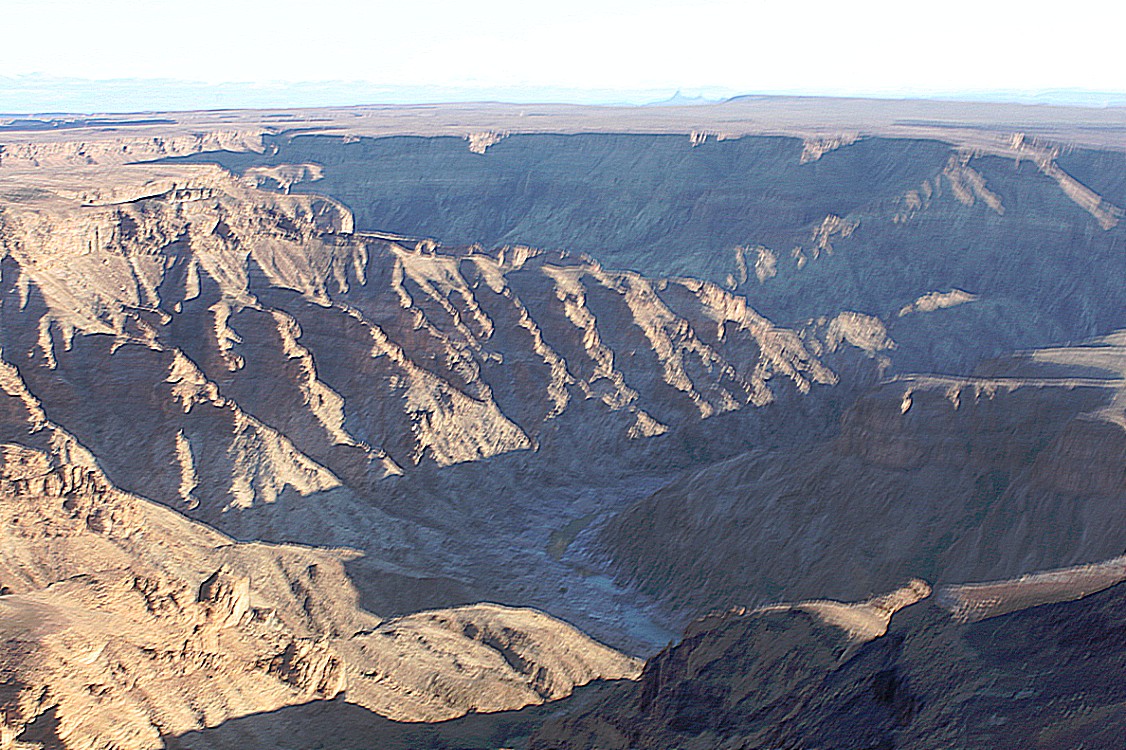
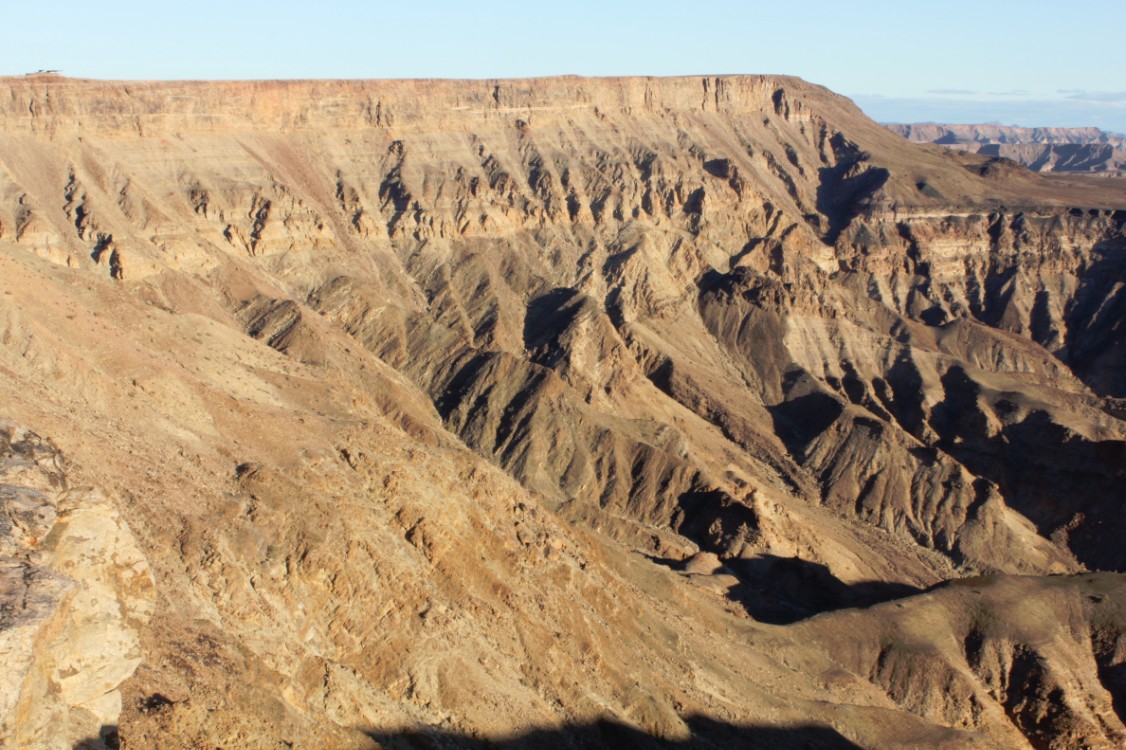
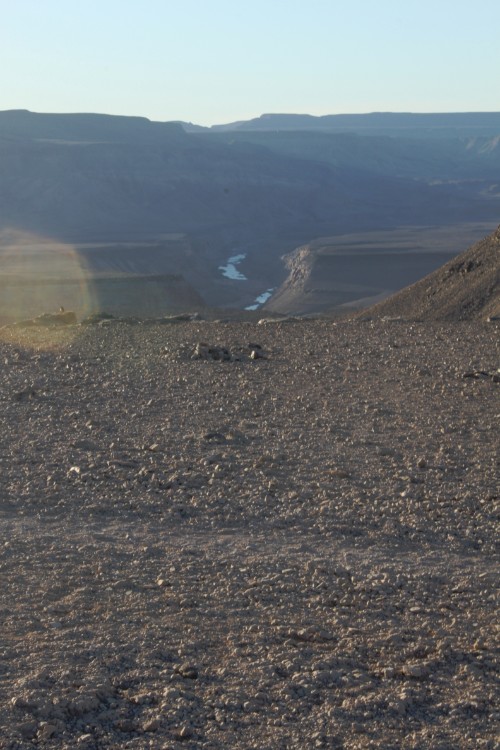
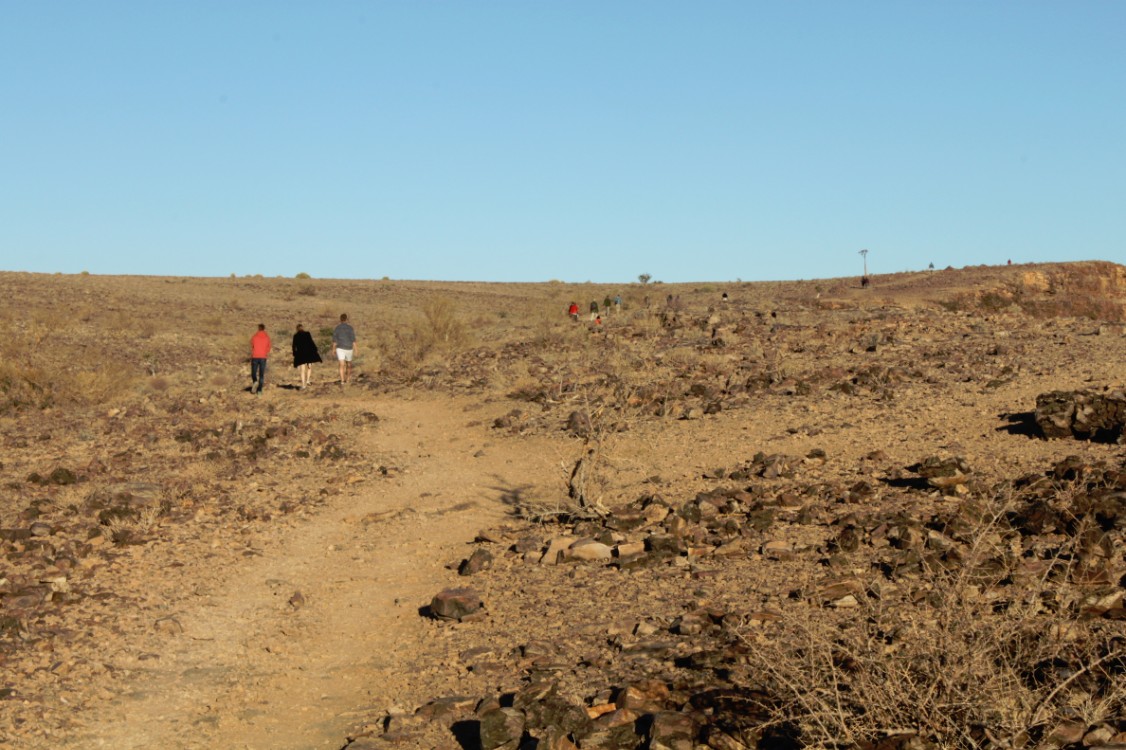
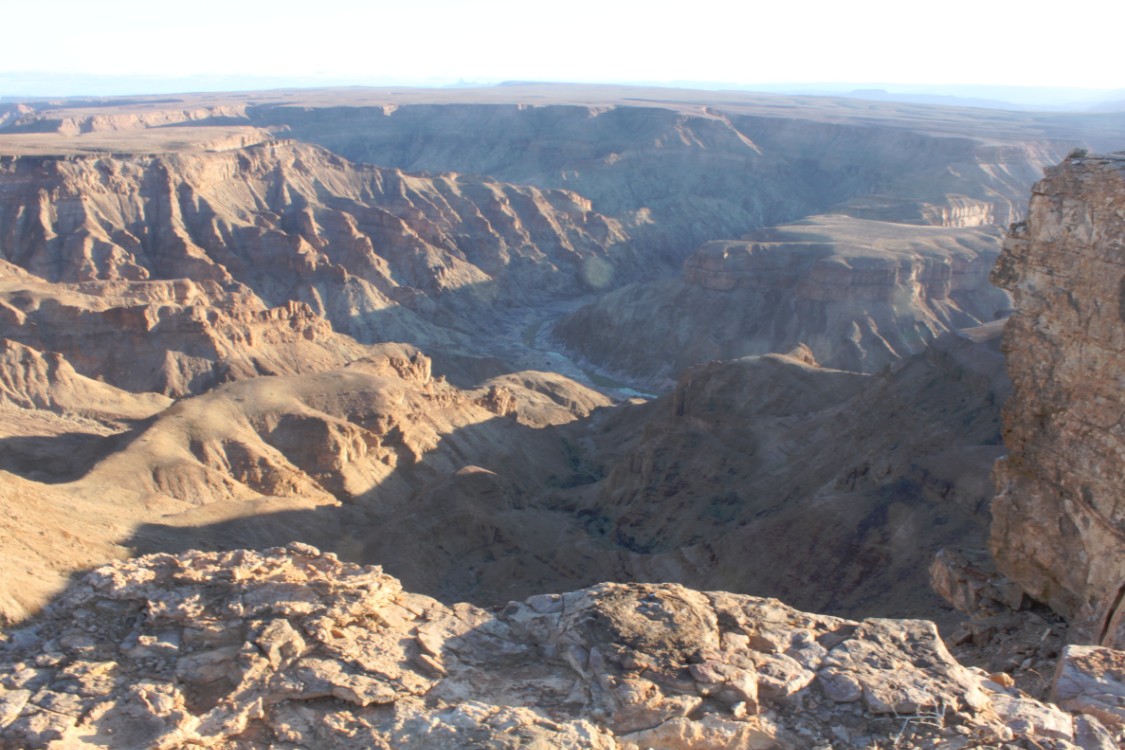
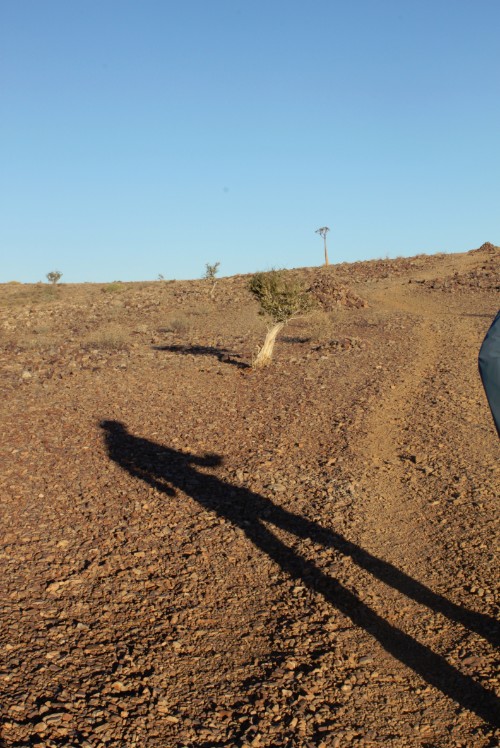
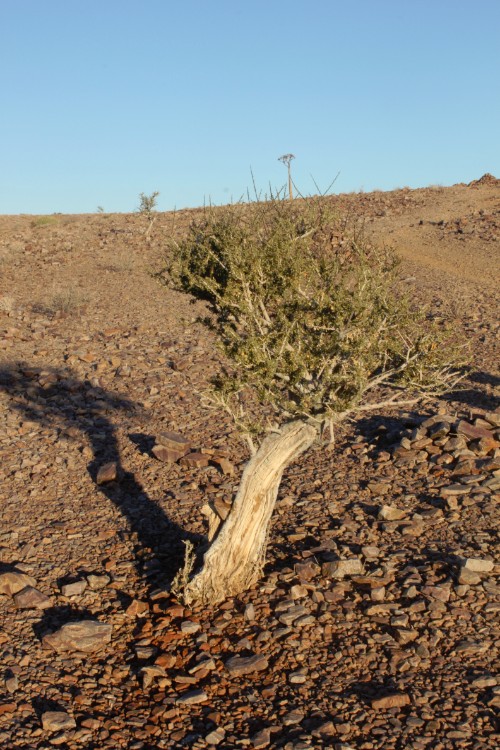
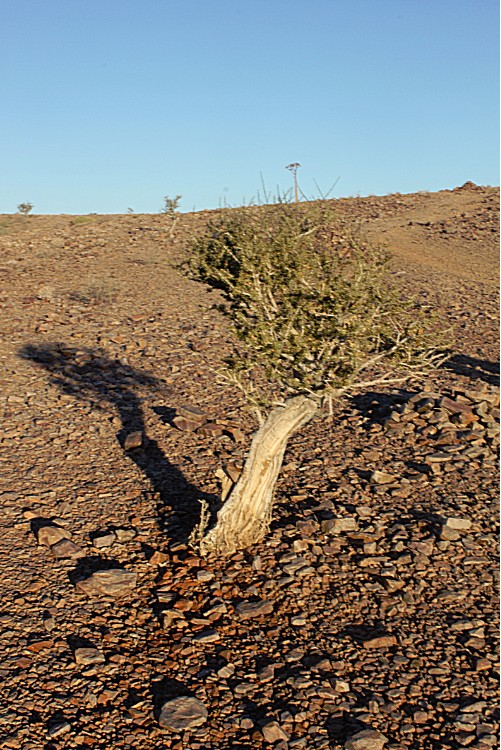
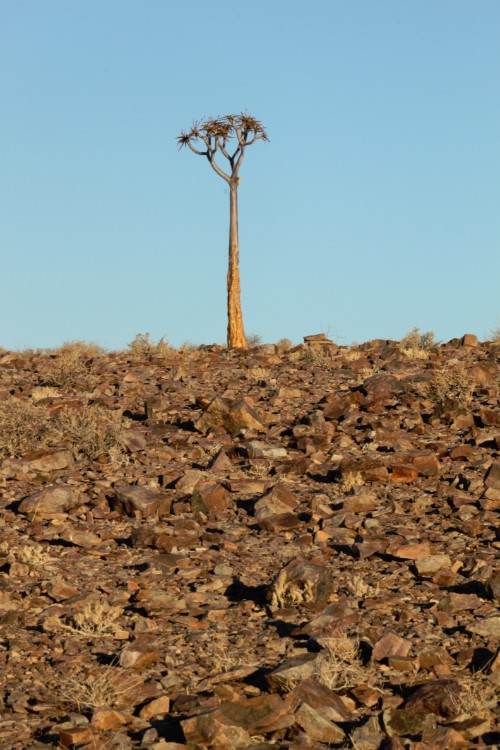
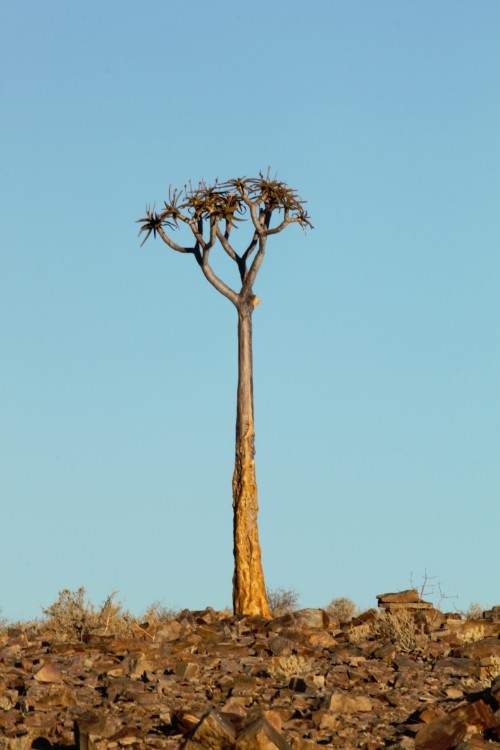
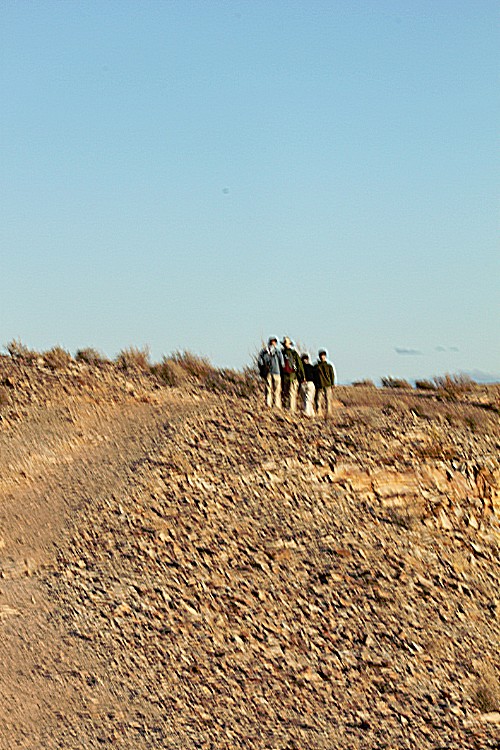
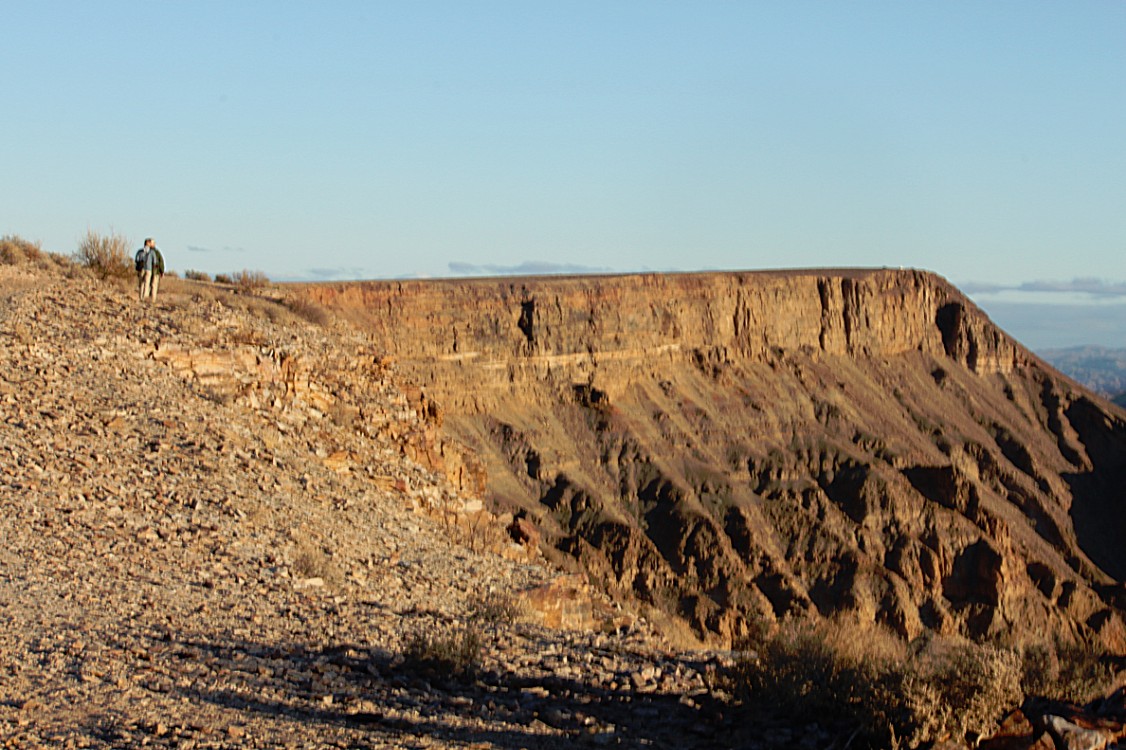
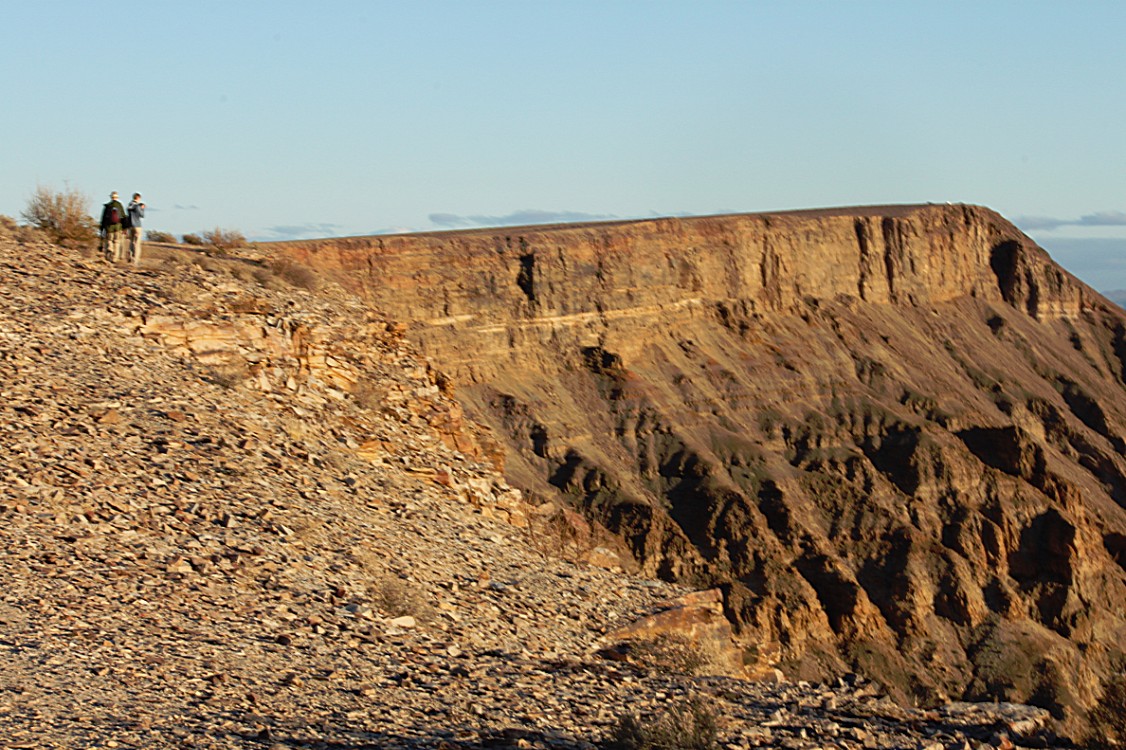
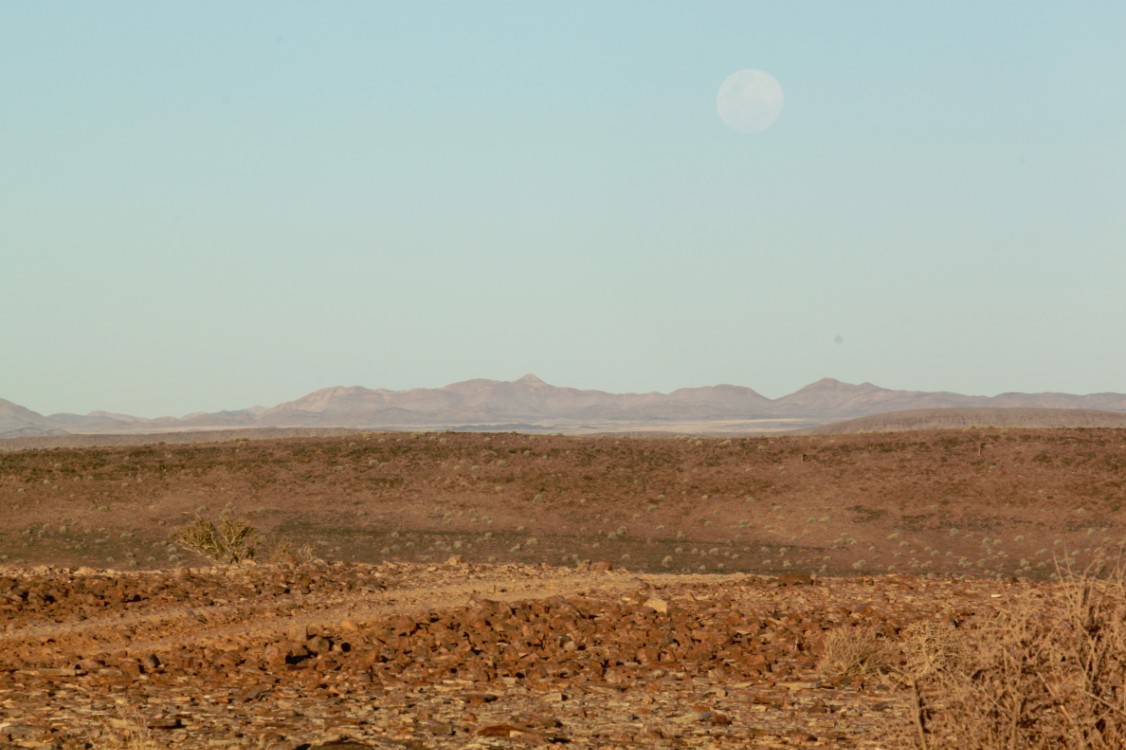
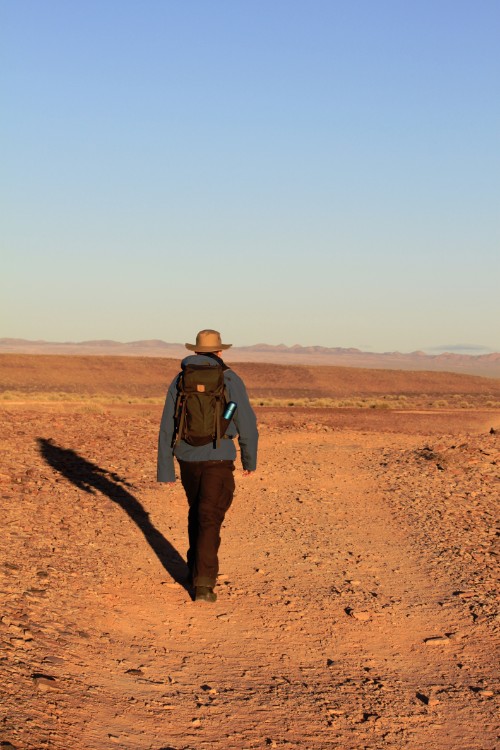
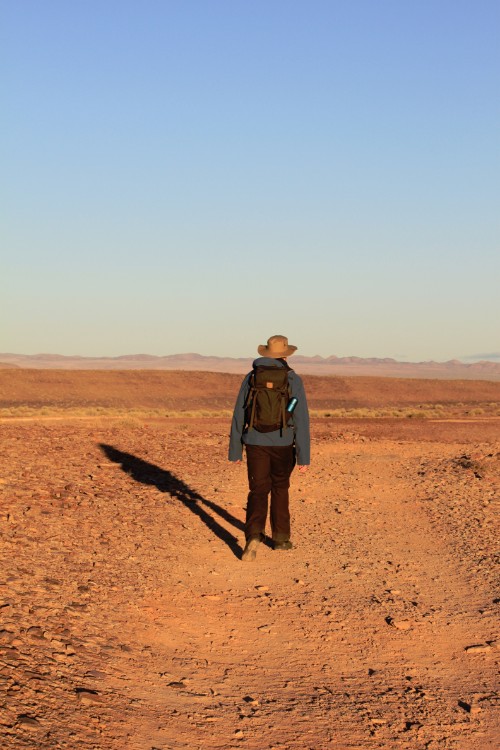
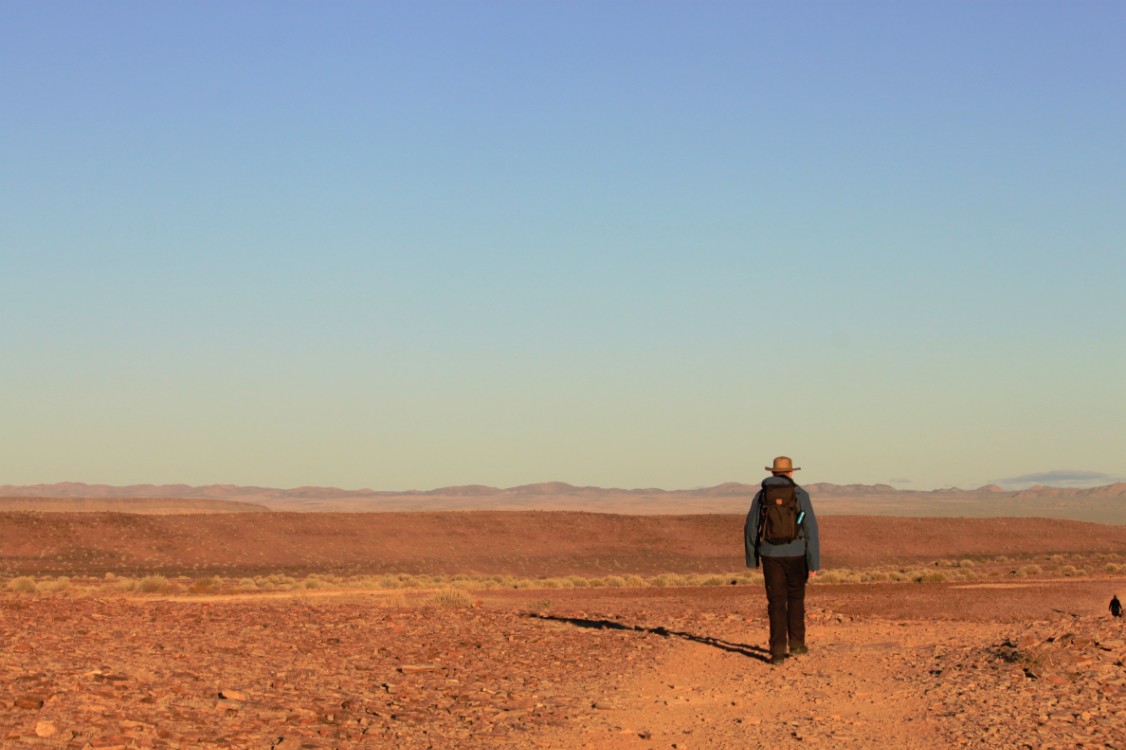
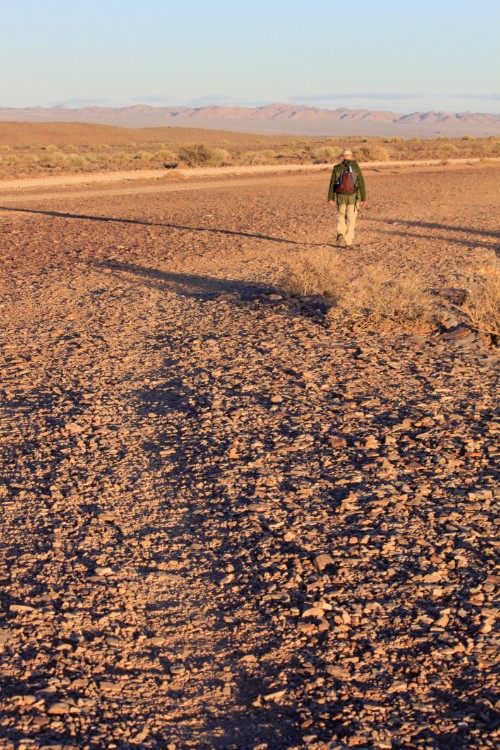
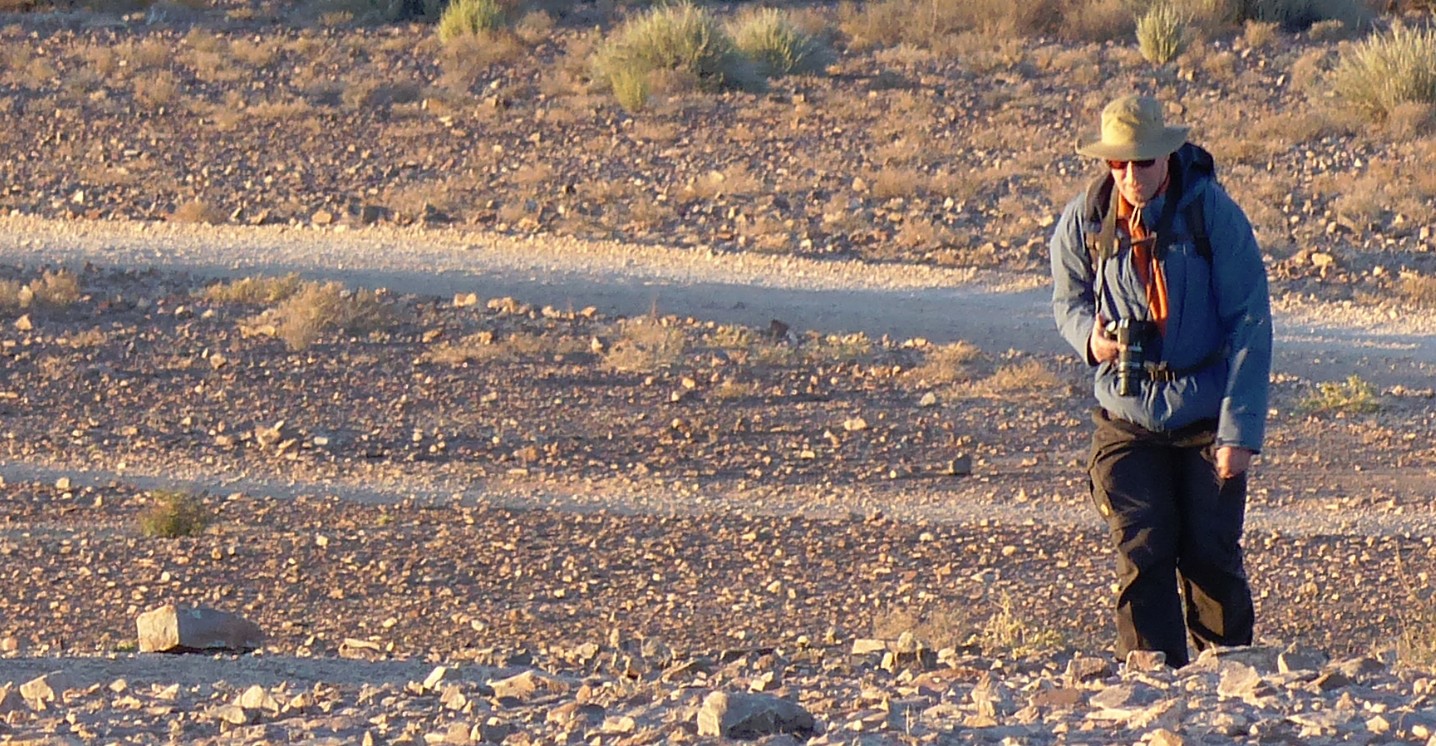
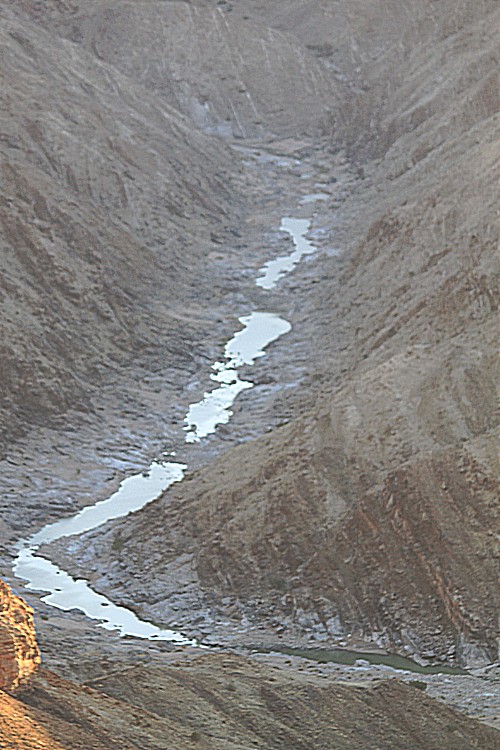
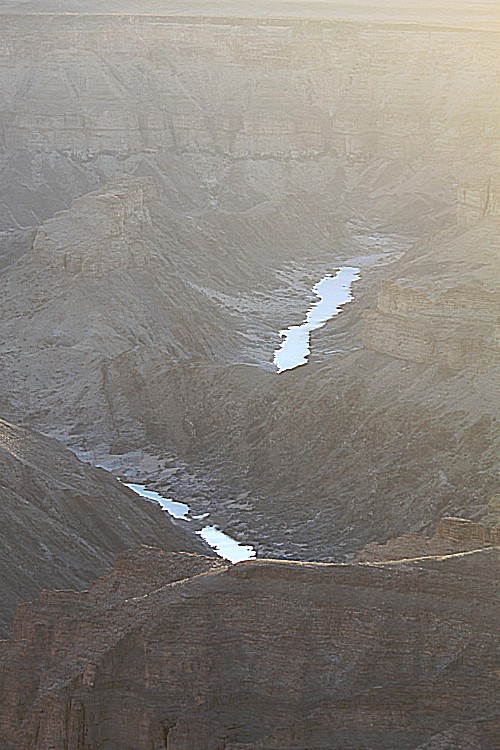
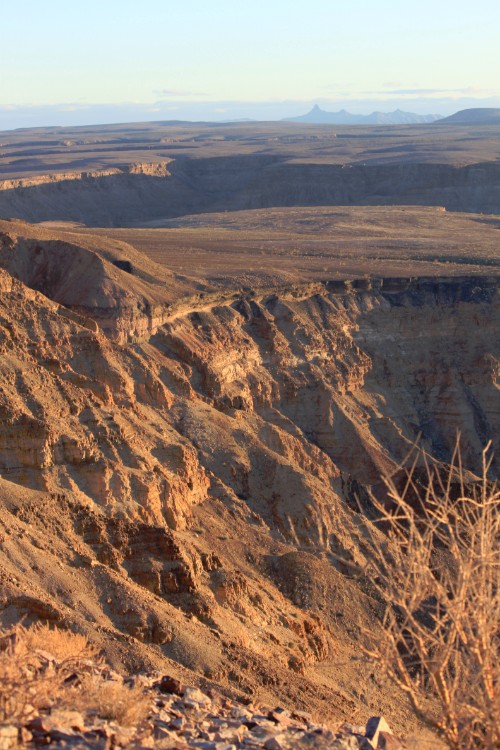
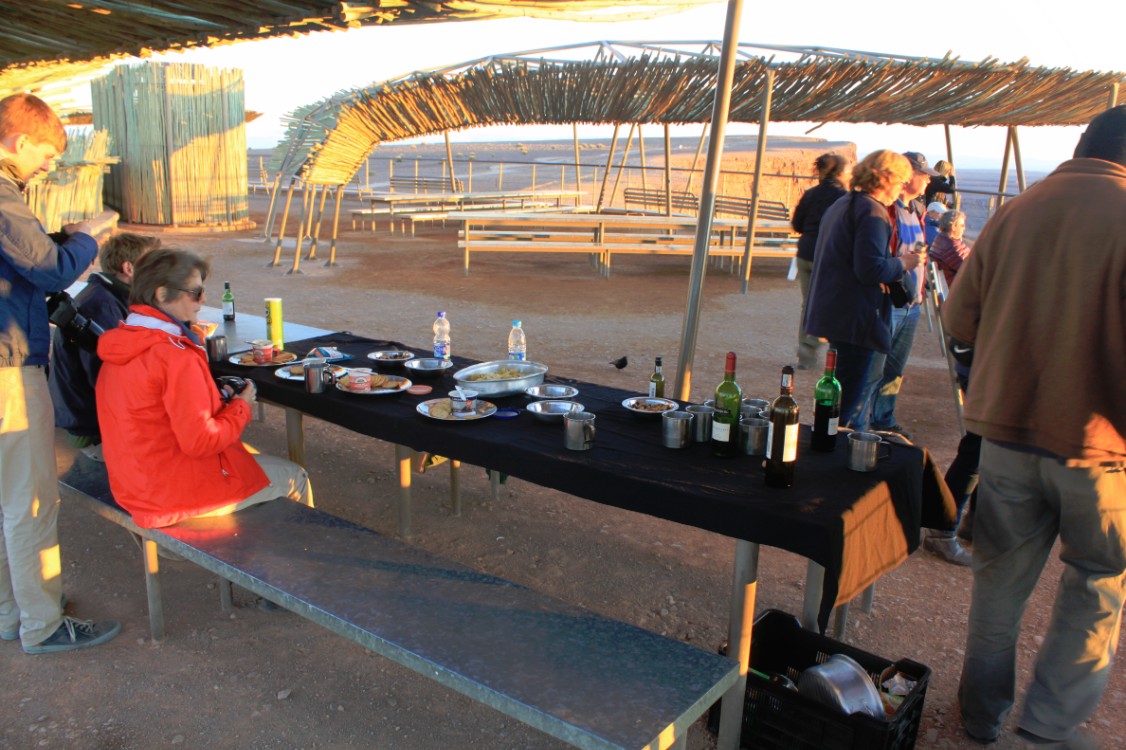
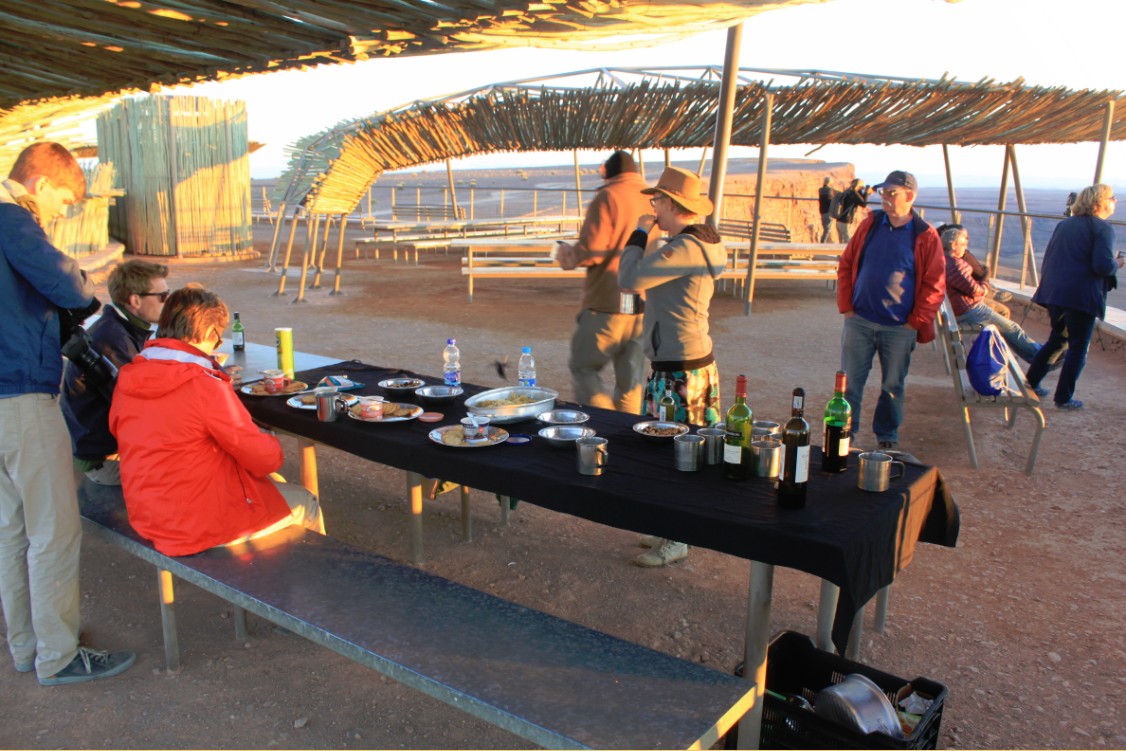
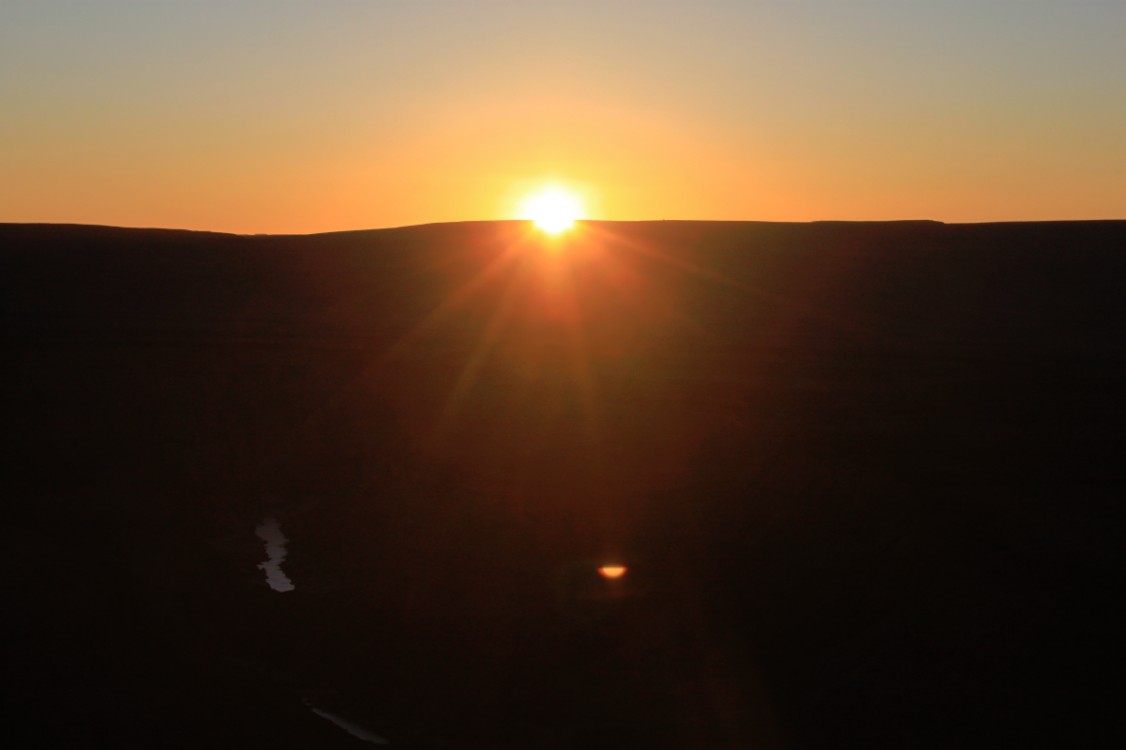
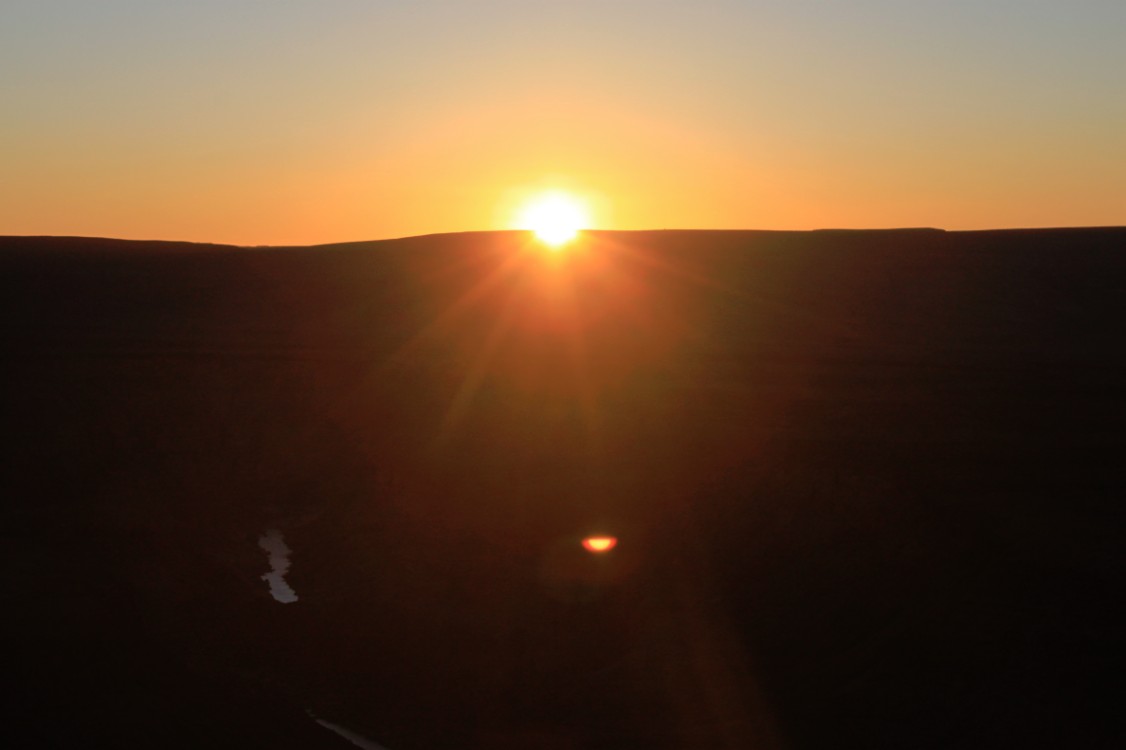
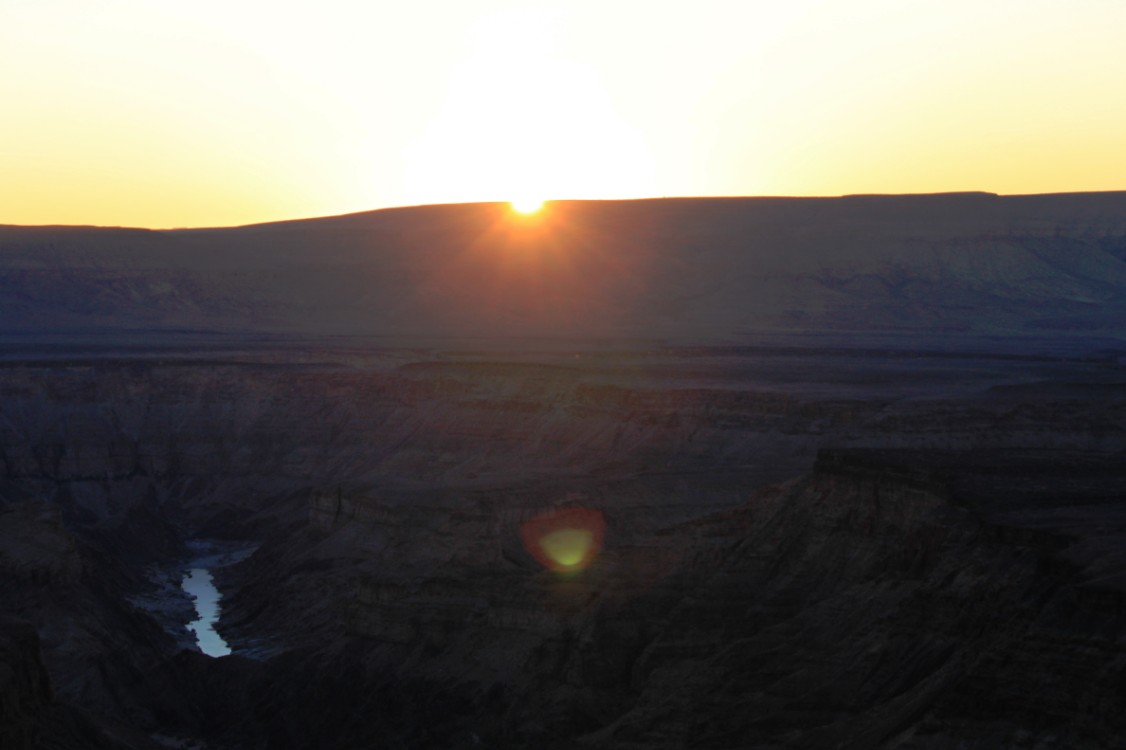
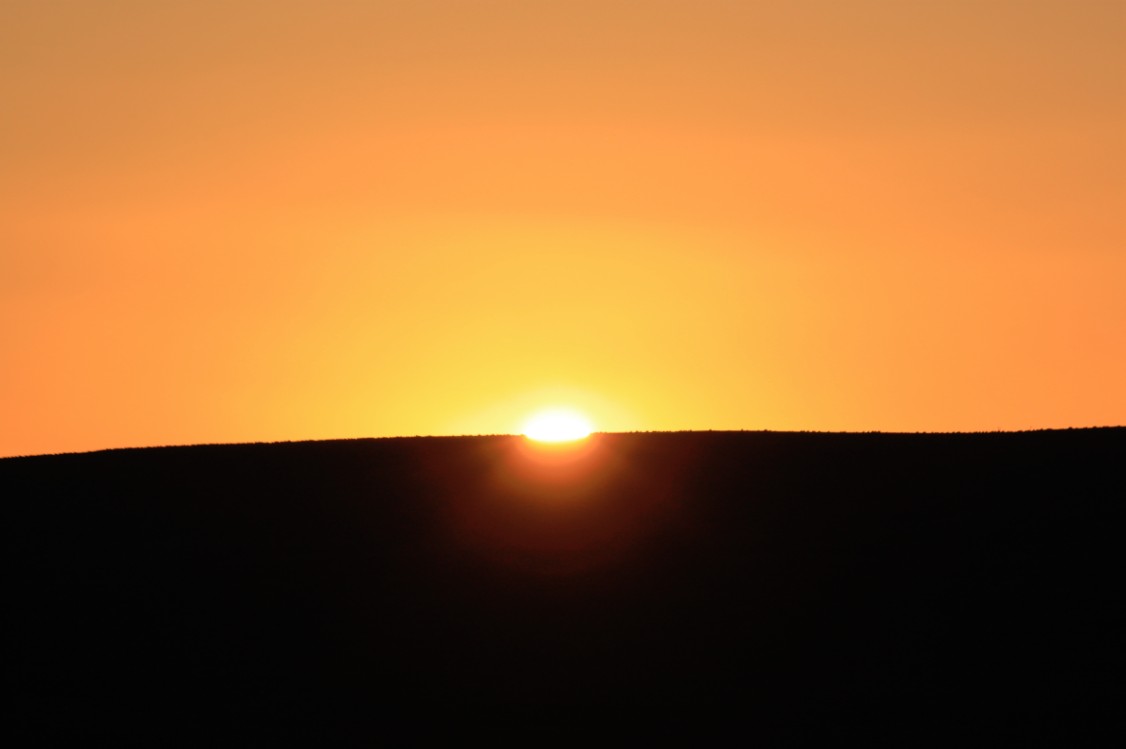
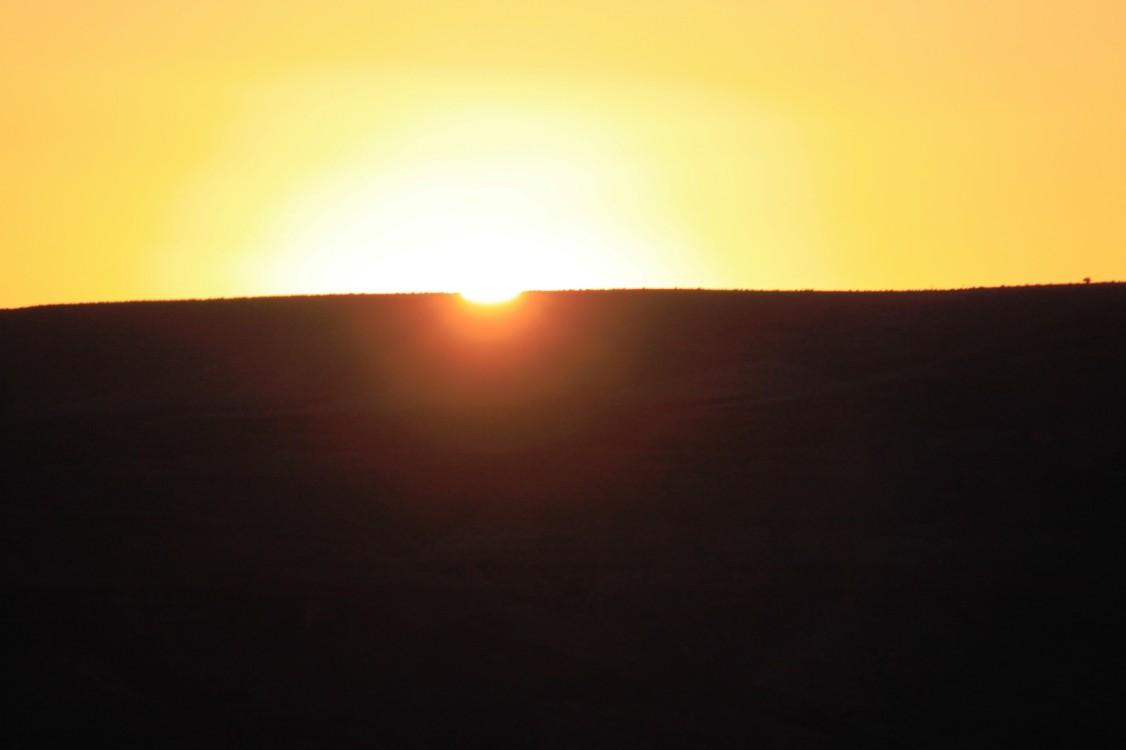
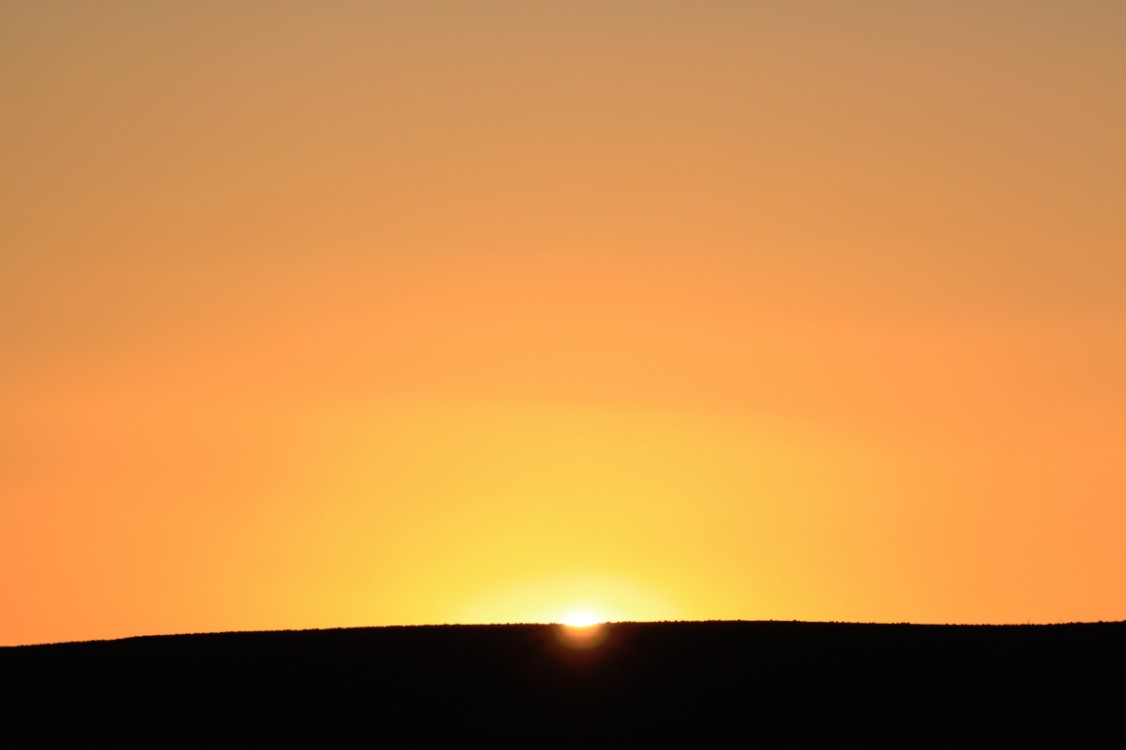
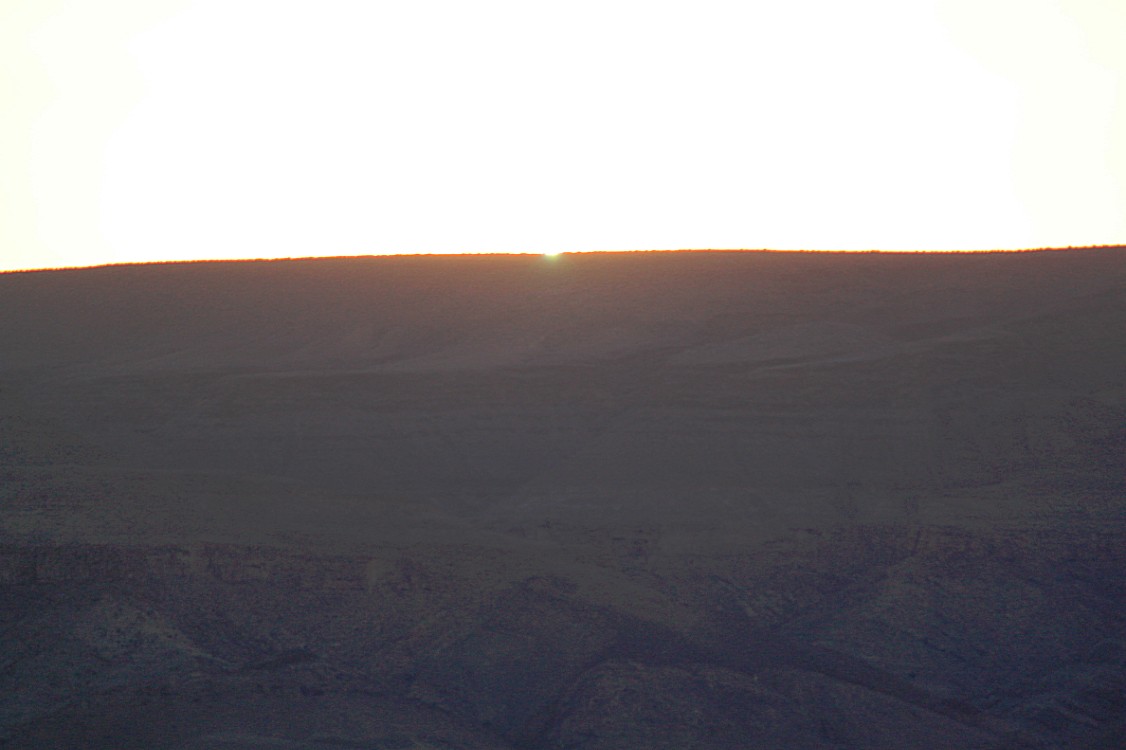
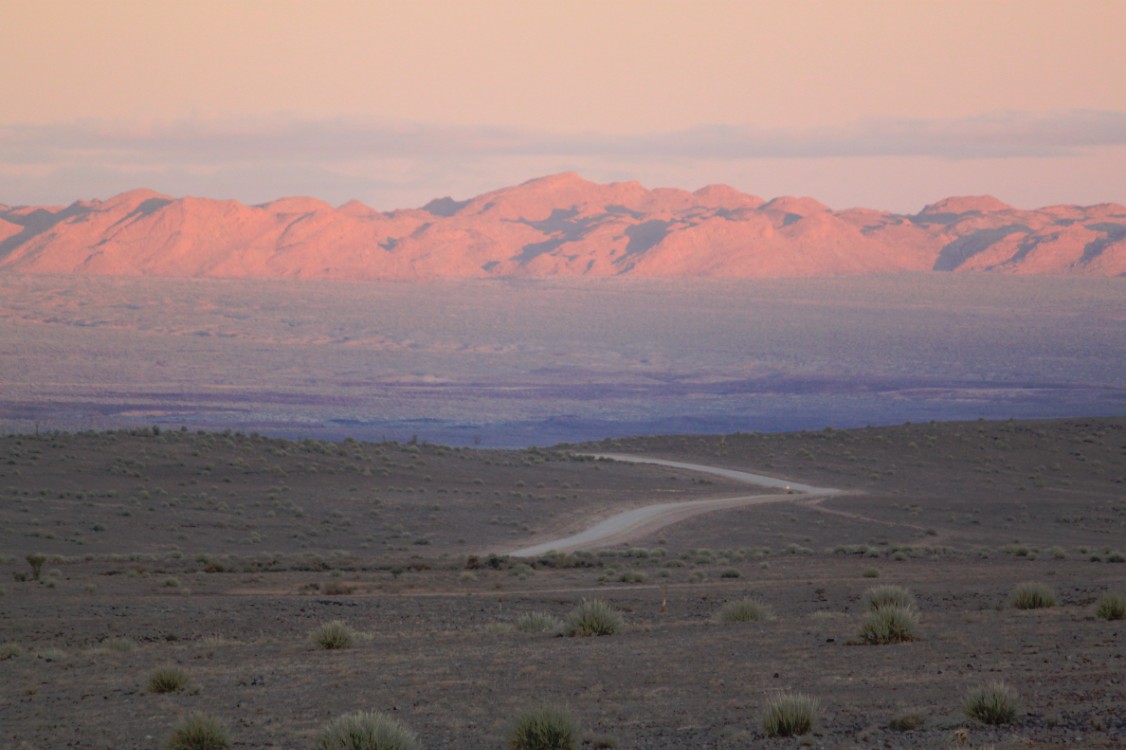
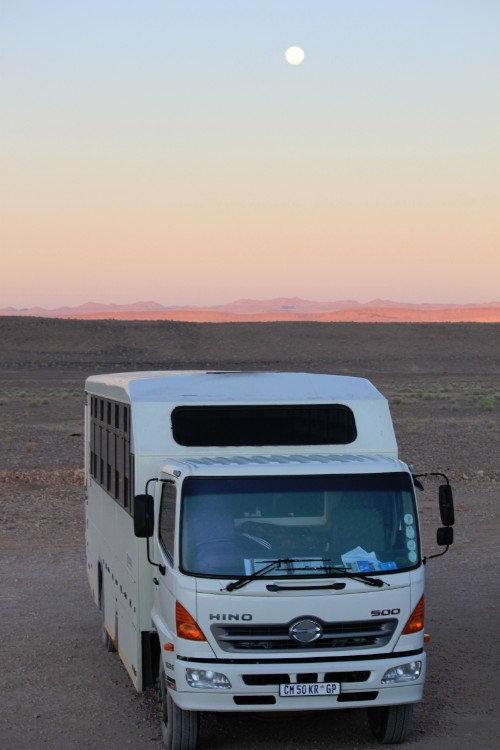
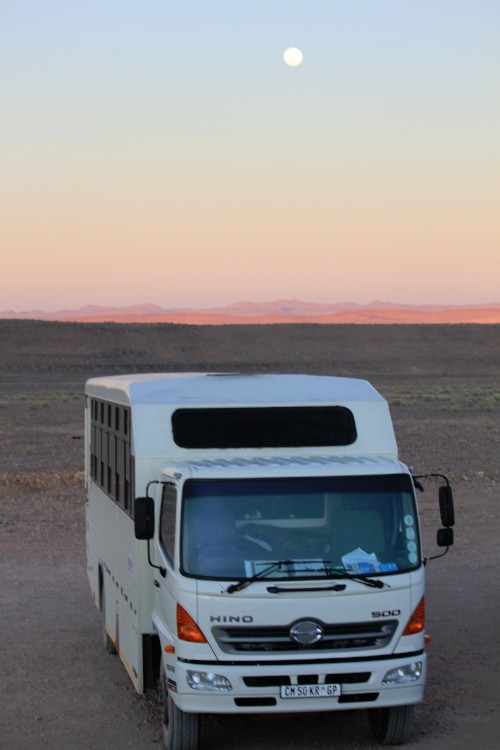
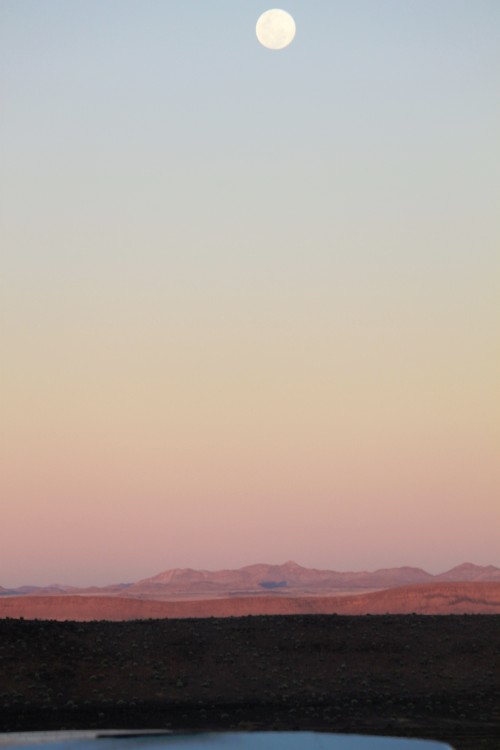
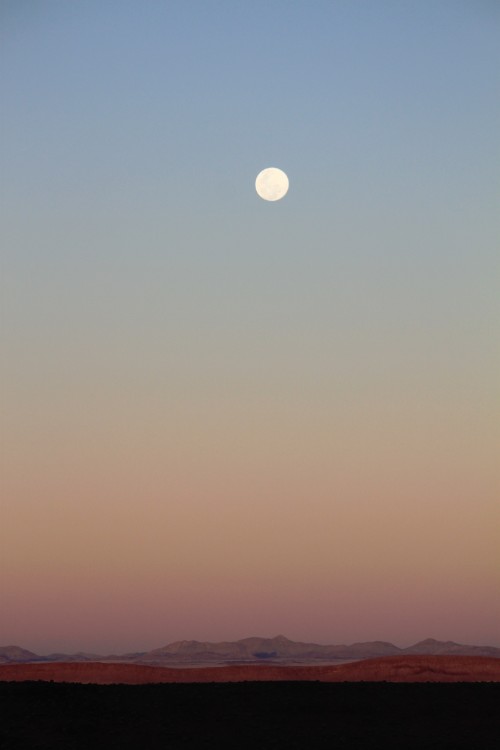
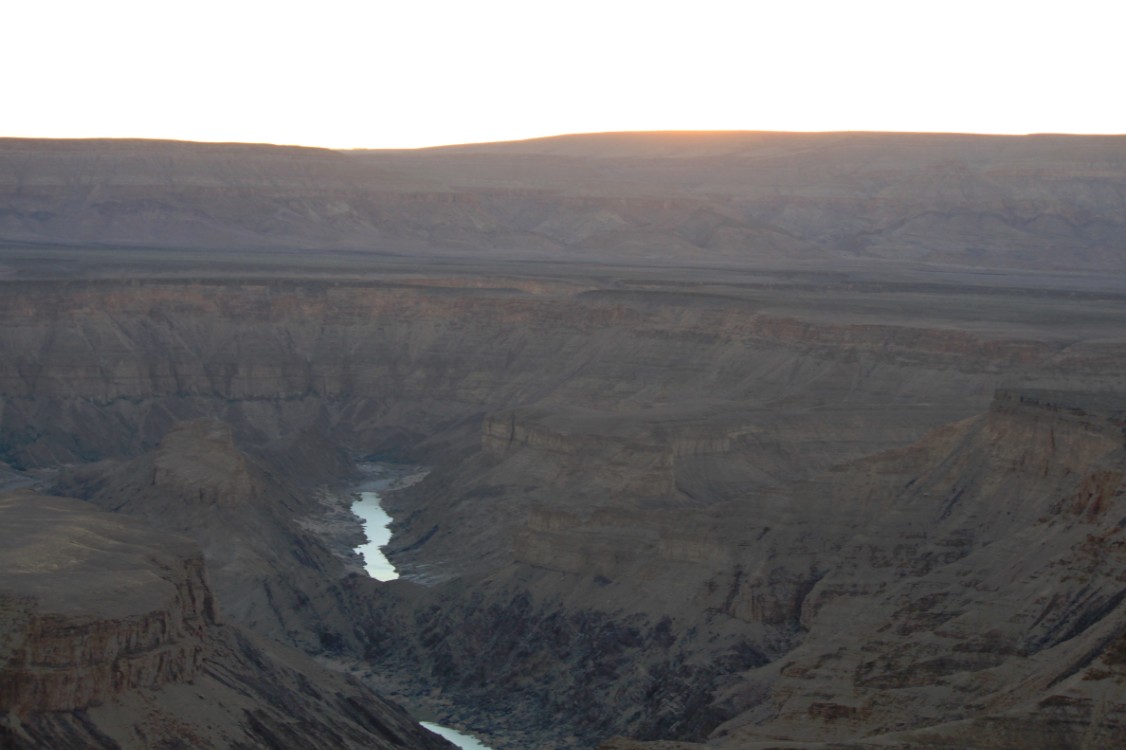
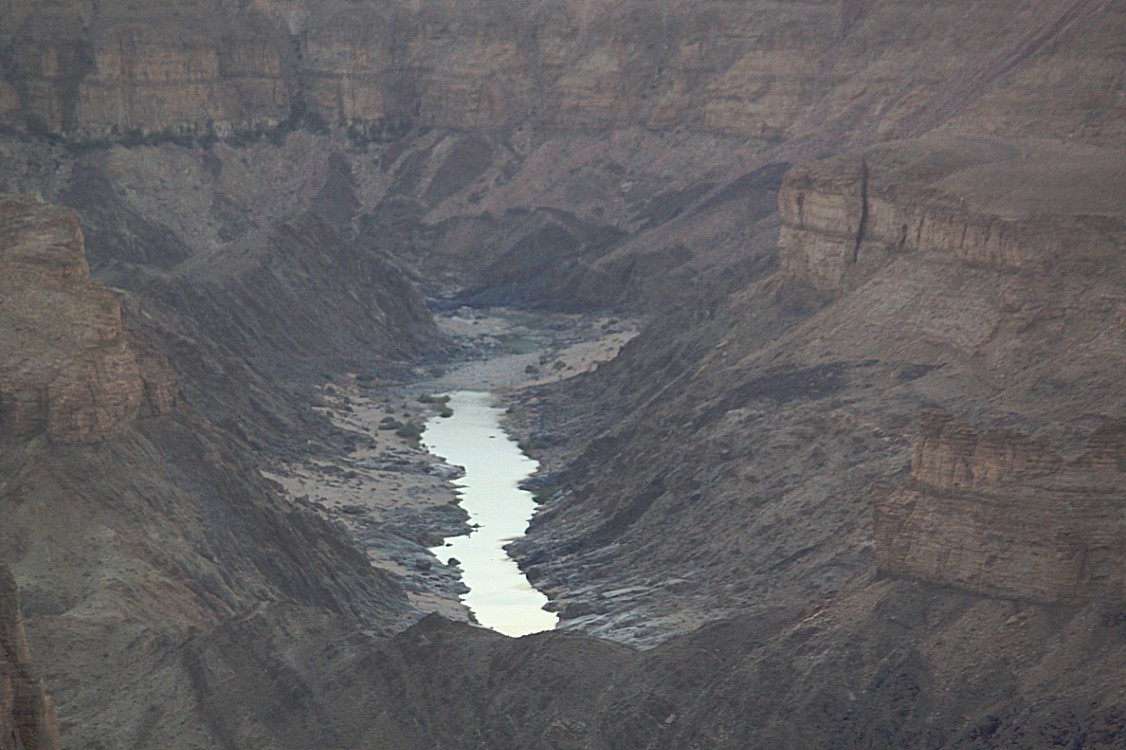
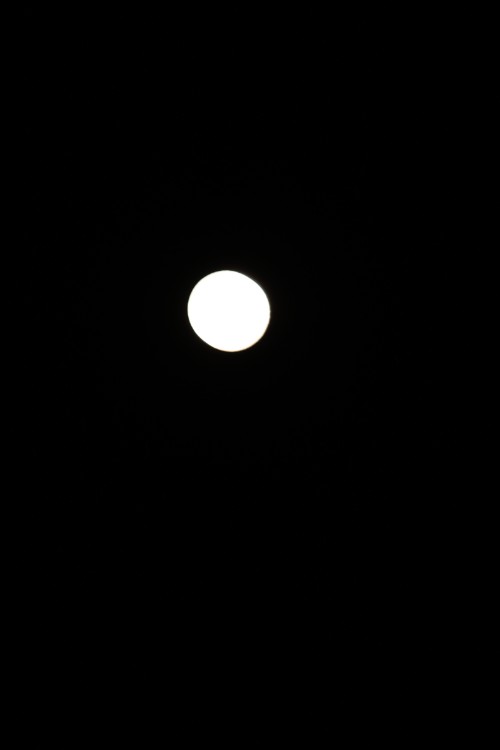
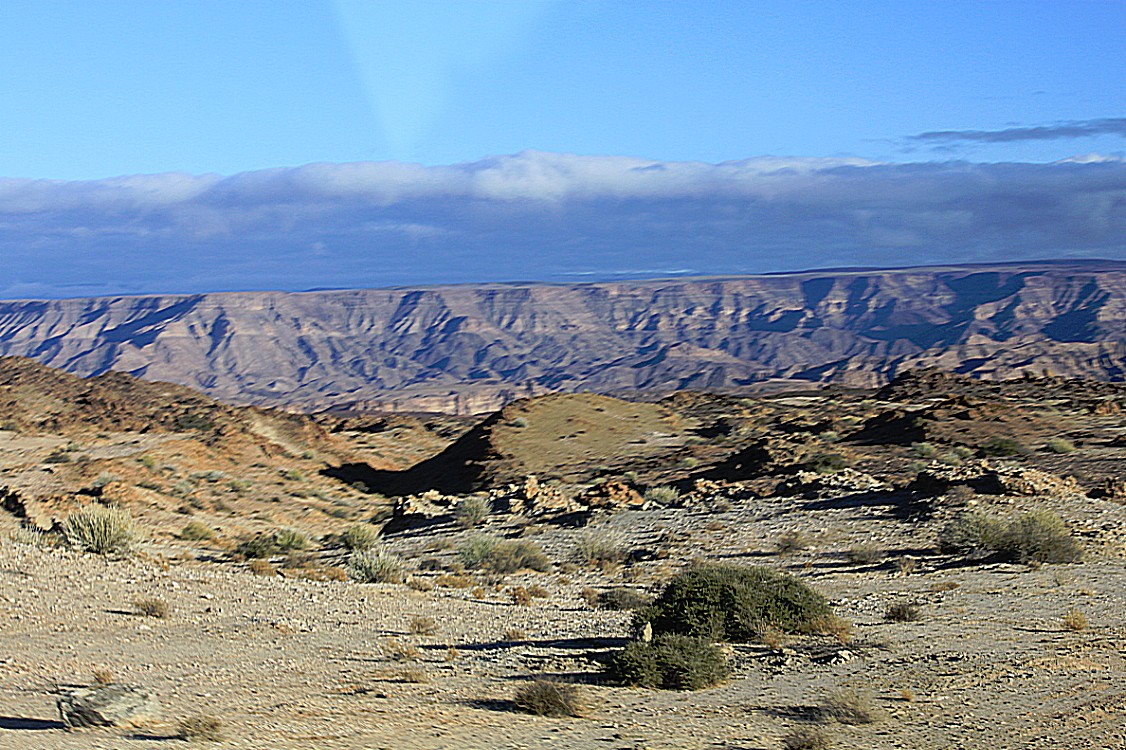
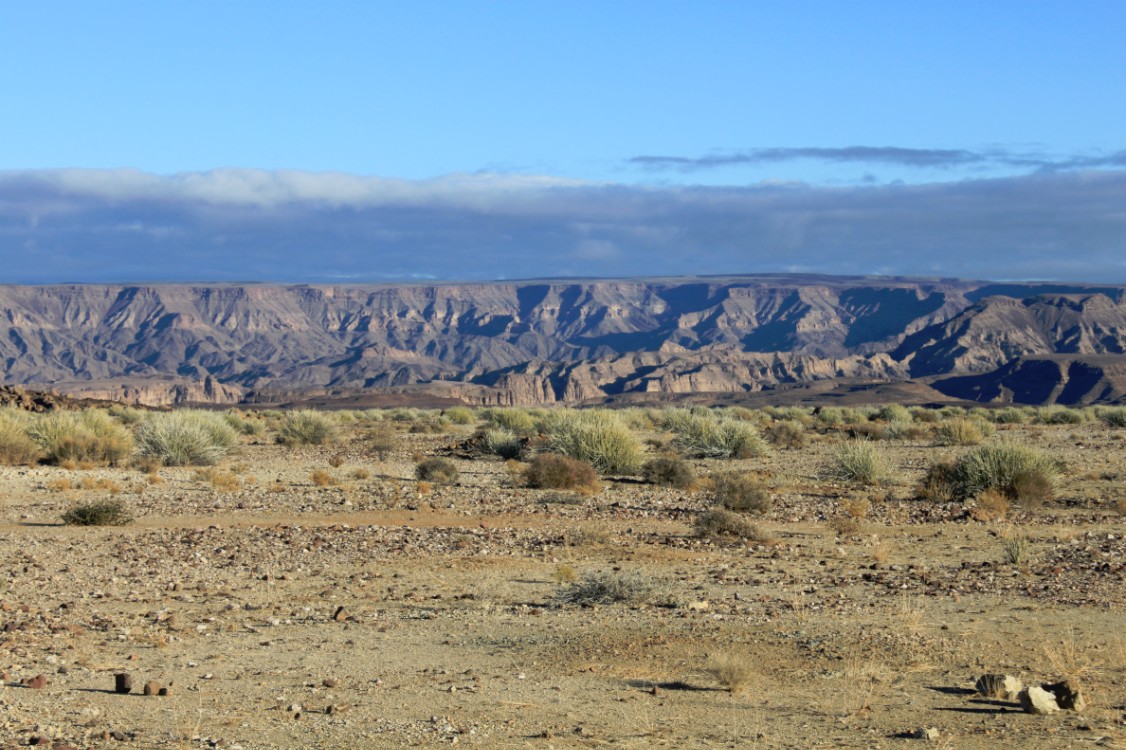
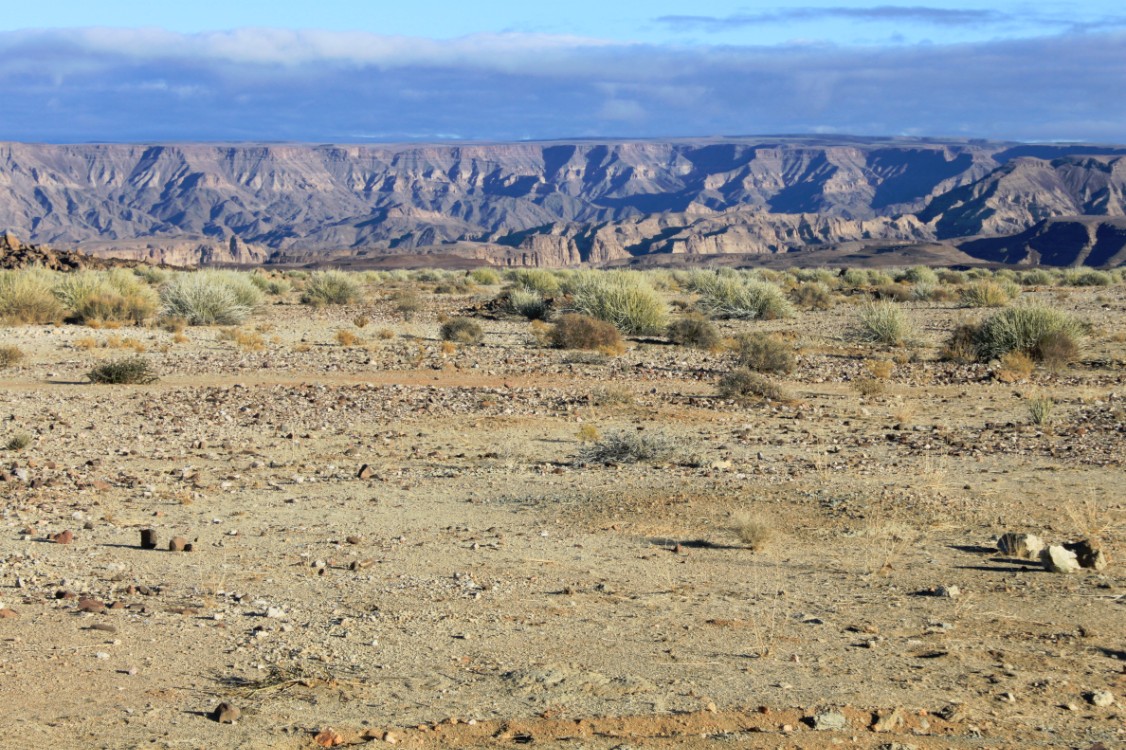
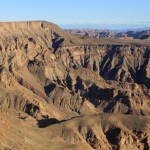
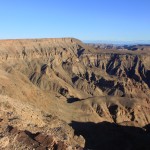
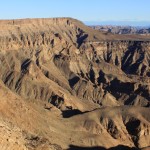
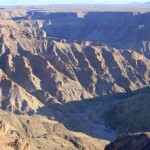
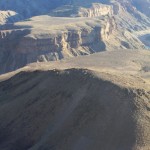
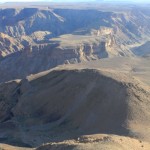
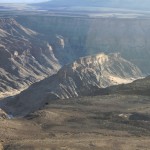
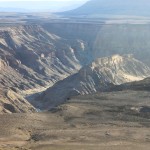
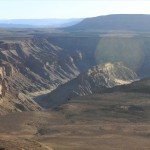
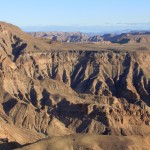
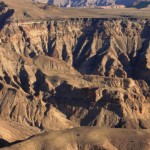
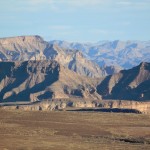
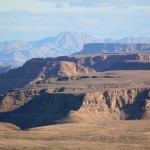
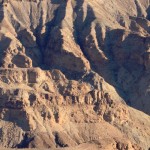
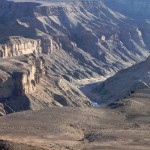
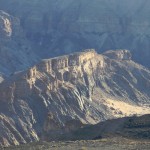
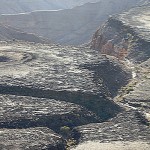
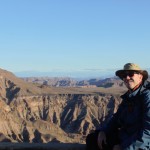
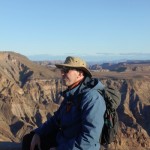
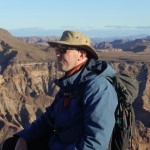
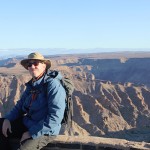
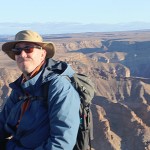
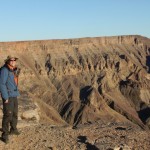
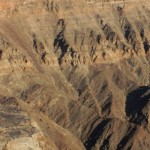
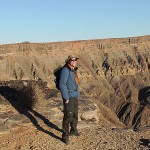
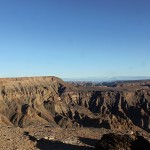
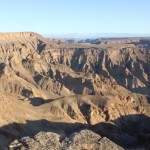
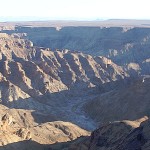
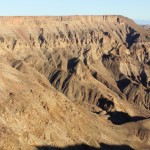
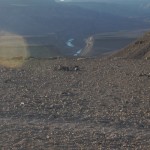
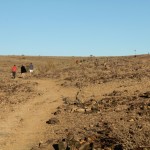
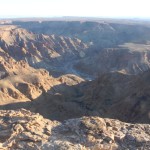
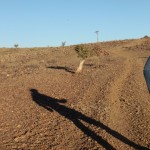
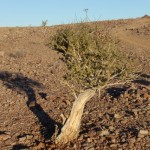
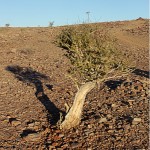
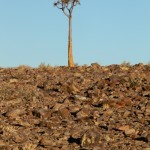
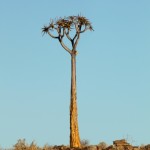
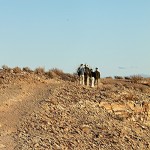
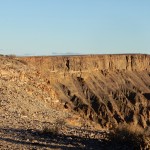
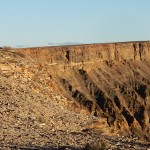
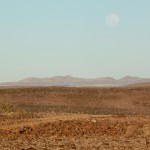
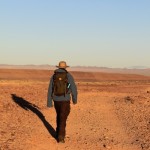
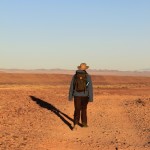
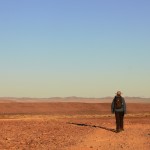
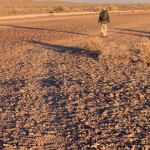
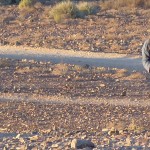
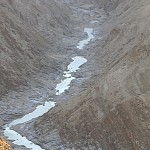
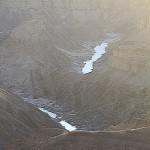
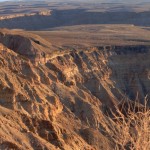
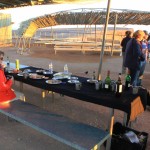
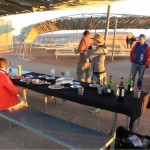
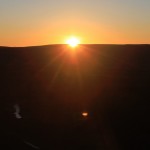
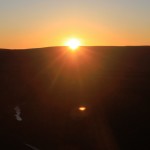
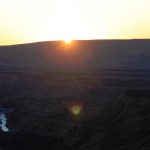
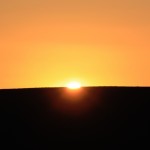
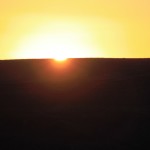
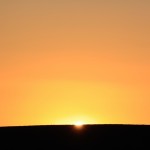
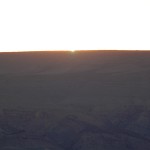
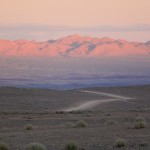
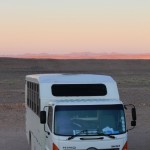
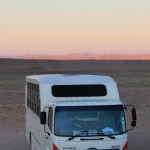
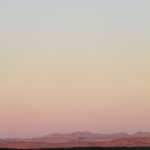
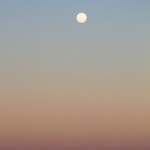
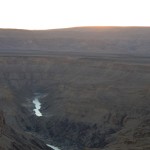
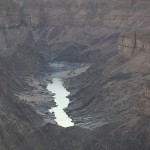
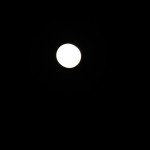
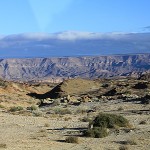
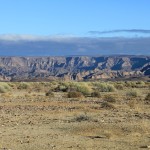
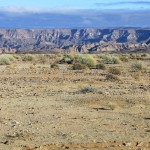
Hoi @karlijntravels Dankjewel. Zeker doen! Namibie is echt een prachtland 🙂 Ja en er komt nog veel meer moois aan de komende periode. Heb vanochtend nog weer een nieuwe blogpost toegevoegd. Ik probeer elke vrijdag een blog gereed te hebben. Wel lastig soms met meer dan 5000 foto’s door te worstelen. Was mijn 1e reis met digitale camera 😉 Je hebt trouwens de nieuwe optie op m’n blog om reacties te schrijven ingewijd 😀 Is nog een test maar ik wil die nu bij alle nieuwe blogposts toe voegen 🙂 Groeten en veel plezier op Hawai
Wat een prachtige reis was dit! Namibië stond al hoog op mijn verlanglijst, maar nu zeker. Wie weet, volgend jaar of het jaar erop 🙂